beginner's guide to literary analysis
Understanding literature & how to write literary analysis.
Literary analysis is the foundation of every college and high school English class. Once you can comprehend written work and respond to it, the next step is to learn how to think critically and complexly about a work of literature in order to analyze its elements and establish ideas about its meaning.
If that sounds daunting, it shouldn’t. Literary analysis is really just a way of thinking creatively about what you read. The practice takes you beyond the storyline and into the motives behind it.
While an author might have had a specific intention when they wrote their book, there’s still no right or wrong way to analyze a literary text—just your way. You can use literary theories, which act as “lenses” through which you can view a text. Or you can use your own creativity and critical thinking to identify a literary device or pattern in a text and weave that insight into your own argument about the text’s underlying meaning.
Now, if that sounds fun, it should , because it is. Here, we’ll lay the groundwork for performing literary analysis, including when writing analytical essays, to help you read books like a critic.

What Is Literary Analysis?
As the name suggests, literary analysis is an analysis of a work, whether that’s a novel, play, short story, or poem. Any analysis requires breaking the content into its component parts and then examining how those parts operate independently and as a whole. In literary analysis, those parts can be different devices and elements—such as plot, setting, themes, symbols, etcetera—as well as elements of style, like point of view or tone.
When performing analysis, you consider some of these different elements of the text and then form an argument for why the author chose to use them. You can do so while reading and during class discussion, but it’s particularly important when writing essays.
Literary analysis is notably distinct from summary. When you write a summary , you efficiently describe the work’s main ideas or plot points in order to establish an overview of the work. While you might use elements of summary when writing analysis, you should do so minimally. You can reference a plot line to make a point, but it should be done so quickly so you can focus on why that plot line matters . In summary (see what we did there?), a summary focuses on the “ what ” of a text, while analysis turns attention to the “ how ” and “ why .”
While literary analysis can be broad, covering themes across an entire work, it can also be very specific, and sometimes the best analysis is just that. Literary critics have written thousands of words about the meaning of an author’s single word choice; while you might not want to be quite that particular, there’s a lot to be said for digging deep in literary analysis, rather than wide.
Although you’re forming your own argument about the work, it’s not your opinion . You should avoid passing judgment on the piece and instead objectively consider what the author intended, how they went about executing it, and whether or not they were successful in doing so. Literary criticism is similar to literary analysis, but it is different in that it does pass judgement on the work. Criticism can also consider literature more broadly, without focusing on a singular work.
Once you understand what constitutes (and doesn’t constitute) literary analysis, it’s easy to identify it. Here are some examples of literary analysis and its oft-confused counterparts:
Summary: In “The Fall of the House of Usher,” the narrator visits his friend Roderick Usher and witnesses his sister escape a horrible fate.
Opinion: In “The Fall of the House of Usher,” Poe uses his great Gothic writing to establish a sense of spookiness that is enjoyable to read.
Literary Analysis: “Throughout ‘The Fall of the House of Usher,’ Poe foreshadows the fate of Madeline by creating a sense of claustrophobia for the reader through symbols, such as in the narrator’s inability to leave and the labyrinthine nature of the house.
In summary, literary analysis is:
- Breaking a work into its components
- Identifying what those components are and how they work in the text
- Developing an understanding of how they work together to achieve a goal
- Not an opinion, but subjective
- Not a summary, though summary can be used in passing
- Best when it deeply, rather than broadly, analyzes a literary element
Literary Analysis and Other Works
As discussed above, literary analysis is often performed upon a single work—but it doesn’t have to be. It can also be performed across works to consider the interplay of two or more texts. Regardless of whether or not the works were written about the same thing, or even within the same time period, they can have an influence on one another or a connection that’s worth exploring. And reading two or more texts side by side can help you to develop insights through comparison and contrast.
For example, Paradise Lost is an epic poem written in the 17th century, based largely on biblical narratives written some 700 years before and which later influenced 19th century poet John Keats. The interplay of works can be obvious, as here, or entirely the inspiration of the analyst. As an example of the latter, you could compare and contrast the writing styles of Ralph Waldo Emerson and Edgar Allan Poe who, while contemporaries in terms of time, were vastly different in their content.
Additionally, literary analysis can be performed between a work and its context. Authors are often speaking to the larger context of their times, be that social, political, religious, economic, or artistic. A valid and interesting form is to compare the author’s context to the work, which is done by identifying and analyzing elements that are used to make an argument about the writer’s time or experience.
For example, you could write an essay about how Hemingway’s struggles with mental health and paranoia influenced his later work, or how his involvement in the Spanish Civil War influenced his early work. One approach focuses more on his personal experience, while the other turns to the context of his times—both are valid.
Why Does Literary Analysis Matter?
Sometimes an author wrote a work of literature strictly for entertainment’s sake, but more often than not, they meant something more. Whether that was a missive on world peace, commentary about femininity, or an allusion to their experience as an only child, the author probably wrote their work for a reason, and understanding that reason—or the many reasons—can actually make reading a lot more meaningful.
Performing literary analysis as a form of study unquestionably makes you a better reader. It’s also likely that it will improve other skills, too, like critical thinking, creativity, debate, and reasoning.
At its grandest and most idealistic, literary analysis even has the ability to make the world a better place. By reading and analyzing works of literature, you are able to more fully comprehend the perspectives of others. Cumulatively, you’ll broaden your own perspectives and contribute more effectively to the things that matter to you.
Literary Terms to Know for Literary Analysis
There are hundreds of literary devices you could consider during your literary analysis, but there are some key tools most writers utilize to achieve their purpose—and therefore you need to know in order to understand that purpose. These common devices include:
- Characters: The people (or entities) who play roles in the work. The protagonist is the main character in the work.
- Conflict: The conflict is the driving force behind the plot, the event that causes action in the narrative, usually on the part of the protagonist
- Context : The broader circumstances surrounding the work political and social climate in which it was written or the experience of the author. It can also refer to internal context, and the details presented by the narrator
- Diction : The word choice used by the narrator or characters
- Genre: A category of literature characterized by agreed upon similarities in the works, such as subject matter and tone
- Imagery : The descriptive or figurative language used to paint a picture in the reader’s mind so they can picture the story’s plot, characters, and setting
- Metaphor: A figure of speech that uses comparison between two unlike objects for dramatic or poetic effect
- Narrator: The person who tells the story. Sometimes they are a character within the story, but sometimes they are omniscient and removed from the plot.
- Plot : The storyline of the work
- Point of view: The perspective taken by the narrator, which skews the perspective of the reader
- Setting : The time and place in which the story takes place. This can include elements like the time period, weather, time of year or day, and social or economic conditions
- Symbol : An object, person, or place that represents an abstract idea that is greater than its literal meaning
- Syntax : The structure of a sentence, either narration or dialogue, and the tone it implies
- Theme : A recurring subject or message within the work, often commentary on larger societal or cultural ideas
- Tone : The feeling, attitude, or mood the text presents
How to Perform Literary Analysis
Step 1: read the text thoroughly.
Literary analysis begins with the literature itself, which means performing a close reading of the text. As you read, you should focus on the work. That means putting away distractions (sorry, smartphone) and dedicating a period of time to the task at hand.
It’s also important that you don’t skim or speed read. While those are helpful skills, they don’t apply to literary analysis—or at least not this stage.
Step 2: Take Notes as You Read
As you read the work, take notes about different literary elements and devices that stand out to you. Whether you highlight or underline in text, use sticky note tabs to mark pages and passages, or handwrite your thoughts in a notebook, you should capture your thoughts and the parts of the text to which they correspond. This—the act of noticing things about a literary work—is literary analysis.
Step 3: Notice Patterns
As you read the work, you’ll begin to notice patterns in the way the author deploys language, themes, and symbols to build their plot and characters. As you read and these patterns take shape, begin to consider what they could mean and how they might fit together.
As you identify these patterns, as well as other elements that catch your interest, be sure to record them in your notes or text. Some examples include:
- Circle or underline words or terms that you notice the author uses frequently, whether those are nouns (like “eyes” or “road”) or adjectives (like “yellow” or “lush”).
- Highlight phrases that give you the same kind of feeling. For example, if the narrator describes an “overcast sky,” a “dreary morning,” and a “dark, quiet room,” the words aren’t the same, but the feeling they impart and setting they develop are similar.
- Underline quotes or prose that define a character’s personality or their role in the text.
- Use sticky tabs to color code different elements of the text, such as specific settings or a shift in the point of view.
By noting these patterns, comprehensive symbols, metaphors, and ideas will begin to come into focus.
Step 4: Consider the Work as a Whole, and Ask Questions
This is a step that you can do either as you read, or after you finish the text. The point is to begin to identify the aspects of the work that most interest you, and you could therefore analyze in writing or discussion.
Questions you could ask yourself include:
- What aspects of the text do I not understand?
- What parts of the narrative or writing struck me most?
- What patterns did I notice?
- What did the author accomplish really well?
- What did I find lacking?
- Did I notice any contradictions or anything that felt out of place?
- What was the purpose of the minor characters?
- What tone did the author choose, and why?
The answers to these and more questions will lead you to your arguments about the text.
Step 5: Return to Your Notes and the Text for Evidence
As you identify the argument you want to make (especially if you’re preparing for an essay), return to your notes to see if you already have supporting evidence for your argument. That’s why it’s so important to take notes or mark passages as you read—you’ll thank yourself later!
If you’re preparing to write an essay, you’ll use these passages and ideas to bolster your argument—aka, your thesis. There will likely be multiple different passages you can use to strengthen multiple different aspects of your argument. Just be sure to cite the text correctly!
If you’re preparing for class, your notes will also be invaluable. When your teacher or professor leads the conversation in the direction of your ideas or arguments, you’ll be able to not only proffer that idea but back it up with textual evidence. That’s an A+ in class participation.
Step 6: Connect These Ideas Across the Narrative
Whether you’re in class or writing an essay, literary analysis isn’t complete until you’ve considered the way these ideas interact and contribute to the work as a whole. You can find and present evidence, but you still have to explain how those elements work together and make up your argument.
How to Write a Literary Analysis Essay
When conducting literary analysis while reading a text or discussing it in class, you can pivot easily from one argument to another (or even switch sides if a classmate or teacher makes a compelling enough argument).
But when writing literary analysis, your objective is to propose a specific, arguable thesis and convincingly defend it. In order to do so, you need to fortify your argument with evidence from the text (and perhaps secondary sources) and an authoritative tone.
A successful literary analysis essay depends equally on a thoughtful thesis, supportive analysis, and presenting these elements masterfully. We’ll review how to accomplish these objectives below.
Step 1: Read the Text. Maybe Read It Again.
Constructing an astute analytical essay requires a thorough knowledge of the text. As you read, be sure to note any passages, quotes, or ideas that stand out. These could serve as the future foundation of your thesis statement. Noting these sections now will help you when you need to gather evidence.
The more familiar you become with the text, the better (and easier!) your essay will be. Familiarity with the text allows you to speak (or in this case, write) to it confidently. If you only skim the book, your lack of rich understanding will be evident in your essay. Alternatively, if you read the text closely—especially if you read it more than once, or at least carefully revisit important passages—your own writing will be filled with insight that goes beyond a basic understanding of the storyline.
Step 2: Brainstorm Potential Topics
Because you took detailed notes while reading the text, you should have a list of potential topics at the ready. Take time to review your notes, highlighting any ideas or questions you had that feel interesting. You should also return to the text and look for any passages that stand out to you.
When considering potential topics, you should prioritize ideas that you find interesting. It won’t only make the whole process of writing an essay more fun, your enthusiasm for the topic will probably improve the quality of your argument, and maybe even your writing. Just like it’s obvious when a topic interests you in a conversation, it’s obvious when a topic interests the writer of an essay (and even more obvious when it doesn’t).
Your topic ideas should also be specific, unique, and arguable. A good way to think of topics is that they’re the answer to fairly specific questions. As you begin to brainstorm, first think of questions you have about the text. Questions might focus on the plot, such as: Why did the author choose to deviate from the projected storyline? Or why did a character’s role in the narrative shift? Questions might also consider the use of a literary device, such as: Why does the narrator frequently repeat a phrase or comment on a symbol? Or why did the author choose to switch points of view each chapter?
Once you have a thesis question , you can begin brainstorming answers—aka, potential thesis statements . At this point, your answers can be fairly broad. Once you land on a question-statement combination that feels right, you’ll then look for evidence in the text that supports your answer (and helps you define and narrow your thesis statement).
For example, after reading “ The Fall of the House of Usher ,” you might be wondering, Why are Roderick and Madeline twins?, Or even: Why does their relationship feel so creepy?” Maybe you noticed (and noted) that the narrator was surprised to find out they were twins, or perhaps you found that the narrator’s tone tended to shift and become more anxious when discussing the interactions of the twins.
Once you come up with your thesis question, you can identify a broad answer, which will become the basis for your thesis statement. In response to the questions above, your answer might be, “Poe emphasizes the close relationship of Roderick and Madeline to foreshadow that their deaths will be close, too.”
Step 3: Gather Evidence
Once you have your topic (or you’ve narrowed it down to two or three), return to the text (yes, again) to see what evidence you can find to support it. If you’re thinking of writing about the relationship between Roderick and Madeline in “The Fall of the House of Usher,” look for instances where they engaged in the text.
This is when your knowledge of literary devices comes in clutch. Carefully study the language around each event in the text that might be relevant to your topic. How does Poe’s diction or syntax change during the interactions of the siblings? How does the setting reflect or contribute to their relationship? What imagery or symbols appear when Roderick and Madeline are together?
By finding and studying evidence within the text, you’ll strengthen your topic argument—or, just as valuably, discount the topics that aren’t strong enough for analysis.

Step 4: Consider Secondary Sources
In addition to returning to the literary work you’re studying for evidence, you can also consider secondary sources that reference or speak to the work. These can be articles from journals you find on JSTOR, books that consider the work or its context, or articles your teacher shared in class.
While you can use these secondary sources to further support your idea, you should not overuse them. Make sure your topic remains entirely differentiated from that presented in the source.
Step 5: Write a Working Thesis Statement
Once you’ve gathered evidence and narrowed down your topic, you’re ready to refine that topic into a thesis statement. As you continue to outline and write your paper, this thesis statement will likely change slightly, but this initial draft will serve as the foundation of your essay. It’s like your north star: Everything you write in your essay is leading you back to your thesis.
Writing a great thesis statement requires some real finesse. A successful thesis statement is:
- Debatable : You shouldn’t simply summarize or make an obvious statement about the work. Instead, your thesis statement should take a stand on an issue or make a claim that is open to argument. You’ll spend your essay debating—and proving—your argument.
- Demonstrable : You need to be able to prove, through evidence, that your thesis statement is true. That means you have to have passages from the text and correlative analysis ready to convince the reader that you’re right.
- Specific : In most cases, successfully addressing a theme that encompasses a work in its entirety would require a book-length essay. Instead, identify a thesis statement that addresses specific elements of the work, such as a relationship between characters, a repeating symbol, a key setting, or even something really specific like the speaking style of a character.
Example: By depicting the relationship between Roderick and Madeline to be stifling and almost otherworldly in its closeness, Poe foreshadows both Madeline’s fate and Roderick’s inability to choose a different fate for himself.
Step 6: Write an Outline
You have your thesis, you have your evidence—but how do you put them together? A great thesis statement (and therefore a great essay) will have multiple arguments supporting it, presenting different kinds of evidence that all contribute to the singular, main idea presented in your thesis.
Review your evidence and identify these different arguments, then organize the evidence into categories based on the argument they support. These ideas and evidence will become the body paragraphs of your essay.
For example, if you were writing about Roderick and Madeline as in the example above, you would pull evidence from the text, such as the narrator’s realization of their relationship as twins; examples where the narrator’s tone of voice shifts when discussing their relationship; imagery, like the sounds Roderick hears as Madeline tries to escape; and Poe’s tendency to use doubles and twins in his other writings to create the same spooky effect. All of these are separate strains of the same argument, and can be clearly organized into sections of an outline.
Step 7: Write Your Introduction
Your introduction serves a few very important purposes that essentially set the scene for the reader:
- Establish context. Sure, your reader has probably read the work. But you still want to remind them of the scene, characters, or elements you’ll be discussing.
- Present your thesis statement. Your thesis statement is the backbone of your analytical paper. You need to present it clearly at the outset so that the reader understands what every argument you make is aimed at.
- Offer a mini-outline. While you don’t want to show all your cards just yet, you do want to preview some of the evidence you’ll be using to support your thesis so that the reader has a roadmap of where they’re going.
Step 8: Write Your Body Paragraphs
Thanks to steps one through seven, you’ve already set yourself up for success. You have clearly outlined arguments and evidence to support them. Now it’s time to translate those into authoritative and confident prose.
When presenting each idea, begin with a topic sentence that encapsulates the argument you’re about to make (sort of like a mini-thesis statement). Then present your evidence and explanations of that evidence that contribute to that argument. Present enough material to prove your point, but don’t feel like you necessarily have to point out every single instance in the text where this element takes place. For example, if you’re highlighting a symbol that repeats throughout the narrative, choose two or three passages where it is used most effectively, rather than trying to squeeze in all ten times it appears.
While you should have clearly defined arguments, the essay should still move logically and fluidly from one argument to the next. Try to avoid choppy paragraphs that feel disjointed; every idea and argument should feel connected to the last, and, as a group, connected to your thesis. A great way to connect the ideas from one paragraph to the next is with transition words and phrases, such as:
- Furthermore
- In addition
- On the other hand
- Conversely

Step 9: Write Your Conclusion
Your conclusion is more than a summary of your essay's parts, but it’s also not a place to present brand new ideas not already discussed in your essay. Instead, your conclusion should return to your thesis (without repeating it verbatim) and point to why this all matters. If writing about the siblings in “The Fall of the House of Usher,” for example, you could point out that the utilization of twins and doubles is a common literary element of Poe’s work that contributes to the definitive eeriness of Gothic literature.
While you might speak to larger ideas in your conclusion, be wary of getting too macro. Your conclusion should still be supported by all of the ideas that preceded it.
Step 10: Revise, Revise, Revise
Of course you should proofread your literary analysis essay before you turn it in. But you should also edit the content to make sure every piece of evidence and every explanation directly supports your thesis as effectively and efficiently as possible.
Sometimes, this might mean actually adapting your thesis a bit to the rest of your essay. At other times, it means removing redundant examples or paraphrasing quotations. Make sure every sentence is valuable, and remove those that aren’t.
Other Resources for Literary Analysis
With these skills and suggestions, you’re well on your way to practicing and writing literary analysis. But if you don’t have a firm grasp on the concepts discussed above—such as literary devices or even the content of the text you’re analyzing—it will still feel difficult to produce insightful analysis.
If you’d like to sharpen the tools in your literature toolbox, there are plenty of other resources to help you do so:
- Check out our expansive library of Literary Devices . These could provide you with a deeper understanding of the basic devices discussed above or introduce you to new concepts sure to impress your professors ( anagnorisis , anyone?).
- This Academic Citation Resource Guide ensures you properly cite any work you reference in your analytical essay.
- Our English Homework Help Guide will point you to dozens of resources that can help you perform analysis, from critical reading strategies to poetry helpers.
- This Grammar Education Resource Guide will direct you to plenty of resources to refine your grammar and writing (definitely important for getting an A+ on that paper).
Of course, you should know the text inside and out before you begin writing your analysis. In order to develop a true understanding of the work, read through its corresponding SuperSummary study guide . Doing so will help you truly comprehend the plot, as well as provide some inspirational ideas for your analysis.
How to Write a Literary Analysis Essay: An Insightful Guide

Welcome to the fascinating world of writing a literary analysis essay – where words come alive, stories unravel, and your insights take center stage. Have you ever wondered how to decode the deeper meanings of your favorite books or express your thoughts in a way that captivates your reader? Well, you're in the right place. In this article, we're diving headfirst into essays writing, breaking down the complexities, and showing you how to craft an essay that not only impresses your teacher but also makes you appreciate literature in a whole new light.
What Is Literary Analysis Essay
According to a literary analysis essay definition, it is a written examination and interpretation of a literary work, typically dissecting its elements such as plot, characters, themes, and symbolism. Going beyond summarization, this type of essay delves into the intricacies of a text, aiming to uncover deeper meanings, explore the author's intentions, and critically evaluate the literary techniques employed. It requires the writer to engage in thoughtful analysis, supported by evidence from the text, to unveil the layers of significance within the work. Through this process, the essay not only offers a nuanced understanding of the literature but also encourages readers to appreciate the artistry and complexity inherent in written narratives. Those students who are not ready to work on such an assignment can simply say, ‘ write my papers ,’ and our experts will handle the task shortly.
Is This Your First Time Writing a Literary Analysis Essay?
Play it safe – let professional writers show you how it’s done!
What Is the Purpose of a Literary Analysis Essay
The purpose of a literary analysis essay is to delve deeply into a literary work, examining its various elements and uncovering layers of meaning beyond the surface narrative. Through critical analysis and interpretation, this type of essay aims to illuminate the themes, characters, settings, and literary devices employed by the author, offering insights into their intentions and the broader significance of the text. By dissecting the nuances of the work, a literary analysis encourages readers to engage with literature on a deeper level, fostering a richer understanding of the human experience, societal issues, and the complexities of language and storytelling. Ultimately, the essay serves as a platform for readers to explore and appreciate the artistry and impact of literature while honing their analytical and critical thinking skills. When you have time, study our guide regarding how to write an analytical essay , which will shed light on more important academic writing aspects.
.webp)
Literary Analysis Outline
Here's a basic outline for this type of essay:
Introduction
- Hook: Engage the reader with a compelling quote, question, or anecdote related to the literary work.
- Background Information: Provide relevant information about the author, the title, and the context of the work.
- Thesis Statement: Clearly state the main point or argument of your analysis.
Body Paragraph 1: Analysis of the Plot
- Provide a brief summary of the plot.
- Analyze key events, plot twists, and their significance.
- Discuss the structure of the narrative and how it contributes to the overall theme.
Body Paragraph 2: Character Analysis
- Introduce and describe the main characters.
- Analyze their traits, motivations, and relationships.
- Discuss how the characters contribute to the development of the story.
Body Paragraph 3: Theme Exploration
- Identify and discuss the major themes in the literary work.
- Provide examples and evidence from the text to support your analysis.
- Explore the deeper meanings and messages conveyed through the themes.
Body Paragraph 4: Literary Devices and Techniques
- Identify and analyze literary devices such as symbolism, imagery, metaphors, and foreshadowing.
- Discuss how these elements enhance the overall impact of the work.
- Summarize the main points discussed in the body paragraphs.
- Restate the thesis in a fresh way.
- Offer final insights or reflections on the literary work's significance and enduring relevance.
Optional: Additional Considerations
- Discuss the cultural or historical context that may influence the interpretation of the work.
- Address any alternative perspectives or counterarguments.
- Offer recommendations for further reading or exploration related to the literary work.
We recommend analyzing this article about how to start a reflection paper to gain extra competence in the domain of school and college writing.
Literary Analysis Essay Topics
Before you commence the assignment, it’s important to find a great topic. For your inspiration, our writers shared 20 literary analysis essay ideas that you can develop in a written form within the framework of your current task.
- Symbolism in "The Great Gatsby."
- Character development in "Hamlet."
- Themes in "To Kill a Mockingbird."
- The significance of the southern setting in "The Sound and the Fury."
- Foreshadowing in "Of Mice and Men."
- Point of view in "The Catcher in the Rye."
- Irony in "Othello."
- Social class in "Pride and Prejudice."
- The motif of light and dark in "Romeo and Juliet."
- Archetypes in "The Hero’s Journey" in "The Hobbit."
- The tragic flaw of Macbeth in "Macbeth."
- The use of nature imagery in "Wuthering Heights."
- The symbolism of the green light in "The Great Gatsby."
- The role of technology in "Fahrenheit 451."
- Character motivations in "The Scarlet Letter."
- The exploration of identity in "The Invisible Man."
- The impact of war on characters in "All Quiet on the Western Front."
- The role of dreams in "A Raisin in the Sun."
- The representation of women in "Jane Eyre."
- The symbolism of the mockingbird in "To Kill a Mockingbird."
How to Write a Literary Analysis Essay Step by Step
In this section, we're ditching the jargon and breaking down the process into simple, actionable steps. Whether you're a wordsmith in the making or someone feeling a bit lost in the world of dissecting literature, we've got your back. Think of this as your roadmap, helping you navigate through characters, themes, and all the juicy stuff that makes a story tick. So, grab your metaphorical magnifying glass and let's dive into the art of making sense of written words without the unnecessary fuss!
.webp)
Step 1: Choose Your Text and Topic
Before actually writing a literary analysis essay, select a literary work that piques your interest or aligns with your academic requirements. Whether it's a novel, play, or poem, opt for a piece that offers rich content for analysis. Once you've chosen your text, narrow down a specific topic or theme within it that you find compelling. This initial step sets the stage for a focused and meaningful exploration. Use our analytical essay writing service to gain the upper hand when tackling this assignment.
Step 2: Create a Strong Thesis Statement
Write a clear and concise literary analysis essay introduction with a thesis statement that outlines the main argument or interpretation you'll be presenting in your essay. This statement should encapsulate your perspective on the chosen topic, providing a roadmap for both you and your readers. A well-defined thesis serves as the backbone of your literary analysis, guiding your analysis and ensuring a cohesive and purposeful essay. In this guide on how to write an essay introduction , you will find more information on this matter.
Step 3: Conduct Textual Analysis
Delve into the chosen literary work and conduct a thorough textual analysis. Pay attention to key elements such as characters, plot, setting, and literary devices employed by the author. Extract relevant quotes and passages that support your thesis, and consider how each element contributes to the overall meaning of the work. By the way, are you working on your capstone or dissertation at the moment? If yes, see our thesis writing service , which is especially helpful for students dealing with long-format scholarly documents.
Step 4: Set the Stage with Context
Establish the context of your literary analysis essay by providing relevant background information on the chosen work. Briefly introduce the author, the time period, and any significant historical or cultural factors that may impact the interpretation of the text. Creating this contextual framework helps orient your readers and prepares them for the nuanced exploration that follows. By offering a snapshot of the broader landscape in which the literary work exists, you set the stage for a more informed and insightful analysis.
Step 5: Construct Analytical Body Paragraphs
Organize your analysis into well-structured body paragraphs. Each paragraph should focus on a specific aspect of your thesis, supported by evidence from the text. Analyze characters, themes, and literary devices individually, connecting each point back to your overarching argument. Use clear and concise language to convey your insights and interpretations effectively.
Step 6: Craft a Thoughtful Conclusion
Summarize your main points, restate your thesis in a new light, and offer final insights in a thoughtful conclusion. Avoid introducing new information in this section but rather emphasize the significance of your analysis and its broader implications. A well-written conclusion leaves a lasting impression and reinforces the value of your literary interpretation. At this point, you have everything you need to become a student who knows how to write a literary analysis essay from A to Z.
Literary Analysis Essay Do’s and Don’ts
- Develop a clear thesis statement.
- Use evidence from the text to support your analysis.
- Organize your essay logically with coherent paragraphs.
- Focus on specific elements like characters, themes, and literary devices.
- Engage with the text critically, questioning and probing meanings.
- Don't summarize the plot extensively; focus on analysis.
- Avoid vague or generic statements without supporting evidence.
- Don't introduce new ideas in the conclusion. Stick to summarizing.
- Avoid excessive quoting; provide brief, relevant excerpts.
- Don't rush; take the time to revise and edit for clarity.
Our college essay service can help you put the finger on any time-consuming or mind-boggling written assignment right now, so use it if you’re in writer’s block or desperately trying to fit into a schedule.
Literary Analysis Essay Writing Tips
Get ready to up your academic writing game! This section is packed with straightforward tips to help you sharpen your skills. Whether you're a senior year student or just a freshman, we've got you covered. From digging into themes to writing insightful interpretations, our tips are here to make your literary analyses shine. Let's dive in and boost your writing skills!
Maintain Consistent Tone and Style
- Keep a consistent tone throughout your essay, aligning with the formality or informality required. Ensure that your writing style complements the nature of your analysis, creating a cohesive and engaging reading experience for your audience.
Focus on Analysis, Not Summary
- Avoid lengthy plot summaries. Instead, delve into the 'why' and 'how' aspects of the text – analyzing characters, themes, and literary devices to uncover deeper meanings.
Provide Textual Evidence
- Support your analysis with concrete examples from the text. This strengthens your argument and demonstrates a close engagement with the literary work.
Organize Coherently
- Structure your essay logically with well-organized paragraphs. Each paragraph should explore a specific aspect of your analysis, contributing to the overall understanding of your thesis.
Critical Engagement
- Approach the text with a critical mindset. Question the author's choices, explore alternative interpretations, and analyze the implications of various literary elements.
Concise and Clear Language
- Express your ideas using clear and concise language. Avoid unnecessary jargon, and ensure that your analysis is easily understandable by a broader audience.
Revise and Edit
- Take the time to revise your essay for clarity and coherence. Check for grammar and spelling errors, and ensure that each paragraph contributes meaningfully to your overall analysis.
Time is running out? Pay for essay now, and it will be ready tomorrow or even today! We write all types of essays across dozens of academic disciplines, which means you can have any assignment finished expertly and without delays.
Literary Analysis Essay Example
Students might find a literary analysis essay example invaluable for several reasons. Firstly, it provides a practical demonstration of the theoretical concepts they learn in class, offering a tangible model of how to analyze and interpret literary elements effectively. Additionally, examples serve as templates, offering insights into the proper structure and organization of an essay. They help students grasp the application of critical thinking skills, showcasing how to dissect a text, identify themes, and support arguments with textual evidence.
Example 1: The Symbolism of Light and Darkness in Joseph Conrad's "Heart of Darkness"
This literary analysis of Joseph Conrad's "Heart of Darkness" explores the pervasive symbolism of light and darkness throughout the novel. Examining the journey of the protagonist, Marlow, and the character of Kurtz, the essay delves into the metaphorical implications of light and darkness as they represent moral ambiguity, the corrupting influence of power, and the ironic consequences of European imperialism.
Example 2: The Complex Portrait of Identity in Jhumpa Lahiri's "The Namesake"
This literary analysis of Jhumpa Lahiri's "The Namesake" explores the intricate layers of identity depicted in the novel, focusing on the protagonist Gogol Ganguli's navigation through the complexities of cultural assimilation and the immigrant experience. The essay delves into the symbolic significance of Gogol's name as a representation of the clash between his Bengali heritage and the American environment, examining the tension between tradition and modernity.
Final Thought
To sum it up, getting the hang of how to write a literary analysis essay is an experience that benefits both new and experienced writers. Throughout this guide, we've tried to simplify the process, offering practical insights and tips. Analyzing literature isn't just an academic exercise – it's a way to dive deeper into the richness of written expression. Now armed with these tools, you're not only prepared to analyze literature effectively but also to bring your unique perspectives to the ongoing discussion about the stories we encounter. Happy writing!
Haven’t Read the Literary Original Yet?
Don’t put off till tomorrow what you can order from our service today!
What Is the Purpose of a Literary Analysis Essay?
What is literary analysis essay, how to start a literary analysis essay.

is an expert in nursing and healthcare, with a strong background in history, law, and literature. Holding advanced degrees in nursing and public health, his analytical approach and comprehensive knowledge help students navigate complex topics. On EssayPro blog, Adam provides insightful articles on everything from historical analysis to the intricacies of healthcare policies. In his downtime, he enjoys historical documentaries and volunteering at local clinics.

Related Articles
.webp)

Writing A Literary Analysis Essay
- Library Resources
- Books & EBooks
- What is an Literary Analysis?
- Literary Devices & Terms
- Creating a Thesis Statement This link opens in a new window
- Using quotes or evidence in your essay
- APA Format This link opens in a new window
- MLA Format This link opens in a new window
- OER Resources
- Copyright, Plagiarism, and Fair Use
Video Links
Elements of a short story, Part 1
YouTube video
Elements of a short story, Part 2
online tools
Collaborative Mind Mapping – collaborative brainstorming site
Sample Literary Analysis Essay Outline
Paper Format and Structure

Analyzing Literature and writing a Literary Analysis
Literary Analysis are written in the third person point of view in present tense. Do not use the words I or you in the essay. Your instructor may have you choose from a list of literary works read in class or you can choose your own. Follow the required formatting and instructions of your instructor.
Writing & Analyzing process
First step: Choose a literary work or text. Read & Re-Read the text or short story. Determine the key point or purpose of the literature
Step two: Analyze key elements of the literary work. Determine how they fit in with the author's purpose.
Step three: Put all information together. Determine how all elements fit together towards the main theme of the literary work.
Step four: Brainstorm a list of potential topics. Create a thesis statement based on your analysis of the literary work.
Step five: search through the text or short story to find textual evidence to support your thesis. Gather information from different but relevant sources both from the text itself and other secondary sources to help to prove your point. All evidence found will be quoted and analyzed throughout your essay to help explain your argument to the reader.
Step six: Create and outline and begin the rough draft of your essay.
Step seven: revise and proofread. Write the final draft of essay
Step eight: include a reference or works cited page at the end of the essay and include in-text citations.
When analyzing a literary work pay close attention to the following:
Characters: A character is a person, animal, being, creature, or thing in a story.
- Protagonist : The main character of the story
- Antagonist : The villain of the story
- Love interest : the protagonist’s object of desire.
- Confidant : This type of character is the best friend or sidekick of the protagonist
- Foil – A foil is a character that has opposite character traits from another character and are meant to help highlight or bring out another’s positive or negative side.
- Flat – A flat character has one or two main traits, usually only all positive or negative.
- Dynamic character : A dynamic character is one who changes over the course of the story.
- Round character : These characters have many different traits, good and bad, making them more interesting.
- Static character : A static character does not noticeably change over the course of a story.
- Symbolic character : A symbolic character represents a concept or theme larger than themselves.
- Stock character : A stock character is an ordinary character with a fixed set of personality traits.
Setting: The setting is the period of time and geographic location in which a story takes place.
Plot: a literary term used to describe the events that make up a story
Theme: a universal idea, lesson, or message explored throughout a work of literature.
Dialogue: any communication between two characters
Imagery: a literary device that refers to the use of figurative language to evoke a sensory experience or create a picture with words for a reader.
Figures of Speech: A word or phrase that is used in a non-literal way to create an effect.
Tone: A literary device that reflects the writer's attitude toward the subject matter or audience of a literary work.
rhyme or rhythm: Rhyme is a literary device, featured particularly in poetry, in which identical or similar concluding syllables in different words are repeated. Rhythm can be described as the beat and pace of a poem
Point of view: the narrative voice through which a story is told.
- Limited – the narrator sees only what’s in front of him/her, a spectator of events as they unfold and unable to read any other character’s mind.
- Omniscient – narrator sees all. He or she sees what each character is doing and can see into each character’s mind.
- Limited Omniscient – narrator can only see into one character’s mind. He/she might see other events happening, but only knows the reasons of one character’s actions in the story.
- First person: You see events based on the character telling the story
- Second person: The narrator is speaking to you as the audience
Symbolism: a literary device in which a writer uses one thing—usually a physical object or phenomenon—to represent something else.
Irony: a literary device in which contradictory statements or situations reveal a reality that is different from what appears to be true.
Ask some of the following questions when analyzing literary work:
- Which literary devices were used by the author?
- How are the characters developed in the content?
- How does the setting fit in with the mood of the literary work?
- Does a change in the setting affect the mood, characters, or conflict?
- What point of view is the literary work written in and how does it effect the plot, characters, setting, and over all theme of the work?
- What is the over all tone of the literary work? How does the tone impact the author’s message?
- How are figures of speech such as similes, metaphors, and hyperboles used throughout the text?
- When was the text written? how does the text fit in with the time period?
Creating an Outline
A literary analysis essay outline is written in standard format: introduction, body paragraphs, and conclusion. An outline will provide a definite structure for your essay.
I. Introduction: Title
A. a hook statement or sentence to draw in readers
B. Introduce your topic for the literary analysis.
- Include some background information that is relevant to the piece of literature you are aiming to analyze.
C. Thesis statement: what is your argument or claim for the literary work.
II. Body paragraph
A. first point for your analysis or evidence from thesis
B. textual evidence with explanation of how it proves your point
III. second evidence from thesis
A. textual evidence with explanation of how it proves your point
IV. third evidence from thesis
V. Conclusion
A. wrap up the essay
B. restate the argument and why its important
C. Don't add any new ideas or arguments
VI: Bibliography: Reference or works cited page
End each body paragraph in the essay with a transitional sentence.
Links & Resources
Literary Analysis Guide
Discusses how to analyze a passage of text to strengthen your discussion of the literature.
The Writing Center @ UNC-Chapel Hill
Excellent handouts and videos around key writing concepts. Entire section on Writing for Specific Fields, including Drama, Literature (Fiction), and more. Licensed under CC BY NC ND (Creative Commons - Attribution - NonCommercial - No Derivatives).
Creating Literary Analysis (Cordell and Pennington, 2012) – LibreTexts
Resources for Literary Analysis Writing
Some free resources on this site but some are subscription only
Students Teaching English Paper Strategies
The Internet Public Library: Literary Criticism
- << Previous: Literary Devices & Terms
- Next: Creating a Thesis Statement >>
- Last Updated: Jan 24, 2024 1:22 PM
- URL: https://wiregrass.libguides.com/c.php?g=1191536
TeacherHabits.com Becomes a Part of BetterWritingServices.com
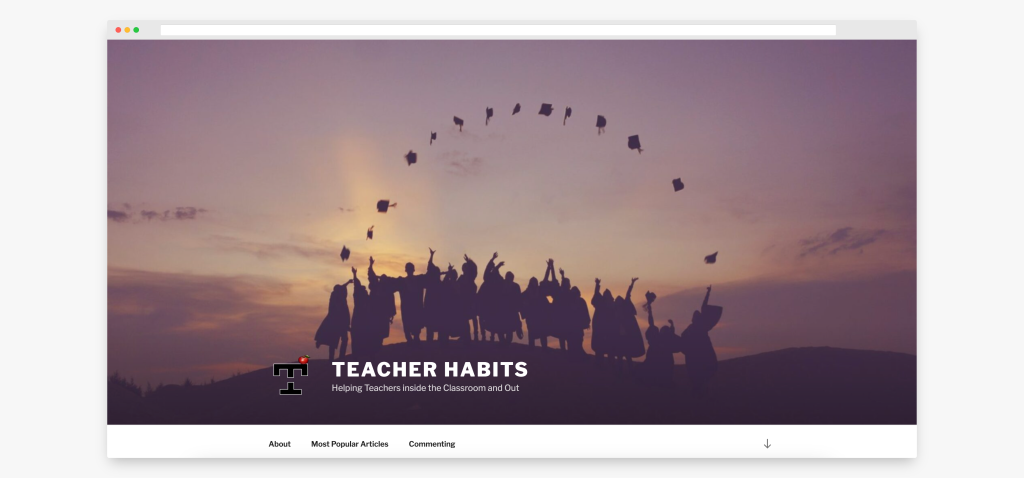
TeacherHabits.com, a popular site for teachers with lots of great tips and ideas for educators, is now teaming up with BetterWritingServices.com, a site dedicated to helping students write awesome essays. This is a big deal for both sites and for everyone who uses them!
What’s Happening?
If you’ve been a fan of TeacherHabits.com, you know it’s a great place to find help for teaching, especially writing. Now that it’s joining forces with BetterWritingServices.com, you’ll get even more useful information!
The writing team at TeacherHabits.com will continue writing articles that focus on how to teach academic writing, especially essays and research papers, as well as share useful teaching tips to help other educators make their work lives easier.
Students, you’re not left out! This will help you better understand teachers and give you insight into what educators expect from you in writing assignments. Teachers, in turn, will be able to read about and understand students’ challenges.
What to Look Forward to
- More New Content: There will be more articles, reviews, videos, and tools that help both teachers and students.
- Personalized Help: If you’re really stuck on an essay, you can get one-on-one help from people who know their job.
As these two sites come together, watch for new content ideas coming your way. Whether you’re a teacher wanting to spice up your lessons or a student looking to ace your next college paper, the new combined site has got your back.
Apart from writing informational articles, BetterWritingServices.com can also help you find the best essay writing service for your specific needs, whether you’re looking for someone to proofread your work, assist with research, or even write an essay from scratch.
We have a separate team that is focused on writing reviews and helping students find the most effective tools to improve their studying process, from software and apps to textbooks and online courses.
P.S. We’ve also recently launched our forum, where you can discuss any topics related to education. This forum is a great place to share experiences, ask questions, and connect with others who have similar interests and challenges.
Students and teachers can create topics and join conversations like this one that discusses top research paper writing services , you can virtually discuss anything as long as it falls into the categories of education and academic development.
We’re really excited about what this partnership will bring. It’s a chance to make a big difference in the way we teach and learn. Stay tuned for more updates, and let’s make learning awesome together.

The Plagiarism Checker Online For Your Academic Work
Start Plagiarism Check
Editing & Proofreading for Your Research Paper
Get it proofread now
Online Printing & Binding with Free Express Delivery
Configure binding now
- Academic essay overview
- The writing process
- Structuring academic essays
- Types of academic essays
- Academic writing overview
- Sentence structure
- Academic writing process
- Improving your academic writing
- Titles and headings
- APA style overview
- APA citation & referencing
- APA structure & sections
- Citation & referencing
- Structure and sections
- APA examples overview
- Commonly used citations
- Other examples
- British English vs. American English
- Chicago style overview
- Chicago citation & referencing
- Chicago structure & sections
- Chicago style examples
- Citing sources overview
- Citation format
- Citation examples
- College essay overview
- Application
- How to write a college essay
- Types of college essays
- Commonly confused words
- Definitions
- Dissertation overview
- Dissertation structure & sections
- Dissertation writing process
- Graduate school overview
- Application & admission
- Study abroad
- Master degree
- Harvard referencing overview
- Language rules overview
- Grammatical rules & structures
- Parts of speech
- Punctuation
- Methodology overview
- Analyzing data
- Experiments
- Observations
- Inductive vs. Deductive
- Qualitative vs. Quantitative
- Types of validity
- Types of reliability
- Sampling methods
- Theories & Concepts
- Types of research studies
- Types of variables
- MLA style overview
- MLA examples
- MLA citation & referencing
- MLA structure & sections
- Plagiarism overview
- Plagiarism checker
- Types of plagiarism
- Printing production overview
- Research bias overview
- Types of research bias
- Example sections
- Types of research papers
- Research process overview
- Problem statement
- Research proposal
- Research topic
- Statistics overview
- Levels of measurment
- Frequency distribution
- Measures of central tendency
- Measures of variability
- Hypothesis testing
- Parameters & test statistics
- Types of distributions
- Correlation
- Effect size
- Hypothesis testing assumptions
- Types of ANOVAs
- Types of chi-square
- Statistical data
- Statistical models
- Spelling mistakes
- Tips overview
- Academic writing tips
- Dissertation tips
- Sources tips
- Working with sources overview
- Evaluating sources
- Finding sources
- Including sources
- Types of sources
Your Step to Success
Plagiarism Check within 10min
Printing & Binding with 3D Live Preview
Literary Devices ‒ How To Use Them In Your College Essay
How do you like this article cancel reply.
Save my name, email, and website in this browser for the next time I comment.
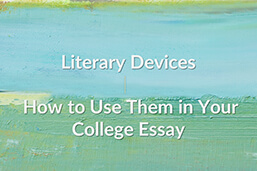
One of the best ways to make your college essay and other academic writing assignments interesting is by using literary devices. They serve as essential tools that authors employ to enrich their narratives, engage readers, and convey complex thoughts and emotions in an accessible way. This article will explore what literary devices are, why they’re important, and the most common literary devices you can use to make your academic essays more interesting.
Inhaltsverzeichnis
- 1 Literary Devices ‒ In a Nutshell
- 2 Definition: Literary devices
- 3 Literary devices woven into the essay structure
- 4 Literary devices for storytelling
- 5 Literary devices: Imagery
- 6 Literary devices: Tone
- 7 Sentence-integrated literary devices
Literary Devices ‒ In a Nutshell
- Literary devices are tools used by writers to elevate their writing skills.
- Literary devices allow writers to communicate with their audiences from a unique angle.
- Literary devices can upgrade your essay writing skills and get you good grades.
Definition: Literary devices
Literary devices are tools or techniques writers use to make their narrations more captivating and hint at bigger meanings than what’s on paper. While some literary devices are only used on a sentence level, others transform the entire story. Most skilled writers use several literary devices to create a more powerful and memorable story.
Some common types of literary devices include:
- Figurative language – metaphors and similes create images and comparisons for better understanding.
- Sound devices – alliteration and onomatopoeia contribute to the rhythm, mood, and emphasis of the text.
- Narrative devices – foreshadowing and flashbacks affect the structure of the story and how it’s told.
- Stylistic devices – repetition and irony shape the overall voice, tone, and mood of the work.
In sum, literary devices enhance a piece of writing by making it more effective, memorable, and engaging in conveying its ideas and themes.
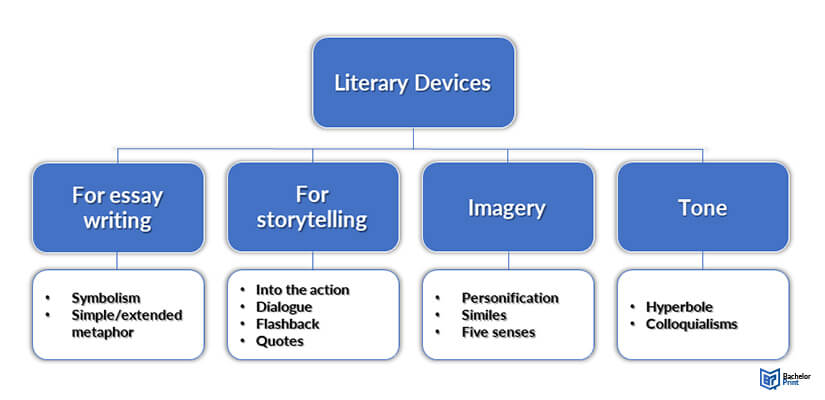
Literary devices woven into the essay structure
The following are some of the best literary devices for essay writing and how to use them:
This refers to using an object, person, place, or subject to represent a broader concept or idea.
- A dove can represent peace
- A sheep can mean conformity
- A black cat can represent bad luck.
Extended metaphor
A metaphor is a figure of speech that compares two, unlike things without using the words “like” or “as.”
On the other hand, an extended metaphor is a metaphor that continues the comparison across multiple sentences or paragraphs in the same piece of writing.
- Simple metaphor: “The truth is thorny.”
This metaphor compares the truth to something painful.
- Extended metaphor: “The truth is thorny, but you have to embrace it even if it hurts. Sometimes it leaves a small puncture, sometimes a huge wound, but it eventually heals.”
With this extended metaphor, you’ve spread the comparison of truth to a thorn across two sentences.
- Choose the third metaphor you think of
- Use a comprehensive comparison
- Look for extended metaphors
- Always keep it subtle
- Don’t overuse extended metaphors
- Don’t use clichés
- Don’t use distracting metaphors
- Don’t use weakening metaphors
Literary devices for storytelling
The following are some literary devices that work best with storytelling:
Into the action
“In medias res” is a Latin word that means “in the midst of things.” This writing style places the reader in the middle of the action or scene without providing any contextual information.
Beginning your story in the middle of the action helps immerse the reader into your story from the start. It makes them ask a lot of questions regarding the characters in the opening scene and what’s the reason behind the events that are unfolding.
The opening line of One Hundred Years of Solitude by Gabriel Garcia Marquez reads:
- “Many years later, as he faced the firing squad, Colonel Aureliano Buendia was to remember that distant afternoon when his father took him to discover ice.”
Writers often use dialogue to show communication between two characters in the story.
You can use dialogue in your college essay to move your story forward, show different points of view, or engage the reader with your story at an emotional level.
- Algernon : I’m afraid I’m not that. That’s why I want you to reform me. You might make that your mission if you don’t mind, cousin Cecily.
- Cecily : I’m afraid I’ve no time this afternoon.
- Algernon : Well, would you mind me reforming myself this afternoon?
- Cecily : It is rather Quixotic of you. But I think you should try.
A flashback is a sudden interruption in the story’s narration that brings the reader to an earlier event to provide context or backstory of the present event.
You can use flashbacks in your essay to arm the reader with some important information about a character’s backstory that they might not have known.
The realtor handed me the keys to my new three-bedroom house. I was overjoyed to become a homeowner before my 30th birthday. It’s hard to imagine that I was living with my brother a year ago because I couldn’t afford to pay rent for my apartment.
Using a famous quote in your college essay provides the reader with more context of the topic you’re writing about and helps strengthen your argument.
As a parent, you want to raise well-behaved children who do well in school and are never in trouble. However, you should know that what you do or say in front of your children plays a major role in shaping their character. Pierre Corneille once said, “Remember: sooner or later, your son will follow your example and not your advice.”
Literary devices: Imagery
Writers use imagery to engage the human senses or create a picture in the reader’s mind. The following are some of the literary devices used to create imagery:
Personification
This is a writing technique used to give human characteristics to non-humans. When used in essays, personification allows the reader to relate easily to the object the writer is talking about.
Similes compare two objects using the words “like” or “as.” Using similes in your college essay can help make it more interesting and descriptive.
As brave as a lion.
Five senses
This writing technique describes a particular object’s taste, smell, touch, sight, and sound. Using the five senses in your essay helps immerse the reader in your story by creating vivid images in their mind.
She wanted a taste of the sweet hot coffee.
Literary devices: Tone
The tone is the mood or atmosphere the writer’s words paint to the reader. The following are the literary devices used to portray the writer’s tone:
This is using exaggeration to add more impact to a certain statement.
I have a million things to do when I wake up.
Colloquialisms
This refers to using informal phrases in a piece of writing.
Y’all ain’t giving me time to explain.
Sentence-integrated literary devices
The following are the most commonly used sentence-integrated literary devices:
What are literary devices used for?
Literary devices are used to make pieces of writings more interesting to read.
How many literary devices can I use in my essay?
You can use as many literary devices as you want, as long as they make sense and add something to the reader’s experience.
What forms of writing can you incorporate literary devices?
There are no restrictions when it comes to using literary devices.
You can use literary devices with all forms of formal and informal writing, including college essays, book reports, research papers, emails, and even text messages.
We use cookies on our website. Some of them are essential, while others help us to improve this website and your experience.
- External Media
Individual Privacy Preferences
Cookie Details Privacy Policy Imprint
Here you will find an overview of all cookies used. You can give your consent to whole categories or display further information and select certain cookies.
Accept all Save
Essential cookies enable basic functions and are necessary for the proper function of the website.
Show Cookie Information Hide Cookie Information
Statistics cookies collect information anonymously. This information helps us to understand how our visitors use our website.
Content from video platforms and social media platforms is blocked by default. If External Media cookies are accepted, access to those contents no longer requires manual consent.
Privacy Policy Imprint
The Subtle Art of Writing an Literary Analysis Essay
29 July, 2020
12 minutes read
Author: Tomas White
When studying at school, college, or university, you get dozens of writing tasks, and a literary analysis essay is one of them. You have to study a piece of literature and write about the core idea, characters, or the author’s intentions. In some cases, it’s necessary to explore style, plot, structure, and other elements to explain how they complement or weaken each other.
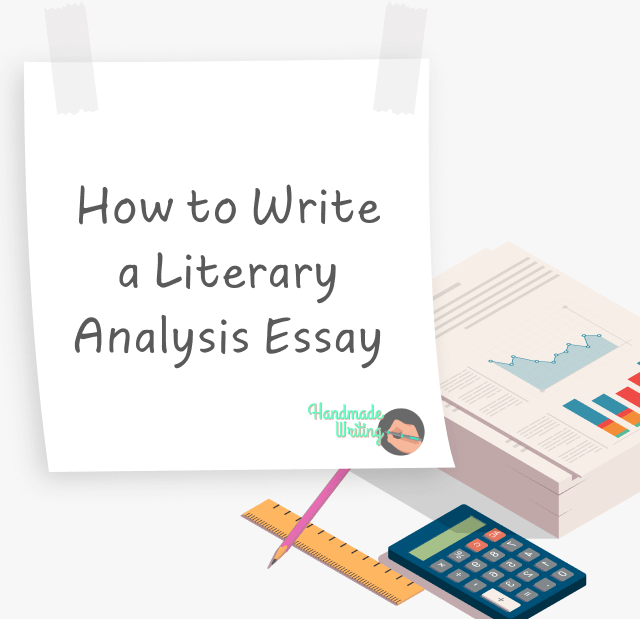
Although it’s an interesting task, students often don’t have enough time or writing skills to craft a literary analysis essay excellently. Our article will help you cope with the assignment and compose a flawless paper. Discover how to craft an outline, start a literary analysis essay, and many more.
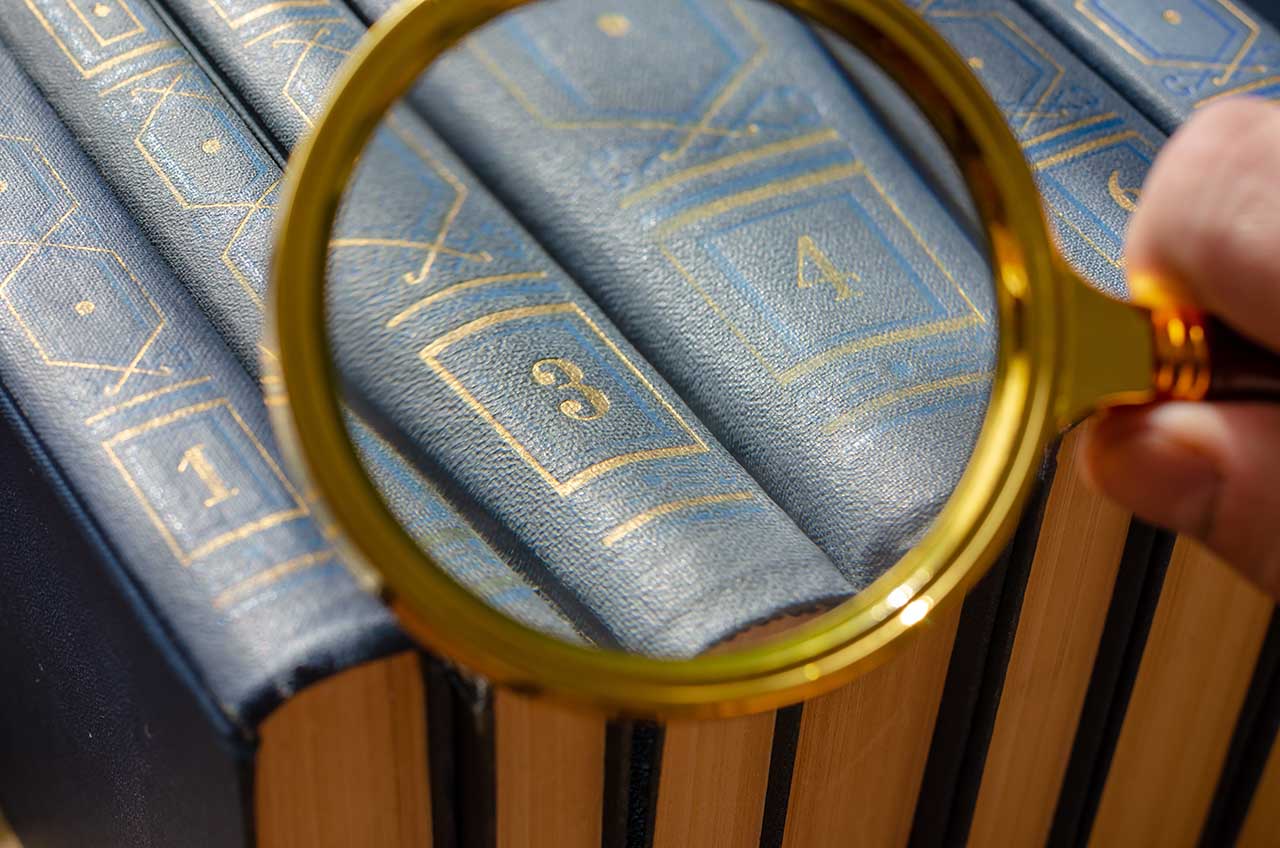
What is a Literary Analysis Essay?
Paper quality depends not only on the writer’s skills or the presence of fresh ideas in a text but also on their understanding of what is a literary analysis essay. Many students make the same mistake and compose reviews or just describe what they’ve read, but it’s not the purpose of this task. Take a look at the explanation of a literary analysis below to avoid the confusion:
Literary analysis essay definition
A literary analysis essay involves studying the text, evaluating the plot, analyzing characters, and determining devices used by the author to engage and influence readers. A novel, tale, poem, play, or another piece of literature can become the object of your research. When composing a literary analysis essay, a writer explores the text form, style, perspective, and characters.
What is the purpose of a literary analysis essay?
An excellently composed literary analysis essay demonstrates that you’ve looked at the events described in the literature piece from different perspectives. Examination of all the major elements, including a text structure, plot, author’s style, characters’ qualities, main theme, and form is an essential stage of the writing process. After you study all the important components, provide a conclusion on how they interact with each other and influence your overall impression.
How to Start a Literary Analysis Essay?
Now that you know a literary analysis essay definition, you’re ready to move further and discover the secrets of writing the paper. When reading the text, you must be very attentive. Notice the tricks the author uses to engage the reader, surprising details, and uncommon character’s features. Use these elements for your analysis.
It’s also necessary to answer a few important questions to discover the essence of the literature piece you’ve just read:
- Which parts are the most essential ones?
- What literary devices did the author use, and why did they choose them?
- Do characters change somehow?
After you’ve answered these questions, you’ll have to determine the relationships between the ideas and storyline, the characters’ behavior, and how their roles change in a piece. Conduct comprehensive research to get information about the text, its background, and the author. These materials will help you understand the writer’s intentions and ideas better.
Literary Analysis Essay Outline
Crafting a literary analysis essay outline is an efficient method to organize your materials and structure a paper. An outline will contain all the core thoughts of your research. It helps an essay writer figure out whether they’ve studied all the essential elements and mentioned all the points.
Before you design an outline, it’s necessary to write a thesis statement that shortly describes your paper’s content. Usually, it contains one sentence and presents the entire sense of the essay. Crafting an outline is the next step after composing a thesis statement. Traditionally, it consists of 3 sections:
- Introduction . This part is the most important one, as it should explain the main points of the body text and grab the reader’s attention. However, it’s not only a brief description of the essay’s content – you have to compose a catchy introduction that engages the audience. It’s necessary to use a hook to grab the reader’s attention and make them wonder what happens in the next literary analysis essay’s section. You can add a quote, an interesting fact connected with the book or the author, or write a question and promise to provide the answer in the next part.
- Body text . After you’ve composed the introduction, it’s necessary to move to the next step in your writing. Body text will contain all your statements, arguments, and important details supporting your analysis. Usually, this section has 3 paragraphs, but you can extend it depending on the task complexity and the professor’s requirements. When designing an outline, use the columns or bullet points to present the main ideas. These lists will help you figure out which details are unnecessary in your essay.
- Conclusion . Your final thoughts will shape the entire paper and influence the reader’s impression. At this point, the audience gets the overall impression of your analysis and decides whether you’re right or wrong. Name the paper’s core thoughts and write your final statement. You can write a sentence or two about the significance of the author’s idea or the impact made by the piece.
Literary Analysis Essay Examples
Check this short list of literary analysis essay example to get the idea:
- http://web.cocc.edu/cagatucci/classes/eng104/midtermexamples.htm
- https://www.unm.edu/~aobermei/Eng200/sonnet95a.html
20 Literary Analysis Essay Topics
Sometimes professors allow students to pick topics themselves, and it’s a lucky ticket in the academic world. You can choose your favorite book or novel, research it, and provide excellent analysis. If you’ve written about the piece you love before or want to impress the professor, we recommend you to check our list of literary analysis essay topics for more ideas:
- Examining the structure of Kurt Vonnegut’s “ Slaughterhouse-Five. ”
- Explaining the importance of Ray Bradbury’s “ Fahrenheit 451. ”
- Analyzing the changes in Ebenezer Scrooge’s character over the course of “ A Christmas Carol. ”
- The importance of symbolism in “ Wuthering Heights .”
- Examining Ernest Hemingway’s writing style.
- The connection of plot lines in “ Froth of Days ” by Boris Vian.
- The lasting influence of “ The Catcher in the Rye .”
- Literary devices used by George Orwell in “ 1984. ”
- The use of humor in Mark Twain’s short stories.
- The impact of “ To Kill a Mockingbird .”
- Analyzing the allegory in William Golding’s “ Lord of the Flies .”
- “ Pride and Prejudice ” character analysis.
- “ Love in the Time of Cholera ”: Florentino Ariza character analysis.
- The significance of Herman Melville’s “ Moby-Dick .”
- Plot analysis of William Shakespeare’s “ Hamlet. ”
- The influence of Jack London’s life on his works.
- The analysis of Jane Eyre’s personality.
- Mysticism in Edgar Allan Poe’s novels.
- Language analysis in Haper Lee’s “ To Kill Mockingbird .”
- Stylistic analysis of “ The Great Gatsby .”
Useful Tips for Literary Analysis Essay
A literary analysis essay requires time, patience, and attentiveness. When reading a piece, don’t be lazy to write down all the important details connected with characters, plot, author’s style, ideas, etc. You also must be very attentive to notice important elements. However, attentiveness isn’t the only thing that will help you craft a paper. Read our tips to learn how to write a literary analysis essay flawlessly and get the best grade:
1. Read carefully
Choose a cozy place for reading – it’s where no one will disturb you, and noise won’t interrupt the process. Only in this case, you’ll notice the most important details. If you pick the right environment, you’ll be able to concentrate on a story. You can choose a quiet place in a park, stay in your room, or go to a library.
2. Take notes
Do characters have specific features? What makes the writer’s style special? How does symbolism influence text comprehension? Write down all the interesting or intriguing details you notice. You can use this information in your literary analysis essay.
3. Determine literary devices
Writers use literary devices to create special effects that help readers understand their intentions, interpret their works, and analyze them. Besides, these elements often become the author’s identifying feature that helps them stand out from the crowd. Here’s the list of literary devices you have to know:
- Personification
- Alliteration
- Foreshadowing
4. Consider language style
It’s necessary to pay attention to the length of sentences, terminology, descriptions, presence of metaphors, etc. Does the writer use simple words to describe an object or go poetic? Is it easy to understand the text? Does the author use slang or conventional terms?
The writer’s style tells a lot about their piece – even more than you can imagine. Besides, the characters’ language style is one of their most important features. It helps readers understand their personalities. If your topic is connected with the character analysis, taking notes about language is a must for you.
5. Determine the narrator
Who’s telling the story? It can be told by a character or by an author watching the course of events from a distant perspective. You have to determine the role of the narrator in a story. Do they know everything about other characters? Is their role important for story development? Of course, if an author is a narrator, you won’t have to wonder whether they influence the piece somehow. If a character tells the story, the chances are that they hide some information or don’t know much about different events. In this case, some details may become evident in the end.
Write a Literary Analysis Essay with HandmadeWriting
If you need someone to help you craft a literary analysis essay, it’s necessary to choose a reputable service. You can rely on HandmadeWriting whenever assignments seem too difficult to cope with solely. It doesn’t matter if you don’t have enough time for the task completion because a professional writer will compose a flawless paper within the tightest timeframes.
HandmadeWriting has over 700 experienced writers specializing in different fields. They cope even with the most complicated tasks and deliver original papers in time. Writers at HandmadeWriting do their best to help students compose excellent essays. They’re passionate researchers who use many credible sources where they get the necessary information from. All the papers are also checked for plagiarism and edited.
Writing a literary analysis essay is an exciting yet time-consuming process. It’s necessary to read the piece of literature carefully to notice all the essential details. Composing a thesis statement, outlining an essay, and writing a meaningful paper are the next steps. If you aren’t sure about your skills or simply don’t have time because of the academic overload, you can address HandmadeWriting for professional help.

A life lesson in Romeo and Juliet taught by death
Due to human nature, we draw conclusions only when life gives us a lesson since the experience of others is not so effective and powerful. Therefore, when analyzing and sorting out common problems we face, we may trace a parallel with well-known book characters or real historical figures. Moreover, we often compare our situations with […]

Ethical Research Paper Topics
Writing a research paper on ethics is not an easy task, especially if you do not possess excellent writing skills and do not like to contemplate controversial questions. But an ethics course is obligatory in all higher education institutions, and students have to look for a way out and be creative. When you find an […]

Art Research Paper Topics
Students obtaining degrees in fine art and art & design programs most commonly need to write a paper on art topics. However, this subject is becoming more popular in educational institutions for expanding students’ horizons. Thus, both groups of receivers of education: those who are into arts and those who only get acquainted with art […]
TRY OUR FREE APP
Write your book in Reedsy Studio. Try the beloved writing app for free today.
Craft your masterpiece in Reedsy Studio
Plan, write, edit, and format your book in our free app made for authors.

Blog • Perfecting your Craft , Book Design
Last updated on May 22, 2024
100 Literary Devices With Examples: The Ultimate List
Literary devices are perhaps the greatest tools that writers have in literature. Just think — Shakespeare could have written: Everyone has a role in life.
Instead, he used a literary device and penned what is likely the most famous metaphor in literature:
All the world’s a stage
And all the men and women merely players
And the rest is history.

What are literary devices?
A literary device is a writing technique that writers use to express ideas, convey meaning, and highlight important themes in a piece of text. A metaphor, like we mentioned earlier, is a famous example of a literary device.
These devices serve a wide range of purposes in literature. Some might work on an intellectual level, while others have a more emotional effect. They may also work subtly to improve the flow and pacing of your writing. No matter what, if you're looking to inject something special into your prose, literary devices are a great place to start.
How to identify literary devices
A writer using a literary device is quite different from a reader identifying it. Often, an author’s use of a literary device is subtle by design —you only feel its effect, and not its presence.
Therefore, we’ve structured this post for both purposes:
- If you’re a reader, we’ve included examples for each literary device to make it easier for you to identify them in the wild.
- If you’re a writer, we’ve included exercises for the literary devices, so that you can practice using them in your works.
Let’s get to it.
100 common literary devices, with examples
1. alliteration.
Alliteration describes a series of words in quick succession that all start with the same letter or sound. It lends a pleasing cadence to prose and Hamlet and the dollar as currency in Macbeth .
Example: “ One short sleepe past, wee wake eternally,
And death shall be no more; death, thou shalt die.” — “Death, Be Not Proud” by John Donne
Exercise: Pick a letter and write a sentence where every word starts with that letter or one that sounds similar.
2. Anaphora
Anaphora is the repetition of a word or phrase at the beginning of a series of clauses or sentences. It’s often seen in poetry and speeches, intended to provoke an emotional response in its audience.
Example: Martin Luther King’s 1963 “I Have A Dream” speech.
“I have a dream that one day this nation will rise up and live out the true meaning of its creed.
"… and I have a dream that one day on the red hills of Georgia the sons of former slaves and the sons of former slave owners will be able to sit together at the table of brotherhood.
"… I have a dream that little children will one day live in a nation where they will not be judged by the color of their skin, but by the content of their character.”
Exercise: Pick a famous phrase and write a paragraph elaborating on an idea, beginning each sentence with that phrase.
Related term: repetition
3. Anastrophe
Anastrophe is a figure of speech wherein the traditional sentence structure is reversed. So a typical verb-subject-adjective sentence such as “Are you ready?” becomes a Yoda-esque adjective-verb-subject question: “Ready, are you?” Or a standard adjective-noun pairing like “tall mountain” becomes “mountain tall.”
Example: “Deep into that darkness peering, long I stood there wondering, fearing.” — “The Raven” by Edgar Allan Poe
Exercise: Write a standard verb-subject-adjective sentence or adjective-noun pairing then flip the order to create an anastrophe. How does it change the meaning or feeling of the sentence?
4. Chiasmus
Chiasmus is when two or more parallel clauses are inverted. “Why would I do that?” you may be wondering. Well, a chiasmus might sound confusing and unnecessary in theory, but it's much more convincing in practice — and in fact, you've likely already come across it before.
Example: “Ask not what your country can do for you; ask what you can do for your country.” — John F. Kennedy
5. Congeries
Congeries is a fancy literary term for creating a list. The items in your list can be words, ideas, or phrases, and by displaying them this way helps prove or emphasize a point — or even create a sense of irony. Occasionally, it’s also called piling as the words are “piling up.”
Example: "Apart from better sanitation and medicine and education and irrigation and public health and roads and a freshwater system and baths and public order, what have the Romans done for us?" — Monty Python’s Life of Brian
6. Cumulative sentence
A cumulative sentence (or “loose sentence”) is one that starts with an independent clause, but then has additional or modifying clauses. They’re often used for contextual or clarifying details. This may sound complex, but even, “I ran to the store to buy milk, bread, and toilet paper” is a cumulative sentence, because the first clause, “I ran to the store,” is a complete sentence, while the rest tells us extra information about your run to the store.
Example: “It was a large bottle of gin Albert Cousins had brought to the party, yes, but it was in no way large enough to fill all the cups, and in certain cases to fill them many times over, for the more than one hundred guests, some of whom were dancing not four feet in front of him.” – Commonwealth by Ann Patchett
Example: Write three sentences that are related to each other. Can you combine the information into a cumulative sentence?

FREE RESOURCE
Literary Devices Cheatsheet
Master these 40+ devices to level up your writing skills.
7. Epistrophe
Epistrophe is the opposite of anaphora, with this time a word or phrase being repeated at the end of a sentence. Though its placement in a sentence is different it serves the same purpose—creating emphasis—as an anaphora does.
Example: “I’ll be ever’where – wherever you look. Wherever they’s a fight so hungry people can eat, I’ll be there. Wherever they’s a cop beatin’ up a guy, I’ll be there . If Casy knowed, why, I’ll be in the way guys yell when they’re mad an’ – I’ll be in the way kids laugh when they’re hungry an’ they know supper’s ready. An’ when our folks eat the stuff they raise an’ live in the houses they build, why, I’ll be there .” — The Grapes of Wrath by John Steinbeck
Related terms: repetition, anaphora
Exercise: Write a paragraph where a phrase or a word is repeated at the end of every sentence, emphasizing the point you’re trying to make.
8. Erotesis
Erotesis is a close cousin of the rhetorical question. Rather than a question asked without expectation of an answer, this is when the question (and the asker) confidently expects a response that is either negative or affirmative.
Example: “ Do you then really think that you have committed your follies in order to spare your son them?” — Siddhartha by Herman Hesse
Related term: rhetorical question
9. Hyperbaton
Hyperbaton is the inversion of words, phrases, or clauses in a sentence that differs from how they would normally be arranged. It comes from the Greek hyperbatos, which means “transposed” or “inverted.” While it is similar to anastrophe, it doesn’t have the same specific structure and allows you to rearrange your sentences in whatever order you want.
Example: “Object there was none. Passion there was none. I loved the old man. He had never wronged me. He had never given me insult. For his gold I had no desire.” — “The Tell-Tale Heart” by Edgar Allan Poe
Related terms: anastrophe, epistrophe
10. Isocolon
If you’re a neat freak who likes things just so , isocolon is the literary device for you. This is when two or more phrases or clauses have similar structure, rhythm, and even length — such that, when stacked up on top of each other, they would line up perfectly. Isocolon often crops up in brand slogans and famous sayings; the quick, balanced rhythm makes the phrase catchier and more memorable.
Example: Veni, vidi, vici (“I came, I saw, I conquered”)
11. Litotes
Litotes (pronounced lie-toe-teez ) is the signature literary device of the double negative. Writers use litotes to express certain sentiments through their opposites, by saying that that opposite is not the case. Don’t worry, it makes more sense with the examples. 😉
Examples: “You won’t be sorry” (meaning you’ll be happy); “you’re not wrong” (meaning you’re right); “I didn’t not like it” (meaning I did)
12. Malapropism
If Shakespeare is the king of metaphors, Michael Scott is the king of malapropisms . A malapropism is when similar-sounding words replace their appropriate counterparts, typically to comic effect — one of the most commonly cited is “dance a flamingo,” rather than a “flamenco.” Malapropisms are often employed in dialogue when a character flubs up their speech.
Example: “I am not to be truffled with.”
Exercise: Choose a famous or common phrase and see if you can replace a word with a similar sounding one that changes the meaning.

13. Onomatopoeia
Amusingly, onomatopoeia (itself a difficult-to-pronounce word) refers to words that sound like the thing they’re referring to. Well-known instances of onomatopoeia include whiz, buzz, snap, grunt, etc.
Example: The excellent children's book Click, Clack, Moo: Cows That Type . “Farmer Brown has a problem. His cows like to type. All day long he hears: Click, clack, moo. Click, clack, moo. Clickety, clack, moo. ”
Exercise: Take some time to listen to the sounds around you and write down what you hear. Now try to use those sounds in a short paragraph or story.
14. Oxymoron
An oxymoron comes from two contradictory words that describe one thing. While juxtaposition contrasts two story elements, oxymorons are about the actual words you are using.
Example: "Parting is such sweet sorrow.” — Romeo and Juliet by William Shakespeare. (Find 100 more examples of oxymorons here .)
Related terms: juxtaposition, paradox
Exercise: Choose two words with opposite meanings and see if you can use them in a sentence to create a coherent oxymoron.
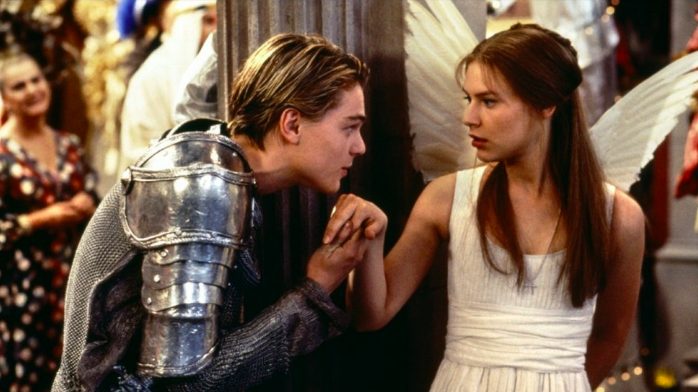
15. Parallelism
Parallelism is all about your sentence structure. It’s when similar ideas, sounds, phrases, or words are arranged in a way that is harmonious or creates a parallel, hence the name. It can add rhythm and meter to any piece of writing and can often be found in poetry.
Example: “ That’s one small step for man, one giant leap for mankind.” — Neil Armstrong
Which famous author do you write like?
Find out which literary luminary is your stylistic soulmate. Takes one minute!
16. Polysyndeton
Instead of using a single conjunction in lengthy statements, polysyndeton uses several in succession for a dramatic effect. This one is definitely for authors looking to add a bit of artistic flair to their writing, or who are hoping to portray a particular (usually naïve) sort of voice.
Example: “Luster came away from the flower tree and we went along the fence and they stopped and we stopped and I looked through the fence while Luster was hunting in the grass.” — The Sound and the Fury by William Faulkner
Exercise: Write three or four independent sentences. Try combining them using conjunctions. What kind of effect does this have on the overall meaning and tone of the piece?
17. Portmanteau
A portmanteau is when two words are combined to form a new word which refers to a single concept that retains the meanings of both the original words. Modern language is full of portmanteaus. In fact, the portmanteau is itself a portmanteau. It’s a combination of the French porter (to carry) and manteau (cloak).
Example: Brunch (breakfast and lunch); cosplay (costume and roleplay); listicle (list and article); romcom (romance and comedy)
Exercise: Pick two words that are often used together to describe a single concept. See if there’s a way to combine them and create a single word that encompasses the meaning of both.
18. Repetition
Repetition , repetition, repetition… where would we be without it? Though too much repetition is rarely a good thing, occasional repetition can be used quite effectively to drill home a point, or to create a certain atmosphere. For example, horror writers often use repetition to make the reader feel trapped and scared.
Example: In The Shining , Jack Torrance types over and over again on his pages, “All work and no play makes Jack a dull boy.” In this case, obsessive repetition demonstrates the character’s unraveling mind.
Related term: anaphora
Exercise: Repetition can be used to call attention to an idea or phrase. Pick an idea you want to emphasize and write a few sentences about it. Are there any places where you can add repetition to make it more impactful?
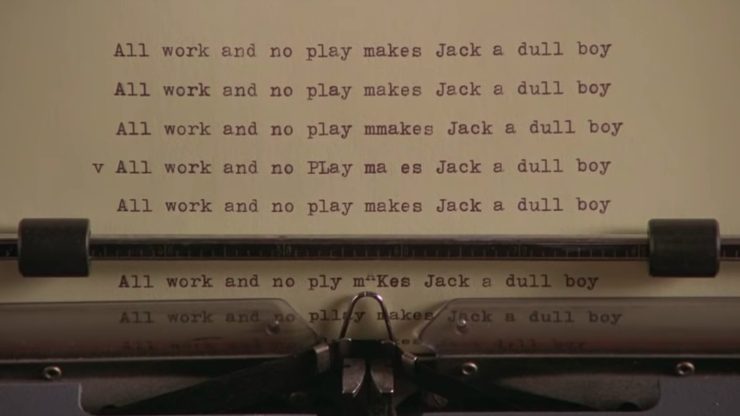
19. Tautology
A tautology is when a sentence or short paragraph repeats a word or phrase, expressing the same idea twice. Often, this is a sign that you should trim your work to remove the redundancy (such as “frozen ice”) but can also be used for poetic emphasis.
Example: "But the fact is I was napping, and so gently you came rapping, And so faintly you came tapping, tapping at my chamber door" – “The Raven” by Edgar Allan Poe
20. Tmesis
Tmesis is when a word or phrase is broken up by an interjecting word, such as abso-freaking-lutely. It’s used to draw out and emphasize the idea, often with a humorous or sarcastic slant.
Example: "This is not Romeo, he's some-other-where." – Romeo and Juliet by William Shakespeare
21. Allegory
An allegory is a type of narrative that uses characters and plot to depict abstract ideas and themes . In an allegorical story, things represent more than they appear to on the surface. Many children's fables, such as The Tortoise and the Hare , are simple allegories about morality — but allegories can also be dark, complex, and controversial.
Example: Animal Farm by George Orwell. This dystopian novella is one of modern literature’s best-known allegories. A commentary on the events leading up to Stalin's rise and the formation of the Soviet Union, the pigs at the heart of the novel represent figures such as Stalin, Trotsky, and Molotov.
Exercise: Pick a major trend or problem in the world and consider what defines it. Try and create a story where that trend plays out on a smaller scale.
22. Anecdote
An anecdote is like a short story within a story. Sometimes, they are incredibly short—only a line or two—and their purpose is to add a character’s perspective, knowledge, or experience to a situation. They can be inspirational, humorous, or be used to inspire actions in others. Since anecdotes are so short, don’t expect them to be part of a main story. They’re usually told by a character and part of the dialogue.
Example: Marcel Proust’s Swann’s Way , part of his series of novels, In Search of Lost Time, deals with the themes of remembrance and memory. In one section of this book, to illustrate these ideas, the main character recalls an important memory of eating a madeleine cookie. “Many years had elapsed during which nothing of Combray, save what was comprised in the theatre and the drama of my going to bed there, had any existence for me, when one day in winter, as I came home, my mother, seeing that I was cold, offered me some tea, a thing I did not ordinarily take. I declined at first, and then, for no particular reason, changed my mind. She sent out for one of those short, plump little cakes called ‘petites madeleines,’ which look as though they had been moulded in the fluted scallop of a pilgrim’s shell.”
23. Deus Ex Machina
Literally meaning “god in the machine” in Greek, deus ex machina is a plot device where an impossible situation is solved by the appearance of an unexpected or unheard of character, action, object, or event. This brings about a quick and usually happy resolution for a story and can be used to surprise an audience, provide comic relief, or provide a fix for a complicated plot. However, deus ex machinas aren’t always looked upon favorably and can sometimes be seen as lazy writing, so they should be used sparingly and with great thought.
Example: William Golding’s famous novel of a group of British boys marooned on a desert island is resolved with a deus ex machina. At the climax of The Lord of the Flies, just as Ralph is about to be killed by Jack, a naval officer arrives to rescue the boys and bring them back to civilization. It’s an altogether unexpected and bloodless ending for a story about the boys’ descent into savagery.
Exercise: Consider the ending of your favorite book or movie and then write an alternate ending that uses a deus ex machina to resolve the main conflict. How does this affect the overall story in terms of theme and tone?
If you struggle to write consistently, sign up for our How to Write a Novel course to finish a novel in just 3 months.

NEW REEDSY COURSE
How to Write a Novel
Enroll in our course and become an author in three months.
24. Dramatic irony
Dramatic irony is when the readers know more about the situation going on than at least one of the characters involved. This creates a difference between the ways the audience and the characters perceive unfolding events. For instance, if we know that one character is having an affair, when that character speaks to their spouse, we will pick up on the lies and double-meanings of their words, while the spouse may take them at face value.
Example: In Titanic , the audience knows from the beginning of the movie that the boat will sink. This creates wry humor when characters remark on the safety of the ship.
25. Exposition
Exposition is when the narrative provides background information in order to help the reader understand what’s going on. When used in conjunction with description and dialogue, this literary device provides a richer understanding of the characters, setting, and events. Be careful, though — too much exposition will quickly become boring, thus undercutting the emotional impact of your work.
Example: “The Dursley’s had everything they wanted, but they also had a secret, and their greatest fear was that somebody would discover it.” – Harry Potter and the Sorcerer’s Stone by J.K. Rowling
Exercise: Pick your favorite story and write a short paragraph introducing it to someone who knows nothing about it.
26. Flashback
Flashbacks to previous events split up present-day scenes in a story, usually to build suspense toward a big reveal. Flashbacks are also an interesting way to present exposition for your story, gradually revealing to the reader what happened in the past.
Example: Every other chapter in the first part of Gone Girl is a flashback, with Amy’s old diary entries describing her relationship with her husband before she disappeared.
Related term: foreshadowing
27. Foreshadowing
Foreshadowing is when the author hints at events yet to come in a story. Similar to flashbacks (and often used in conjunction with them), this technique is also used to create tension or suspense — giving readers just enough breadcrumbs to keep them hungry for more.
Example: One popular method of foreshadowing is through partial reveals — the narrator leaves out key facts to prompt readers’ curiosity. Jeffrey Eugenides does this in The Virgin Suicides : “On the morning the last Lisbon daughter took her turn at suicide — it was Mary this time, and sleeping pills, like Therese, the two paramedics arrived at the house knowing exactly where the knife drawer was, and the gas oven, and the beam in the basement from which it was possible to tie a rope.”
Related term: flashback
Exercise: Go back to your favorite book or movie. Can you identify any instances of foreshadowing in the early portions of the story for events that happen in the future?
28. Frame story
A frame story is any part of the story that "frames" another part of it, such as one character telling another about their past, or someone uncovering a diary or a series of news articles that then tell the readers what happened. Since the frame story supports the rest of the plot, it is mainly used at the beginning and the end of the narrative, or in small interludes between chapters or short stories.
Example: In The Name of the Wind by Patrick Rothfuss, Kvothe is telling Chronicler the story of his life over the span of three days. Most of the novel is the story he is telling, while the frame is any part that takes place in the inn.
29. In Medias Res
In medias res is a Latin term that means "in the midst of things" and is a way of starting a narrative without exposition or contextual information. It launches straight into a scene or action that is already unfolding.
Example: “Many years later, as he faced the firing squad, Colonel Aureliano Buendía was to remember that distant afternoon when his father took him to discover ice.” — The opening line of One Hundred Years of Solitude by Gabriel García Márquez
Exercise: Pick a story you enjoy and rewrite the opening scene so that it starts in the middle of the story.
30. Point of view
Point of view is, of course, the mode of narration in a story. There are many POVs an author can choose, and each one will have a different impact on the reading experience.
Example: Second person POV is uncommon because it directly addresses the reader — not an easy narrative style to pull off. One popular novel that manages to employ this perspective successfully is Bright Lights, Big City by Jay McInerney: “You are not the kind of guy who would be at a place like this at this time of the morning. But here you are, and you cannot say that the terrain is entirely unfamiliar, although the details are fuzzy.”
Exercise: Write a short passage in either first, second, or third person. Then rewrite that passage in the other two points of view, only changing the pronouns. How does the change in POV affect the tone and feel of the story?

FREE COURSE
Understanding Point of View
Learn to master different POVs and choose the best for your story.
31. Soliloquy
Soliloquy involves a character speaking their thoughts aloud, usually at length (and often in a Shakespeare play). The character in question may be alone or in the company of others, but they’re not speaking for the benefit of other people; the purpose of a soliloquy is for a character to reflect independently.
Example: Hamlet’s “to be or not to be” speech, in which he ruminates on the nature of life and death, is a classic dramatic soliloquy.
Exercise: Pick a character from your favorite book or movie and write a soliloquy from their point of view where they consider their thoughts and feelings on an important part of their story or character arc.
Which writing app is right for you?
Find out here! Takes 30 seconds
Tone refers to the overall mood and message of your book. It’s established through a variety of means, including voice, characterization, symbolism, and themes. Tone sets the feelings you want your readers to take away from the story.
Example: No matter how serious things get in The Good Place , there is always a chance for a character to redeem themselves by improving their behavior. The tone remains hopeful for the future of humanity in the face of overwhelming odds.
Exercise: Write a short paragraph in an upbeat tone. Now using the same situation you came up with, rewrite that passage in a darker or sadder tone.
33. Tragicomedy
Tragicomedy is just what it sounds like: a blend of tragedy and comedy. Tragicomedy helps an audience process darker themes by allowing them to laugh at the situation even when circumstances are bleak.
Example: Lemony Snicket’s A Series of Unfortunate Events uses wordplay, absurd situations, and over-the-top characters to provide humor in an otherwise tragic story.
34. Allusion
An allusion is a reference to a person, place, thing, concept, or other literary work that a reader is likely to recognize. A lot of meaning can be packed into an allusion and it’s often used to add depth to a story. Many works of classic Western literature will use allusions to the Bible to expand on or criticize the morals of their time.
Example: “The two knitting women increase his anxiety by gazing at him and all the other sailors with knowing unconcern. Their eerie looks suggest that they know what will happen (the men dying), yet don’t care.” The two women knitting in this passage from Joseph Conrad’s Heart of Darkness are a reference to the Fates from Greek mythology, who decide the fate of humanity by spinning and cutting the threads of life.
Exercise: In a relatively simple piece of writing, see how many times you can use allusions. Go completely crazy. Once you’re finished, try to cut it down to a more reasonable amount and watch for how it creates deeper meaning in your piece.
35. Analogy
An analogy connects two seemingly unrelated concepts to show their similarities and expand on a thought or idea. They are similar to metaphors and similes, but usually take the comparison much further than either of these literary devices as they are used to support a claim rather than provide imagery.
Example: “ It has been well said that an author who expects results from a first novel is in a position similar to that of a man who drops a rose petal down the Grand Canyon of Arizona and listens for the echo.” — P.G. Wodehouse
Exercise: Pick two seemingly unrelated nouns and try to connect them with a verb to create an analogy.
36. Anthropomorphism
To anthropomorphize is to apply human traits or qualities to a non-human thing such as objects, animals, or the weather. But unlike personification, in which this is done through figurative description, anthropomorphism is literal: a sun with a smiling face, for example, or talking dogs in a cartoon.
Examples: In Disney’s Beauty and the Beast , Mrs. Potts the teapot, Cogsworth the clock, and Lumière the candlestick are all household objects that act and behave like humans (which, of course, they were when they weren’t under a spell).
Related term: personification
Exercise: Pick a non-human object and describe it as if it was human, literally ascribing human thoughts, feelings, and senses to it.
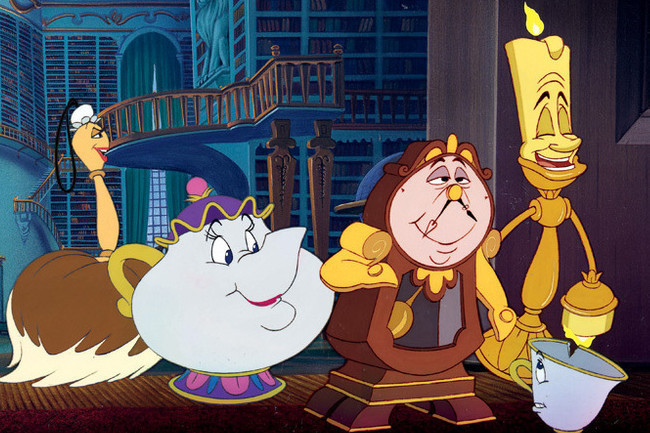
37. Aphorism
An aphorism is a universally accepted truth stated in a concise, to-the-point way. Aphorisms are typically witty and memorable, often becoming adages or proverbs as people repeat them over and over.
Example: “To err is human, to forgive divine.” — Alexander Pope
38. Archetype
An archetype is a “universal symbol” that brings familiarity and context to a story. It can be a character, a setting, a theme, or an action. Archetypes represent feelings and situations that are shared across cultures and time periods, and are therefore instantly recognizable to any audience — for instance, the innocent child character, or the theme of the inevitability of death.
Example: Superman is a heroic archetype: noble, self-sacrificing, and drawn to righting injustice whenever he sees it.
Exercise: Pick an archetype — either a character or a theme — and use it to write a short piece centered around that idea.
A cliché is a saying or idea that is used so often it becomes seen as unoriginal. These phrases might become so universal that, despite their once intriguing nature, they're now looked down upon as uninteresting and overused.
Examples: Some common cliches you might have encountered are phrases like “easy as pie” and “light as a feather.” Some lines from famous books and movies have become so popular that they are now in and of themselves cliches such as Darth Vader’s stunning revelation from The Empire Strikes Back, “Luke, I am your father.” Also, many classic lines of Shakespeare are now considered cliches like, “All that glitters is not gold” from The Merchant of Venice.
Exercise: Write a short passage using as many cliches as possible. Now try to cut them out and replace them with more original phrasing. See how the two passages compare.
40. Colloquialism
Colloquialism is the use of casual and informal language in writing, which can also include slang. Writers use colloquialisms to provide context to settings and characters, and to make their writing sound more authentic. Imagine reading a YA novel that takes place in modern America, and the characters speak to each other like this:
“Good morning, Sue. I hope that you slept well and are prepared for this morning’s science exam.”
It’s not realistic. Colloquialisms help create believable dialogue :
“Hey Sue, what’d you get up to last night? This science test is gonna suck.”
Example: Trainspotting by Irvine Welsh takes place in Scotland, a fact made undeniably obvious by the dialect: “Thing is, as ye git aulder, this character-deficiency gig becomes mair sapping. Thir wis a time ah used tae say tae aw the teachers, bosses, dole punters, poll-tax guys, magistrates, when they telt me ah was deficient: ’Hi, cool it, gadge, ah’m jist me, jist intae a different sort ay gig fae youse but, ken?’”
Exercise: Write a dialogue between two characters as formally as possible. Now take that conversation and make it more colloquial. Imagine that you’re having this conversation with a friend. Mimic your own speech patterns as you write.
41. Euphemism
A euphemism is an indirect, “polite” way of describing something too inappropriate or awkward to address directly. However, most people will still understand the truth about what's happening.
Example: When an elderly person is forced to retire, some might say they’re being “put out to pasture.”
Exercise: Write a paragraph where you say things very directly. Now rewrite that paragraph using only euphemisms.
42. Hyperbole
Hyperbole is an exaggerated statement that emphasizes the significance of the statement’s actual meaning. When a friend says, "Oh my god, I haven't seen you in a million years," that's hyperbole.
Example: “At that time Bogotá was a remote, lugubrious city where an insomniac rain had been falling since the beginning of the 16th century.” — Living to Tell the Tale by Gabriel García Márquez
Exercise: Tall tales often make use of hyperbole to tell an exaggerated story. Use hyperbole to relate a completely mundane event or experience to turn it into a tall tale.
43. Hypophora
Hypophora is much like a rhetorical question, wherein someone asks a question that doesn't require an answer. However, in hypophora, the person raises a question and answers it immediately themselves (hence the prefix hypo, meaning 'under' or 'before'). It’s often used when characters are reasoning something aloud.
Example: “Do you always watch for the longest day of the year and then miss it? I always watch for the longest day in the year and then miss it.” — Daisy in The Great Gatsby by F. Scott Fitzgerald

An idiom is a saying that uses figurative language whose meaning differs from what it literally says. These phrases originate from common cultural experiences, even if that experience has long ago been forgotten. Without cultural context, idioms don’t often make sense and can be the toughest part for non-native speakers to understand.
Example: In everyday use, idioms are fairly common. We say things like, “It’s raining cats and dogs” to say that it’s downpouring.
Exercise: Idioms are often used in dialogue. Write a conversation between two people where idioms are used to express their main points.
45. Imagery
Imagery appeals to readers’ senses through highly descriptive language. It’s crucial for any writer hoping to follow the rule of "show, don’t tell," as strong imagery truly paints a picture of the scene at hand.
Example: “In the hard-packed dirt of the midway, after the glaring lights are out and the people have gone to bed, you will find a veritable treasure of popcorn fragments, frozen custard dribblings, candied apples abandoned by tired children, sugar fluff crystals, salted almonds, popsicles, partially gnawed ice cream cones and wooden sticks of lollipops.” — Charlotte's Web by E.B. White
Exercise: Choose an object, image, or idea and use the five senses to describe it.

Show, Don't Tell
Master the golden rule of writing in 10 five-minute lessons.
Irony creates a contrast between how things seem and how they really are. There are three types of literary irony : dramatic (when readers know what will happen before characters do), situational (when readers expect a certain outcome, only to be surprised by a turn of events), and verbal (when the intended meaning of a statement is the opposite of what was said).
Example: This opening scene from Orson Welles’ A Touch of Evil is a great example of how dramatic irony can create tension.
47. Juxtaposition
Juxtaposition places two or more dissimilar characters, themes, concepts, etc. side by side, and the profound contrast highlights their differences. Why is juxtaposition such an effective literary device? Well, because sometimes the best way for us to understand something is by understanding what it’s not .
Example: In the opening lines of A Tale of Two Cities , Charles Dickens uses juxtaposition to emphasize the societal disparity that led to the French Revolution: “It was the best of times, it was the worst of times, it was the age of wisdom, it was the age of foolishness, it was the epoch of belief, it was the epoch of incredulity, it was the season of Light, it was the season of Darkness…”
Related terms: oxymoron, paradox
Exercise: Pick two ideas, objects, places, or people that seem like complete opposites. Introduce them side by side in the beginning of your piece and highlight their similarities and differences throughout.
48. Metaphor
A metaphor compares two similar things by saying that one of them is the other. As you'd likely expect, when it comes to literary devices, this one is a heavy hitter. And if a standard metaphor doesn't do the trick, a writer can always try an extended metaphor : a metaphor that expands on the initial comparison through more elaborate parallels.
Example: Metaphors are literature’s bread and butter (metaphor intended) — good luck finding a novel that is free of them. Here’s one from Frances Hardinge’s A Face Like Glass : “Wishes are thorns, he told himself sharply. They do us no good, just stick into our skin and hurt us.”
Related term: simile
Exercise: Write two lists: one with tangible objects and the other concepts. Mixing and matching, try to create metaphors where you describe the concepts using physical objects.
One metaphor example not enough? Check out this post , which has 97 of ‘em!
49. Metonymy
Metonymy is like symbolism, but even more so. A metonym doesn’t just symbolize something else, it comes to serve as a synonym for that thing or things — typically, a single object embodies an entire institution.
Examples: “The crown” representing the monarchy, “Washington” representing the U.S. government.
Related term: synecdoche
Exercise: Create a list of ten common metonymies you might encounter in everyday life and speech.
Whatever form a motif takes, it recurs throughout the novel and helps develop the theme of the narrative. This might be a symbol, concept, or image.
Example: In Anna Karenina by Leo Tolstoy, trains are an omnipresent motif that symbolize transition, derailment, and ultimately violent death and destruction.
Related term: symbol
Exercise: Pick a famous book or movie and see if you can identify any common motifs within it.
51. Non sequitur
Non sequiturs are statements that don't logically follow what precedes them. They’ll often be quite absurd and can lend humor to a story. But they’re just not good for making jokes. They can highlight missing information or a miscommunication between characters and even be used for dramatic effect.
Example: “It was a spring day, the sort that gives people hope: all soft winds and delicate smells of warm earth. Suicide weather.” — Girl, Interrupted by Susanna Kaysen
Exercise: Write a conversation that gets entirely derailed by seemingly unrelated non sequiturs.
52. Paradox
Paradox derives from the Greek word paradoxon , which means “beyond belief.” It’s a statement that asks people to think outside the box by providing seemingly illogical — and yet actually true — premises.
Example: In George Orwell’s 1984 , the slogan of the totalitarian government is built on paradoxes: “War is Peace, Freedom is Slavery, Ignorance is Strength.” While we might read these statements as obviously contradictory, in the context of Orwell’s novel, these blatantly corrupt sentiments have become an accepted truth.
Related terms: oxymoron, juxtaposition
Exercise: Try writing your own paradox. First, think of two opposing ideas that can be juxtaposed against each other. Then, create a situation where these contradictions coexist with each other. What can you gather from this unique perspective?
53. Personification
Personification uses human traits to describe non-human things. Again, while the aforementioned anthropomorphism actually applies these traits to non-human things, personification means the behavior of the thing does not actually change. It's personhood in figurative language only.
Example: “Just before it was dark, as they passed a great island of Sargasso weed that heaved and swung in the light sea as though the ocean were making love with something under a yellow blanket, his small line was taken by a dolphin.” — The Old Man and the Sea by Ernest Hemingway
Related term: anthropomorphism
Exercise: Pick a non-human object and describe it using human traits, this time using similes and metaphors rather than directly ascribing human traits to it.
54. Rhetorical question
A rhetorical question is asked to create an effect rather than to solicit an answer from the listener or reader. Often it has an obvious answer and the point of asking is to create emphasis. It’s a great way to get an audience to consider the topic at hand and make a statement.
Example: “If you prick us, do we not bleed? If you tickle us, do we not laugh? If you poison us, do we not die? And if you wrong us, shall we not revenge?” — The Merchant of Venice by William Shakespeare
Writers use satire to make fun of some aspect of human nature or society — usually through exaggeration, ridicule, or irony. There are countless ways to satirize something; most of the time, you know it when you read it.
Example: The famous adventure novel Gulliver’s Travels by Jonathan Swift is a classic example of satire, poking fun at “travelers' tales,” the government, and indeed human nature itself.
A simile draws resemblance between two things by saying “Thing A is like Thing B,” or “Thing A is as [adjective] as Thing B.” Unlike a metaphor, a similar does not posit that these things are the same, only that they are alike. As a result, it is probably the most common literary device in writing — you can almost always recognize a simile through the use of “like” or “as.”
Example: There are two similes in this description from Circe by Madeline Miller: “The ships were golden and huge as leviathans, their rails carved from ivory and horn. They were towed by grinning dolphins or else crewed by fifty black-haired nereids, faces silver as moonlight.”
Related term: metaphor
57. Symbolism
Authors turn to tangible symbols to represent abstract concepts and ideas in their stories Symbols typically derive from objects or non-humans — for instance, a dove might represent peace, or a raven might represent death.
Example: In The Great Gatsby , Fitzgerald uses the eyes of Doctor T.J. Eckleburg (actually a faded optometrist's billboard) to represent God and his judgment of the Jazz Age.
Related term: motif
Exercise: Choose an object that you want to represent something — like an idea or concept. Now, write a poem or short story centered around that symbol.
58. Synecdoche
Synecdoche is the usage of a part to represent the whole. That is, rather than an object or title that’s merely associated with the larger concept (as in metonymy), synecdoche must actually be attached in some way: either to the name, or to the larger whole itself.
Examples: “Stanford won the game” ( Stanford referring to the full title of the Stanford football team) or “Nice wheels you got there” ( wheels referring to the entire car)
Related term: metonymy
Zeugma is when one word is used to ascribe two separate meanings to two other words. This literary device is great for adding humor and figurative flair as it tends to surprise the reader. And it’s just a fun type of wordplay.
Example: “ Yet time and her aunt moved slowly — and her patience and her ideas were nearly worn out before the tete-a-tete was over.” — Pride and Prejudice by Jane Austen
60. Zoomorphism
Zoomorphism is when you take animal traits and assign them to anything that’s not an animal. It’s the opposite of anthropomorphism and personification, and can be either a physical manifestation, such as a god appearing as an animal, or a comparison, like calling someone a busy bee .
Example: When vampires turn into bats, their bat form is an instance of zoomorphism.
Exercise: Describe a human or object by using traits that are usually associated with animals.
Related terms: anthropomorphism, personification
61. Enjambment
French for “straddle,” enjambment denotes the continuation of a sentence from one poetic line to the next. It’s the opposite of an end-stopped line.
Example : The first line in T.S. Eilot’s “The Waste Land” is an example of enjambment:
“April is the cruellest month, breeding
Lilacs out of the dead land, mixing.”
Related terms: end-stop
62. Euphony
Euphony is the acoustic effect of a combination of words that’s pleasing to the ear. Indeed, it leads by example: if you say “euphony” out loud, the assonance of the word itself is harmonious.
Example: “Shall I compare thee to a summer’s day? / Thou art more lovely and more temperate.”
Related terms: cacophony, alliteration
63. Pathetic fallacy
Pathetic fallacy is a form of personification, where an author gives human emotions to an inanimate object.
Example: “The sky wept.”
64. Anagram
If you like puzzles, you might have already heard of an anagram : a new word or phrase a writer can form by re-ordering the letters of another word. Note that an anagram is not the same as a palindrome or a semordnilap, as the letters need to come in a different order, and not simply read back to front.
Example: “brag” is an anagram of “grab,” and vice versa. We can go on. “Night” is an anagram of “thing”!
Related terms: palindrome, semordnilap
65. Antithesis
Made up of two different words (“anti” and “thesis”), antithesis is a literary device that juxtaposes opposing ideas, words, or images. Usually, these two contrasting ideas will be written with similar grammatical structure for dramatic effect.
Example: Neil Armstrong perhaps unintentionally created an example of antithesis when he famously said, “That’s one small step for man, one giant leap for mankind.”
Related terms: juxtaposition
66. Circumlocution
Circumlocution is the opposite of saying something directly: instead, it’s when a writer states something in an ambiguous, unclear, or roundabout way. “Talking in circles” is the end result.
Example: Look to any politicians for examples of circumlocution. The pigs in George Orwell’s Animal Farm , for instance, vaguely say in many words, “For the time being it has been found necessary to make a readjustment of rations,” in order to mask the fact that they’ve simply stolen food from the other animals.
Related terms: periphrasis
67. Epigraph
In literature, an epigraph is the quotation (or sometimes the phrase) at the beginning of a book or chapter. It’s entirely optional on the author’s part, but can offer a thematic direction for the reader.
Example: In The Sun Also Rises , Ernest Hemingway uses Gertrude Stein’s “You are all a lost generation” quote to kick off a chapter.
Related terms: intertextuality
Mood in writing refers to the emotions that the writer makes a reader feel through the text. Many factors contribute to this effect, but the writer’s use of language is perhaps the most primary of them.
Example: When you read an Agatha Christie novel, what do you feel? Happy? Excited? Joyous? Probably not. You’re more likely to be nervous, anxious, and tense because of her stories — and that’s in part due to the suspenseful mood she successfully creates through her language.
Related terms: atmosphere
69. Diction
Diction refers to the words that an author chooses to put in writing. This linguistic choice helps the writer express an idea, or achieve a certain effect. In speech, it also refers to the style of enunciation.
Example: The diction that an author chooses for their characters is important, and can tell you about the characters themselves — whether they’re rich or poor, where they’re from, and how old they are. “
Related terms: tone, dialogue, narrative voice
70. Vignette
As a literary device, a vignette is a short scene without a beginning, middle, or end. Instead, it starts in medias res and captures a certain moment in time or is a character-creating detail.
Example: The cold opens of many sitcoms are great examples of vignettes. They are short scenes unrelated to the main plot of the episode, but set the humorous mood that will follow.
Related terms: in medias res
A foil character is a supporting character whose main purpose is to provide contrast to the protagonist in some shape or form, whether it’s the protagonist’s traits, dreams, or goals.
Example: In Pride and Prejudice , Mr. Wickham serves as Mr. Darcy’s foil. Without Wickham’s decadent, gold-digging ways, we’d never learn the extent of Darcy’s honesty, or his goodness.
72. Antistrophe
The term antistrophe describes a specific type of repetition — that of a word, or a phrase, repeating at the end of consecutive sentences. You’ll commonly see it used in poetry, although books and speeches will also make use of it.
Example: “Wherever there's a fight so hungry people can eat, I’ll be there. Wherever they’s a cop beatin’ up a guy, I’ll be there. […] An’ when our folks eat the stuff they raise an’ live in the houses they build — why, I’ll be there.” — John Steinbeck, Grapes of Wrath
73. Polyptoton
As you’re reading this post, do you find it readable? Congrats: you just encountered a case of polyptoton , which is otherwise known as the repetition of two words that share the shame root (“reading” and “readable,” for instance, “trick” and “trickery,” or “ignorant” and “ignorance.”)
Example: In the phrase, “Who shall watch the watchmen?”, the repetition of “watch” and “watchmen” is an example of polyptoton.
74. Anthimeria
Anthimeria captures the act of turning a word from one part of speech into another: for instance, when an author uses a word that was originally a noun as a verb.
Example: “Chill” is perhaps a popular example by now. Originally a noun, it’s now used everywhere as a verb that means “to relax.”
75. Double entendre
A double entendre is exactly what it says on the tin: a word with two, or double, meanings. What’s more? Often the second meaning is something a tad risqué.
Example: William Shakespeare was a master when it came to double entendres. Just take Mercutio’s statement: “Ask for me tomorrow, and you shall find me a grave man.” Here, the word “grave” pulls double duty, as it means both to be “serious” and hints at death.
Related terms: pun
76. Paraprosdokian
Paraprosdokian literally means “against expectations” in Greek—so you might be able to guess how it functions as a literary device. Yep, that’s right: it describes a sentence with an unexpected ending.
Example: As Oscar Wilde once said, “Some cause happiness wherever they go. Others, whenever they go.”
Related terms: paradoxical
77. Intertextuality
Whenever a text is referenced, either directly or indirectly, in another text, that’s an instance of intertextuality : the derived relationship between two works.
Example: Every reference that the musical “Hamilton” makes to another musical is an example of intertextuality.
78. Palindrome
A palindrome is the easiest literary device on your eyes: it’s a word or phrase that you can read the same either backward or forward.
Example: “Madam, I’m Adam” is exactly the same read backward as it is read forward. “Radar,” meanwhile, is an example of a word that’s a palindrome. Or the famous “Redrum” from The Shining .
79. Spoonerism
If you’ve ever mispronounced a phrase before, you might’ve accidentally created a spoonerism , which refers to a person swapping the sound of two or more words.
Example: You’d be committing a spoonerism if, instead of “bunny rabbit,” you said “runny babbit.”
80. Ellipsis
As a narrative device, an ellipsis means the omission of certain words or parts of the plot, so as to give the readers an opportunity to fill in the gaps themselves.
Example: In The Great Gatsby , F. Scott Fitzgerald lets the ellipsis form a time lapse that is up to the reader to interpret: “ ... I was standing beside his bed and he was sitting up between the sheets, clad in his underwear, with a great portfolio in his hands.”
81. Parataxi
Literally, a parataxi describes the placing of consecutive words without a connecting word to show the relationship between them. It is different from hypotaxi, as you’ll soon see.
Example: “I came, I saw, I conquered.” — Julius Caesar.
Related terms: hypotaxi
82. Hypotaxi
A hypotaxi is the opposite of a parataxi in that it adds connecting words (or conjunctions) to show readers exactly what the relationship between two clauses is.
Example: In the sentence, “I ate an apple because I was hungry,” the word ‘because’ makes it a hypotaxi.
Related terms: parataxi
Aporia captures the moment when the speaker pretends not to know something, or expresses doubt, in order to prove a point. Often this confusion is completely feigned when used rhetorically, bordering on irony, although sometimes it can be genuine.
Example: As Elizabeth Barrett Browning once asked, “How do I love thee?”. Or, like when someone replies “I don’t know, can you?” when you ask if you can use the bathroom.
Related terms: irony
84. Asyndeton
We’ve covered polysyndetons. Now get ready for its sibling, the asyndeton , which describes the act of intentionally omitting conjunctions in a sentence.
Example: “Live, laugh, love.”
Related terms: polysyndeton, syndeton, parataxi
85. Meiosis
Nope, this isn’t the kind of meiosis you learned about in high school biology! In literature, meiosis is instead a rhetorical device where the speaker understates something to belittle a undermine or situation.
Example: You’d be using meiosis if you said “Oh, it’s only a scratch” to describe a deep, gaping wound that’s bleeding out of the bone.
86. Paralipsis
A paralipsis is what it’s called when you emphasize something about a situation, person, or topic by claiming that you don’t know much about it. Yes, it’s a little passive-aggressive, if that’s what you’re also thinking right now.
Example: “Of course, that’s not to mention my most hated enemy’s billion-dollar debt, nor their complete unwillingness to pay it.”
Related terms: apophasis
87. Overstatement
An overstatement is the best literary device of all time. There’s nothing better in the world than an overstatement (which is when you exaggerate your language to make your point in some shape or form).
Example: “This is officially the worst day of my life,” one says, upon accidentally dropping one’s ice cream cone on the ground with a splat.
Related terms: understatement
88. Apophasis
As another rhetorical device that’s just slightly passive-aggressive, an apophasis does the trick of bringing up a subject by denying that you’re bringing it up.
Example: “We won’t speak of his absolute inability to be a decent human being. Nor will we even begin to speak of his atrocious gambling problem.”
89. Cacophony
The opposite of euphony, cacophony is the term used to describe a combination of discordant tones that do not sound good together.
Example: You’ll see this literary device used a lot in poetry, for instance, in Samuel Taylor Coleridge’s “The Rime of the Ancient Mariner”:
"With throats unslaked, with black lips baked,
Agape they heard me call:
Related terms: euphony
90. Connotation
Connotation refers to what an author or speaker implies through the use of a particular word. It’s usually non-literal, and up to the reader to interpret.
Example: The connotation of the word “miserly” is quite negative, and evokes the image of a Grinch hoarding money, while “frugal” connotes someone who’s merely thoughtful about saving money.
91. Dysphemism
When you choose to use an offensive or derogatory term in place of a neutral or agreeable one, you’re using a dysphemism .
Example: “He’s a nerd” instead of positively describing that someone is smart or factually stating that someone often studies is an instance of a dysphemism.
Related terms: euphemism
92. Hyperbaton
Inverting the regular sequence of words is called a hyperbaton . Authors generally do this to call emphasis to a certain phrase, or part of the sentence.
Example: Yoda from Star Wars is a famous abuser of hyperbaton, with his Go you must’s and Miss them, do not’s .
Related terms: anastrophe
93. Metanoia
In literature, metanoia is a self-correction, or when a writer deliberately takes back a statement they just made in order to re-state it.
Example: In the Hippocratic Oath that doctors take before getting their credentials, they promise “To help, or, at least, to do no harm.” The second half of it is the instance of metanoia.
You know them. You love them. Yes, puns , or jokes that are wordplays on the different meanings or sounds of a word, are also literary devices that authors use to add humor to a piece of writing.
Example: “Denial isn’t just a river in Egypt.”
95. Parenthesis
Parentheses are a form of punctuation, but when used in literature, they can insert information that authors would like to add for detail.
Example: Author Sarah Vowell once wrote in her book, Take the Cannoli , "I have a similar affection for the parenthesis (but I always take most of my parentheses out, so as not to call undue attention to the glaring fact that I cannot think in complete sentences, that I think only in short fragments or long, run-on thought relays that the literati call stream of consciousness but I still like to think of as disdain for the finality of the period)."
96. Synesthesia
Like its psychological definition, synesthesia in literature describes the conflation of two senses. This might materialize in the author using one sense to describe another, or blend the two altogether.
Example: "The silence that dwells in the forest is not so black." — Oscar Wilde
97. Eutrepismus
Eutrepismus is a long word for a simple concept: stating your points in a numbered list, so as to structure your speech, or dialogue.
Example: “Firstly, you’ll want to read this post. Secondly, you’ll want to memorize every single literary device on it.”
98. Epizeuxis
Epizeuxis is another hard-to-spell-and-pronounce literary device that captures a very simple concept: it’s the repetition of a word to emphasize it.
Example: “Hark, hark! The Lark!” — William Shakespeare
99. Narrative voice
Narrative voice is the voice from which a story in literature is told. It encompasses all of the decisions that an author makes in regards to voice, including tone, word choice, and diction.
Example: First-person books like Catcher in the Rye provide good examples of books written in a strong narrative voice.

100. Syllepsis
We saved one of the most obscure (and best!) literary devices for last. Syllepsis is another form of wordplay (similar to a pun) where a word, usually a verb, is used in multiple ways.
Example: “She blew my nose, and then she blew my mind.” — The Rolling Stones
Related terms: zeugma, pun
Readers and writers alike can get a lot out of understanding literary devices and how they're used. Readers can use them to gain insight into the author’s intended meaning behind their work, while writers can use literary devices to better connect with readers. But whatever your motivation for learning them, you certainly won't be sorry you did! (Not least because you'll recognize the device I just used in that sentence 😉)
6 responses
Ron B. Saunders says:
16/01/2019 – 19:26
Paraprosdokians are also delightful literary devices for creating surprise or intrigue. They cause a reader to rethink a concept or traditional expectation. (https://en.wikipedia.org/wiki/Paraprosdokian)
ManhattanMinx says:
17/01/2019 – 02:07
That's pore, not pour. Shame.....
↪️ Coline Harmon replied:
14/06/2019 – 19:06
It was a Malapropism
↪️ JC JC replied:
23/10/2019 – 00:02
Yeah ManhattanMinx. It's a Malepropism!
↪️ jesus replied:
07/11/2019 – 13:24
Susan McGrath says:
10/03/2020 – 10:56
"But whatever your motivation for learning them, you certainly won't be sorry you did! (Not least because you'll recognize the device I just used in that sentence. 😏)" Litote
Comments are currently closed.
Continue reading
Recommended posts from the Reedsy Blog

What is Tone in Literature? Definition & Examples
We show you, with supporting examples, how tone in literature influences readers' emotions and perceptions of a text.

Writing Cozy Mysteries: 7 Essential Tips & Tropes
We show you how to write a compelling cozy mystery with advice from published authors and supporting examples from literature.

Man vs Nature: The Most Compelling Conflict in Writing
What is man vs nature? Learn all about this timeless conflict with examples of man vs nature in books, television, and film.

The Redemption Arc: Definition, Examples, and Writing Tips
Learn what it takes to redeem a character with these examples and writing tips.

How Many Sentences Are in a Paragraph?
From fiction to nonfiction works, the length of a paragraph varies depending on its purpose. Here's everything you need to know.

Narrative Structure: Definition, Examples, and Writing Tips
What's the difference between story structure and narrative structure? And how do you choose the right narrative structure for you novel?
Join a community of over 1 million authors
Reedsy is more than just a blog. Become a member today to discover how we can help you publish a beautiful book.

We made a writing app for you
Yes, you! Write. Format. Export for ebook and print. 100% free, always.

1 million authors trust the professionals on Reedsy. Come meet them.
Enter your email or get started with a social account:
Literary Analysis Essay

Literary Analysis Essay - Step by Step Guide
15 min read
Published on: Aug 16, 2020
Last updated on: Jan 29, 2024

People also read
Literary Analysis Essay Outline Guide with Examples
Interesting Literary Analysis Essay Topics & Ideas
Share this article
Literature is an art that can inspire, challenge, and transform us. But how do we analyze literature in a way that truly captures its essence?
That's where a literary analysis essay comes in.
Writing a literary analysis essay allows you to delve into the themes, characters, and symbols of a literary work. It's a chance to engage with literature on a deeper level and to discover new insights.
In this comprehensive guide, we will take you through the process of writing a literary analysis essay, step by step. Plus, you’ll get to read some great examples to help you out!
So let’s dive in!
On This Page On This Page -->
What is a Literary Analysis Essay?
Literary analysis is a process of examining a literary work in detail to uncover its meaning and significance.
It involves breaking down the various elements of a work, such as plot, character, setting, and theme. And then analyzing how they work together to create a specific effect on the reader.
In other words, literary analysis is an exercise in interpretation. The reader of a work asks questions about what the author means to say, how they are saying it, and why.
A literary analysis essay is an essay where you explore such questions in depth and offer your own insights.
What is the Purpose of a Literary Analysis Essay?
In general, the purpose of a literary analysis essay is as follows:
- To gain a greater understanding and appreciation of the work.
- To be able to think critically and analytically about a text.
Content of a Literary Analysis
A literary analysis essay delves deep into the various aspects of a literary work to examine its meaning, symbolism, themes, and more. Here are the key elements to include in your literary analysis essay:
Plot Analysis
Plot refers to the sequence of events that make up the storyline of a literary work. It encompasses the main events, conflicts, and resolutions that drive the narrative forward.
Elements of Plot Analysis
The elements of a plot typically include:
- Exposition: The introduction of the story that establishes the setting, characters, and initial circumstances.
- Rising action: A set of events or actions that sets the main conflict into motion, often occurring early in the story.
- Conflict: The series of events that build tension and develop the conflict, leading to the story's climax.
- Climax: The turning point of the story, where the conflict reaches its peak and the outcome hangs in the balance.
- Falling Action: The events that occur after the climax, leading towards the resolution of the conflict.
- Resolution: The point in the story where the conflict is resolved, providing closure to the narrative.
Character Analysis
Character analysis involves studying the role, development, and motivations of the characters in a literary work. It explores how characters contribute to the overall narrative and themes of the story.
Elements of Character Analysis
- Identification of major and minor characters.
- Examination of their traits, behaviors, and relationships.
- Analysis of character development and changes throughout the story.
- Evaluation of the character's role in advancing the plot or conveying themes.
Symbolism and Imagery Analysis
Symbolism and imagery analysis focuses on the use of symbols, objects, or images in a work. It analyzes and explores the use of literary devices to convey deeper meanings and evoke emotions.
Elements of Symbolism and Imagery Analysis
- Identification of key symbols or recurring motifs.
- Interpretation of their symbolic significance.
- Analysis of how imagery is used to create vivid mental pictures and enhance the reader's understanding and emotional experience.
Theme Analysis
Analyzing the theme involves exploring the central ideas or messages conveyed in a literary work. It examines the underlying concepts, or messages that the author wants to convey through the story.
Elements of Theme Analysis
- Identification of the main themes or central ideas explored in the text.
- Analysis of how the themes are developed and reinforced throughout the story.
- Exploration of the author's perspective and the intended message behind the themes.
Setting Analysis
The Setting of a story includes the time, place, and social context in which the story takes place. Analyzing the setting involves how the setting influences the characters, plot, and overall atmosphere of the work.
Elements of Setting Analysis
- Description and analysis of the physical, cultural, and historical aspects of the setting.
- Examination of how the setting contributes to the mood, atmosphere, and themes of the work.
- Evaluation of how the setting shapes the characters' actions and motivations.
Structure and Style Analysis
Structure and style analysis involves studying the organization, narrative techniques, and literary devices employed by the author. It explores how the structure and style contribute to the overall impact and effectiveness of the work.
Elements of Structure and Style Analysis
- Analysis of the narrative structure, such as the use of flashbacks, nonlinear timelines, or multiple perspectives.
- Examination of the author's writing style, including the use of language, tone, and figurative language.
- Evaluation of literary devices, such as foreshadowing, irony, or allusion, and their impact on the reader's interpretation.

Paper due? Why Suffer? That's our job.
How to Write a Literary Analysis Essay?
Writing a great literary analysis piece requires you to follow certain steps. Hereâs what you need to do to write a literary essay:
Preparing for Your Essay
The pre-writing process for writing a literary analysis essay includes the following:
- Choosing a literary work to analyze
- Reading and analyzing the work
- Taking notes and organizing your thoughts
- Creating an outline for your essay
Choosing a Work to Analyze
As a student, you would most probably be assigned a literary piece to analyze. It could be a short story, a novel, or a poem. However, sometimes you get to choose it yourself.
In such a case, you should choose a work that you find interesting and engaging. This will make it easier to stay motivated as you analyze the work and write your essay.
Moreover, you should choose a work that has some depth and complexity. This will give you plenty of material to analyze and discuss in your essay. Finally, make sure that your choice fits within the scope of the assignment and meets the expectations of your instructor.
Reading and Analyzing
Once youâve chosen a literary work, it's time to read the work with careful attention. There are several key elements to consider when reading and analyzing a literary work:
- Plot - The sequence of events that make up the story. Analyzing the plot involves examining the structure of the story, including its exposition, rising action, climax, falling action, and resolution.
- Characters - The people or entities that populate the story. Analyzing characters involves examining their motivations, personalities, relationships, and development over the course of the story.
Want to learn more about character analysis? Head to our blog about how to conduct character analysis and learn easy steps with examples.
- Setting - The time, place, and environment in which the story takes place. Analyzing the setting involves examining how the atmosphere contributes to the story's overall meaning.
- Theme - The underlying message or meaning of the story. Analyzing themes involves examining the work's central ideas and how they are expressed through the various elements of the story.
Moreover, it's important to consider the following questions while analyzing:
- What is the central theme or main point the author is trying to make?
- What literary devices and techniques has the author used?
- Why did the author choose to write this particular work?
- What themes and ideas are present in the work?
These questions will help you dive deeper into the work you are writing about.
Take Notes and Gather Material
As you read and analyze the literary work, it's important to take notes so you donât forget important details and ideas. This also helps you identify patterns and connections between different elements of the piece.
One effective way to take notes is to list important elements of the work, such as characters, setting, and theme. You can also use sticky notes, highlighters, or annotations to mark important passages and write down your ideas.
Writing Your Literary Analysis Essay
Once you have read a piece of literature and taken notes, you have all the material you need to write an essay. Follow the simple steps below to write an effective literary analysis essay.
Create an Outline for Your Essay
Firstly, creating an outline is necessary. This will help you to organize your thoughts and ideas and ensure that your essay flows logically and coherently.
This is what your literary essay outline would look like:
Writing the Introduction
Writing your essay introduction involves the three following parts:
- Begin the introductory paragraph with an engaging hook statement that captures the readers' attention. An effective hook statement can take many different forms, such as a provocative quote, an intriguing question, or a surprising fact.
Make sure that your hook statement is relevant to the literary work you are writing about. Here are a few examples of effective hooks:
- Afterward, present the necessary background information and context about the literary work. For instance,
- Talk about the author of the work or when and where it was written.
- Give an overview of the work or why it is significant.
- Provide readers with sufficient context so they can know what the work is generally about.
- Finally, end the introduction with a clear thesis statement . Your thesis statement should be a concise statement that clearly states the argument you will be making in your essay. It should be specific and debatable, and it should provide a roadmap for the rest of your essay.
For example, a thesis statement for an essay on "Hamlet" might be:
Watch this video to learn more about writing an introduction for a literary analysis essay:
Writing the Body
Here are the steps to follow when writing a body paragraph for a literary analysis essay:
- Start with a topic sentence:
The topic sentence should introduce the main point or argument you will be making in the paragraph. It should be clear and concise and should indicate what the paragraph is about.
- Provide evidence:
After you have introduced your main point, provide evidence from the text to support your analysis. This could include quotes, paraphrases, or summaries of the text.
- Explain and discuss the evidence:
Explain how the evidence supports your main point or argument or how it connects back to your thesis statement.
- Conclude the paragraph:
End the paragraph by relating your main point to the thesis and discussing its significance. You should also use transitions to connect the paragraph to your next point or argument.
Writing the Conclusion
The conclusion of a literary analysis essay provides closure to your analysis and reinforces your thesis statement. Hereâs what a conclusion includes:
- Restate your thesis statement:
Start by restating your thesis statement in a slightly different way than in your introduction. This will remind the reader of the argument you made and the evidence you provided to support it.
- Summarize your main points:
Briefly summarize the main points you made in your essay's body paragraphs. This will help tie everything together and provide closure to your analysis.
- Personal reflections:
The conclusion is the best place to provide some personal reflections on the literary piece. You can also explain connections between your analysis and the larger context. This could include connections to other literary works, your personal life, historical events, or contemporary issues.
- End with a strong statement:
End your conclusion with a strong statement that leaves a lasting impression on the reader. This could be a thought-provoking question, a call to action, or a final insight into the significance of your analysis.
Finalizing your Essay
Youâve completed the first draft of your literary analysis essay. Congratulations!
However, itâs not over just yet. You need some time to polish and improve the essay before it can be submitted. Hereâs what you need to do:
Proofread and Revise your Essay
After completing your draft, you should proofread your essay. You should look out for the following aspects:
- Check for clarity:
Make sure that your ideas are expressed clearly and logically. You should also take a look at your structure and organization. Rearrange your arguments if necessary to make them clearer.
- Check for grammar and spelling errors:
Use spelling and grammar check tools online to identify and correct any basic errors in your essay.
- Verify factual information:
You must have included information about the work or from within the work in your essay. Recheck and verify that it is correct and verifiable.
- Check your formatting:
Make sure that your essay is properly formatted according to the guidelines provided by your instructor. This includes requirements for font size, margins, spacing, and citation style.
Helpful Tips for Revising a Literary Essay
Here are some tips below that can help you proofread and revise your essay better:
- Read your essay out loud:
Reading your essay out loud makes it easier to identify awkward phrasing, repetitive language, and other issues.
- Take a break:
It can be helpful to step away from your essay for a little while before starting the editing process. This can help you approach your essay with fresh eyes and a clearer perspective.
- Be concise:
Remove any unnecessary words or phrases that do not add to your argument. This can help to make your essay more focused and effective.
- Let someone else proofread and get feedback:
You could ask a friend or a teacher to read your essay and provide feedback. This way, you can get some valuable insights on what you could include or catch mistakes that you might have missed.
Literary Analysis Essay Examples
Reading a few good examples helps to understand literary analysis essays better. So check out these examples below and read them to see what a well-written essay looks like.
How to Write a Literary Analysis Essay
Literary Analysis Essay Example
Sample Literary Analysis Essay
Lord of the Rings Literary Analysis
The Great Gatsby Literary Analysis
Literary Analysis Example for 8th Grade
Literary Analysis Essay Topics
Need a topic for your literary analysis essay? You can pick any aspect of any work of literature you like. Here are some example topics that will help you get inspired:
- The use of symbolism in "The Great Gatsby" by F. Scott Fitzgerald.
- The theme of isolation in "The Catcher in the Rye" by J.D. Salinger.
- The portrayal of social class in "Pride and Prejudice" by Jane Austen.
- The use of magical realism in "One Hundred Years of Solitude" by Gabriel Garcia Marquez.
- The role of women in "The Handmaid's Tale" by Margaret Atwood.
- The use of foreshadowing in "Lord of the Flies" by William Golding.
- The portrayal of race and identity in "Invisible Man" by Ralph Ellison.
- The use of imagery in "The Road" by Cormac McCarthy.
- The theme of forgiveness in "The Kite Runner" by Khaled Hosseini.
- The use of allegory in "Animal Farm" by George Orwell.
To conclude,
Writing a literary analysis essay can be a rewarding experience for any student or writer, But itâs not easy. However, by following the steps you learned in this guide, you can successfully produce a well-written literary analysis essay.
Also, you have got some examples of essays to read and topic ideas to get creative inspiration. With these resources, you have all you need to craft an engaging piece. So donât hesitate to start writing your essay and come back to this blog whenever you need.
The deadline is approaching, but you donât have time to write your essay? No worries! Our analytical essay writing service is here to help you out!
At CollegeEssay.org, we have a team of professional and experienced literature writers who can help you craft a compelling literary essay. Our affordable and reliable essay writing website focuses on providing high-quality essays and deliver them timely.
Try our AI essay writing tools today!
Frequently Asked Questions
What are the 4 components of literary analysis.
The four main components of literary analysis are:
- Conflict
- Characters
- Setting
What is the fundamental characteristic of a literary analysis essay?
Interpretive is the fundamental characteristic of a literary analysis essay.
Cathy A. (Literature, Marketing)
For more than five years now, Cathy has been one of our most hardworking authors on the platform. With a Masters degree in mass communication, she knows the ins and outs of professional writing. Clients often leave her glowing reviews for being an amazing writer who takes her work very seriously.
Paper Due? Why Suffer? That’s our Job!

Keep reading

Legal & Policies
- Privacy Policy
- Cookies Policy
- Terms of Use
- Refunds & Cancellations
- Our Writers
- Success Stories
- Our Guarantees
- Affiliate Program
- Referral Program
- AI Essay Writer
Disclaimer: All client orders are completed by our team of highly qualified human writers. The essays and papers provided by us are not to be used for submission but rather as learning models only.

Choose Your Test
Sat / act prep online guides and tips, the 31 literary devices you must know.
General Education
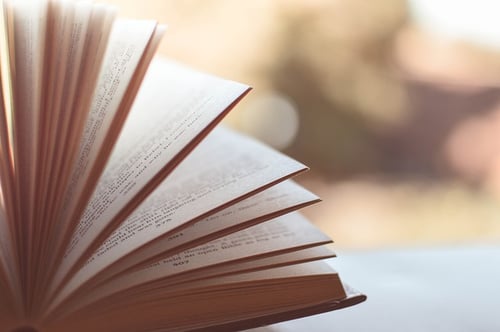
Need to analyze The Scarlet Letter or To Kill a Mockingbird for English class, but fumbling for the right vocabulary and concepts for literary devices? You've come to the right place. To successfully interpret and analyze literary texts, you'll first need to have a solid foundation in literary terms and their definitions.
In this article, we'll help you get familiar with most commonly used literary devices in prose and poetry. We'll give you a clear definition of each of the terms we discuss along with examples of literary elements and the context in which they most often appear (comedic writing, drama, or other).
Before we get to the list of literary devices, however, we have a quick refresher on what literary devices are and how understanding them will help you analyze works of literature.
What Are Literary Devices and Why Should You Know Them?
Literary devices are techniques that writers use to create a special and pointed effect in their writing, to convey information, or to help readers understand their writing on a deeper level.
Often, literary devices are used in writing for emphasis or clarity. Authors will also use literary devices to get readers to connect more strongly with either a story as a whole or specific characters or themes.
So why is it important to know different literary devices and terms? Aside from helping you get good grades on your literary analysis homework, there are several benefits to knowing the techniques authors commonly use.
Being able to identify when different literary techniques are being used helps you understand the motivation behind the author's choices. For example, being able to identify symbols in a story can help you figure out why the author might have chosen to insert these focal points and what these might suggest in regard to her attitude toward certain characters, plot points, and events.
In addition, being able to identify literary devices can make a written work's overall meaning or purpose clearer to you. For instance, let's say you're planning to read (or re-read) The Lion, the Witch, and the Wardrobe by C.S. Lewis. By knowing that this particular book is a religious allegory with references to Christ (represented by the character Aslan) and Judas (represented by Edmund), it will be clearer to you why Lewis uses certain language to describe certain characters and why certain events happen the way they do.
Finally, literary techniques are important to know because they make texts more interesting and more fun to read. If you were to read a novel without knowing any literary devices, chances are you wouldn't be able to detect many of the layers of meaning interwoven into the story via different techniques.
Now that we've gone over why you should spend some time learning literary devices, let's take a look at some of the most important literary elements to know.
List of Literary Devices: 31 Literary Terms You Should Know
Below is a list of literary devices, most of which you'll often come across in both prose and poetry. We explain what each literary term is and give you an example of how it's used. This literary elements list is arranged in alphabetical order.
An allegory is a story that is used to represent a more general message about real-life (historical) issues and/or events. It is typically an entire book, novel, play, etc.
Example: George Orwell's dystopian book Animal Farm is an allegory for the events preceding the Russian Revolution and the Stalinist era in early 20th century Russia. In the story, animals on a farm practice animalism, which is essentially communism. Many characters correspond to actual historical figures: Old Major represents both the founder of communism Karl Marx and the Russian communist leader Vladimir Lenin; the farmer, Mr. Jones, is the Russian Czar; the boar Napoleon stands for Joseph Stalin; and the pig Snowball represents Leon Trotsky.
Alliteration
Alliteration is a series of words or phrases that all (or almost all) start with the same sound. These sounds are typically consonants to give more stress to that syllable. You'll often come across alliteration in poetry, titles of books and poems ( Jane Austen is a fan of this device, for example—just look at Pride and Prejudice and Sense and Sensibility ), and tongue twisters.
Example: "Peter Piper picked a peck of pickled peppers." In this tongue twister, the "p" sound is repeated at the beginning of all major words.
Allusion is when an author makes an indirect reference to a figure, place, event, or idea originating from outside the text. Many allusions make reference to previous works of literature or art.
Example: "Stop acting so smart—it's not like you're Einstein or something." This is an allusion to the famous real-life theoretical physicist Albert Einstein.
Anachronism
An anachronism occurs when there is an (intentional) error in the chronology or timeline of a text. This could be a character who appears in a different time period than when he actually lived, or a technology that appears before it was invented. Anachronisms are often used for comedic effect.
Example: A Renaissance king who says, "That's dope, dude!" would be an anachronism, since this type of language is very modern and not actually from the Renaissance period.
Anaphora is when a word or phrase is repeated at the beginning of multiple sentences throughout a piece of writing. It's used to emphasize the repeated phrase and evoke strong feelings in the audience.
Example: A famous example of anaphora is Winston Churchill's "We Shall Fight on the Beaches" speech. Throughout this speech, he repeats the phrase "we shall fight" while listing numerous places where the British army will continue battling during WWII. He did this to rally both troops and the British people and to give them confidence that they would still win the war.
Anthropomorphism
An anthropomorphism occurs when something nonhuman, such as an animal, place, or inanimate object, behaves in a human-like way.
Example: Children's cartoons have many examples of anthropomorphism. For example, Mickey and Minnie Mouse can speak, wear clothes, sing, dance, drive cars, etc. Real mice can't do any of these things, but the two mouse characters behave much more like humans than mice.
Asyndeton is when the writer leaves out conjunctions (such as "and," "or," "but," and "for") in a group of words or phrases so that the meaning of the phrase or sentence is emphasized. It is often used for speeches since sentences containing asyndeton can have a powerful, memorable rhythm.
Example: Abraham Lincoln ends the Gettysburg Address with the phrase "...and that government of the people, by the people, for the people shall not perish from the Earth." By leaving out certain conjunctions, he ends the speech on a more powerful, melodic note.
Colloquialism
Colloquialism is the use of informal language and slang. It's often used by authors to lend a sense of realism to their characters and dialogue. Forms of colloquialism include words, phrases, and contractions that aren't real words (such as "gonna" and "ain't").
Example: "Hey, what's up, man?" This piece of dialogue is an example of a colloquialism, since it uses common everyday words and phrases, namely "what's up" and "man."
An epigraph is when an author inserts a famous quotation, poem, song, or other short passage or text at the beginning of a larger text (e.g., a book, chapter, etc.). An epigraph is typically written by a different writer (with credit given) and used as a way to introduce overarching themes or messages in the work. Some pieces of literature, such as Herman Melville's 1851 novel Moby-Dick , incorporate multiple epigraphs throughout.
Example: At the beginning of Ernest Hemingway's book The Sun Also Rises is an epigraph that consists of a quotation from poet Gertrude Stein, which reads, "You are all a lost generation," and a passage from the Bible.
Epistrophe is similar to anaphora, but in this case, the repeated word or phrase appears at the end of successive statements. Like anaphora, it is used to evoke an emotional response from the audience.
Example: In Lyndon B. Johnson's speech, "The American Promise," he repeats the word "problem" in a use of epistrophe: "There is no Negro problem. There is no Southern problem. There is no Northern problem. There is only an American problem."

A euphemism is when a more mild or indirect word or expression is used in place of another word or phrase that is considered harsh, blunt, vulgar, or unpleasant.
Example: "I'm so sorry, but he didn't make it." The phrase "didn't make it" is a more polite and less blunt way of saying that someone has died.
A flashback is an interruption in a narrative that depicts events that have already occurred, either before the present time or before the time at which the narration takes place. This device is often used to give the reader more background information and details about specific characters, events, plot points, and so on.
Example: Most of the novel Wuthering Heights by Emily Brontë is a flashback from the point of view of the housekeeper, Nelly Dean, as she engages in a conversation with a visitor named Lockwood. In this story, Nelly narrates Catherine Earnshaw's and Heathcliff's childhoods, the pair's budding romance, and their tragic demise.
Foreshadowing
Foreshadowing is when an author indirectly hints at—through things such as dialogue, description, or characters' actions—what's to come later on in the story. This device is often used to introduce tension to a narrative.
Example: Say you're reading a fictionalized account of Amelia Earhart. Before she embarks on her (what we know to be unfortunate) plane ride, a friend says to her, "Be safe. Wouldn't want you getting lost—or worse." This line would be an example of foreshadowing because it implies that something bad ("or worse") will happen to Earhart.
Hyperbole is an exaggerated statement that's not meant to be taken literally by the reader. It is often used for comedic effect and/or emphasis.
Example: "I'm so hungry I could eat a horse." The speaker will not literally eat an entire horse (and most likely couldn't ), but this hyperbole emphasizes how starved the speaker feels.
Imagery is when an author describes a scene, thing, or idea so that it appeals to our senses (taste, smell, sight, touch, or hearing). This device is often used to help the reader clearly visualize parts of the story by creating a strong mental picture.
Example: Here's an example of imagery taken from William Wordsworth's famous poem "I Wandered Lonely as a Cloud":
When all at once I saw a crowd, A host of golden Daffodils; Beside the Lake, beneath the trees, Fluttering and dancing in the breeze.
Irony is when a statement is used to express an opposite meaning than the one literally expressed by it. There are three types of irony in literature:
- Verbal irony: When someone says something but means the opposite (similar to sarcasm).
- Situational irony: When something happens that's the opposite of what was expected or intended to happen.
- Dramatic irony: When the audience is aware of the true intentions or outcomes, while the characters are not . As a result, certain actions and/or events take on different meanings for the audience than they do for the characters involved.
- Verbal irony: One example of this type of irony can be found in Edgar Allan Poe's "The Cask of Amontillado." In this short story, a man named Montresor plans to get revenge on another man named Fortunato. As they toast, Montresor says, "And I, Fortunato—I drink to your long life." This statement is ironic because we the readers already know by this point that Montresor plans to kill Fortunato.
- Situational irony: A girl wakes up late for school and quickly rushes to get there. As soon as she arrives, though, she realizes that it's Saturday and there is no school.
- Dramatic irony: In William Shakespeare's Romeo and Juliet , Romeo commits suicide in order to be with Juliet; however, the audience (unlike poor Romeo) knows that Juliet is not actually dead—just asleep.

Juxtaposition
Juxtaposition is the comparing and contrasting of two or more different (usually opposite) ideas, characters, objects, etc. This literary device is often used to help create a clearer picture of the characteristics of one object or idea by comparing it with those of another.
Example: One of the most famous literary examples of juxtaposition is the opening passage from Charles Dickens' novel A Tale of Two Cities :
"It was the best of times, it was the worst of times, it was the age of wisdom, it was the age of foolishness, it was the epoch of belief, it was the epoch of incredulity, it was the season of Light, it was the season of Darkness, it was the spring of hope, it was the winter of despair …"
Malapropism
Malapropism happens when an incorrect word is used in place of a word that has a similar sound. This misuse of the word typically results in a statement that is both nonsensical and humorous; as a result, this device is commonly used in comedic writing.
Example: "I just can't wait to dance the flamingo!" Here, a character has accidentally called the flamenco (a type of dance) the flamingo (an animal).
Metaphor/Simile
Metaphors are when ideas, actions, or objects are described in non-literal terms. In short, it's when an author compares one thing to another. The two things being described usually share something in common but are unalike in all other respects.
A simile is a type of metaphor in which an object, idea, character, action, etc., is compared to another thing using the words "as" or "like."
Both metaphors and similes are often used in writing for clarity or emphasis.
"What light through yonder window breaks? It is the east, and Juliet is the sun." In this line from Romeo and Juliet , Romeo compares Juliet to the sun. However, because Romeo doesn't use the words "as" or "like," it is not a simile—just a metaphor.
"She is as vicious as a lion." Since this statement uses the word "as" to make a comparison between "she" and "a lion," it is a simile.
A metonym is when a related word or phrase is substituted for the actual thing to which it's referring. This device is usually used for poetic or rhetorical effect .
Example: "The pen is mightier than the sword." This statement, which was coined by Edward Bulwer-Lytton in 1839, contains two examples of metonymy: "the pen" refers to "the written word," and "the sword" refers to "military force/violence."
Mood is the general feeling the writer wants the audience to have. The writer can achieve this through description, setting, dialogue, and word choice .
Example: Here's a passage from J.R.R. Tolkien's The Hobbit: "It had a perfectly round door like a porthole, painted green, with a shiny yellow brass knob in the exact middle. The door opened on to a tube-shaped hall like a tunnel: a very comfortable tunnel without smoke, with panelled walls, and floors tiled and carpeted, provided with polished chairs, and lots and lots of pegs for hats and coats -- the hobbit was fond of visitors." In this passage, Tolkien uses detailed description to set create a cozy, comforting mood. From the writing, you can see that the hobbit's home is well-cared for and designed to provide comfort.
Onomatopoeia
Onomatopoeia is a word (or group of words) that represents a sound and actually resembles or imitates the sound it stands for. It is often used for dramatic, realistic, or poetic effect.
Examples: Buzz, boom, chirp, creak, sizzle, zoom, etc.
An oxymoron is a combination of two words that, together, express a contradictory meaning. This device is often used for emphasis, for humor, to create tension, or to illustrate a paradox (see next entry for more information on paradoxes).
Examples: Deafening silence, organized chaos, cruelly kind, insanely logical, etc.
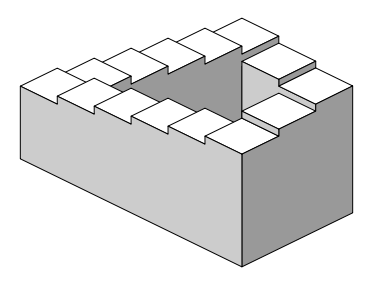
A paradox is a statement that appears illogical or self-contradictory but, upon investigation, might actually be true or plausible.
Note that a paradox is different from an oxymoron: a paradox is an entire phrase or sentence, whereas an oxymoron is a combination of just two words.
Example: Here's a famous paradoxical sentence: "This statement is false." If the statement is true, then it isn't actually false (as it suggests). But if it's false, then the statement is true! Thus, this statement is a paradox because it is both true and false at the same time.
Personification
Personification is when a nonhuman figure or other abstract concept or element is described as having human-like qualities or characteristics. (Unlike anthropomorphism where non-human figures become human-like characters, with personification, the object/figure is simply described as being human-like.) Personification is used to help the reader create a clearer mental picture of the scene or object being described.
Example: "The wind moaned, beckoning me to come outside." In this example, the wind—a nonhuman element—is being described as if it is human (it "moans" and "beckons").
Repetition is when a word or phrase is written multiple times, usually for the purpose of emphasis. It is often used in poetry (for purposes of rhythm as well).
Example: When Lin-Manuel Miranda, who wrote the score for the hit musical Hamilton, gave his speech at the 2016 Tony's, he recited a poem he'd written that included the following line:
And love is love is love is love is love is love is love is love cannot be killed or swept aside.
Satire is genre of writing that criticizes something , such as a person, behavior, belief, government, or society. Satire often employs irony, humor, and hyperbole to make its point.
Example: The Onion is a satirical newspaper and digital media company. It uses satire to parody common news features such as opinion columns, editorial cartoons, and click bait headlines.
A type of monologue that's often used in dramas, a soliloquy is when a character speaks aloud to himself (and to the audience), thereby revealing his inner thoughts and feelings.
Example: In Romeo and Juliet , Juliet's speech on the balcony that begins with, "O Romeo, Romeo! Wherefore art thou Romeo?" is a soliloquy, as she is speaking aloud to herself (remember that she doesn't realize Romeo's there listening!).
Symbolism refers to the use of an object, figure, event, situation, or other idea in a written work to represent something else— typically a broader message or deeper meaning that differs from its literal meaning.
The things used for symbolism are called "symbols," and they'll often appear multiple times throughout a text, sometimes changing in meaning as the plot progresses.
Example: In F. Scott Fitzgerald's 1925 novel The Great Gatsby , the green light that sits across from Gatsby's mansion symbolizes Gatsby's hopes and dreams .
A synecdoche is a literary device in which part of something is used to represent the whole, or vice versa. It's similar to a metonym (see above); however, a metonym doesn't have to represent the whole—just something associated with the word used.
Example: "Help me out, I need some hands!" In this case, "hands" is being used to refer to people (the whole human, essentially).
While mood is what the audience is supposed to feel, tone is the writer or narrator's attitude towards a subject . A good writer will always want the audience to feel the mood they're trying to evoke, but the audience may not always agree with the narrator's tone, especially if the narrator is an unsympathetic character or has viewpoints that differ from those of the reader.
Example: In an essay disdaining Americans and some of the sites they visit as tourists, Rudyard Kipling begins with the line, "Today I am in the Yellowstone Park, and I wish I were dead." If you enjoy Yellowstone and/or national parks, you may not agree with the author's tone in this piece.
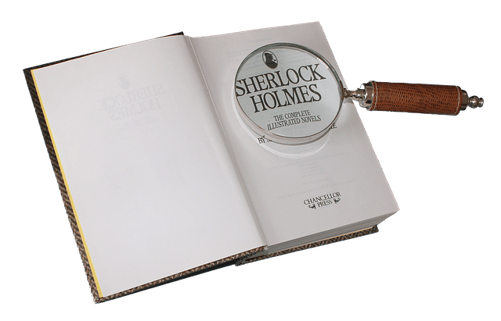
How to Identify and Analyze Literary Devices: 4 Tips
In order to fully interpret pieces of literature, you have to understand a lot about literary devices in the texts you read. Here are our top tips for identifying and analyzing different literary techniques:
Tip 1: Read Closely and Carefully
First off, you'll need to make sure that you're reading very carefully. Resist the temptation to skim or skip any sections of the text. If you do this, you might miss some literary devices being used and, as a result, will be unable to accurately interpret the text.
If there are any passages in the work that make you feel especially emotional, curious, intrigued, or just plain interested, check that area again for any literary devices at play.
It's also a good idea to reread any parts you thought were confusing or that you didn't totally understand on a first read-through. Doing this ensures that you have a solid grasp of the passage (and text as a whole) and will be able to analyze it appropriately.
Tip 2: Memorize Common Literary Terms
You won't be able to identify literary elements in texts if you don't know what they are or how they're used, so spend some time memorizing the literary elements list above. Knowing these (and how they look in writing) will allow you to more easily pinpoint these techniques in various types of written works.
Tip 3: Know the Author's Intended Audience
Knowing what kind of audience an author intended her work to have can help you figure out what types of literary devices might be at play.
For example, if you were trying to analyze a children's book, you'd want to be on the lookout for child-appropriate devices, such as repetition and alliteration.
Tip 4: Take Notes and Bookmark Key Passages and Pages
This is one of the most important tips to know, especially if you're reading and analyzing works for English class. As you read, take notes on the work in a notebook or on a computer. Write down any passages, paragraphs, conversations, descriptions, etc., that jump out at you or that contain a literary device you were able to identify.
You can also take notes directly in the book, if possible (but don't do this if you're borrowing a book from the library!). I recommend circling keywords and important phrases, as well as starring interesting or particularly effective passages and paragraphs.
Lastly, use sticky notes or post-its to bookmark pages that are interesting to you or that have some kind of notable literary device. This will help you go back to them later should you need to revisit some of what you've found for a paper you plan to write.
What's Next?
Looking for more in-depth explorations and examples of literary devices? Join us as we delve into imagery , personification , rhetorical devices , tone words and mood , and different points of view in literature, as well as some more poetry-specific terms like assonance and iambic pentameter .
Reading The Great Gatsby for class or even just for fun? Then you'll definitely want to check out our expert guides on the biggest themes in this classic book, from love and relationships to money and materialism .
Got questions about Arthur Miller's The Crucible ? Read our in-depth articles to learn about the most important themes in this play and get a complete rundown of all the characters .
For more information on your favorite works of literature, take a look at our collection of high-quality book guides and our guide to the 9 literary elements that appear in every story !

These recommendations are based solely on our knowledge and experience. If you purchase an item through one of our links, PrepScholar may receive a commission.

Hannah received her MA in Japanese Studies from the University of Michigan and holds a bachelor's degree from the University of Southern California. From 2013 to 2015, she taught English in Japan via the JET Program. She is passionate about education, writing, and travel.
Ask a Question Below
Have any questions about this article or other topics? Ask below and we'll reply!
Improve With Our Famous Guides
- For All Students
The 5 Strategies You Must Be Using to Improve 160+ SAT Points
How to Get a Perfect 1600, by a Perfect Scorer
Series: How to Get 800 on Each SAT Section:
Score 800 on SAT Math
Score 800 on SAT Reading
Score 800 on SAT Writing
Series: How to Get to 600 on Each SAT Section:
Score 600 on SAT Math
Score 600 on SAT Reading
Score 600 on SAT Writing
Free Complete Official SAT Practice Tests
What SAT Target Score Should You Be Aiming For?
15 Strategies to Improve Your SAT Essay
The 5 Strategies You Must Be Using to Improve 4+ ACT Points
How to Get a Perfect 36 ACT, by a Perfect Scorer
Series: How to Get 36 on Each ACT Section:
36 on ACT English
36 on ACT Math
36 on ACT Reading
36 on ACT Science
Series: How to Get to 24 on Each ACT Section:
24 on ACT English
24 on ACT Math
24 on ACT Reading
24 on ACT Science
What ACT target score should you be aiming for?
ACT Vocabulary You Must Know
ACT Writing: 15 Tips to Raise Your Essay Score
How to Get Into Harvard and the Ivy League
How to Get a Perfect 4.0 GPA
How to Write an Amazing College Essay
What Exactly Are Colleges Looking For?
Is the ACT easier than the SAT? A Comprehensive Guide
Should you retake your SAT or ACT?
When should you take the SAT or ACT?
Stay Informed
Get the latest articles and test prep tips!
Looking for Graduate School Test Prep?
Check out our top-rated graduate blogs here:
GRE Online Prep Blog
GMAT Online Prep Blog
TOEFL Online Prep Blog
Holly R. "I am absolutely overjoyed and cannot thank you enough for helping me!”
Literary Analysis Essay Writing
How to Write a Literary Analysis Essay - A Step-by-Step Guide
16 min read
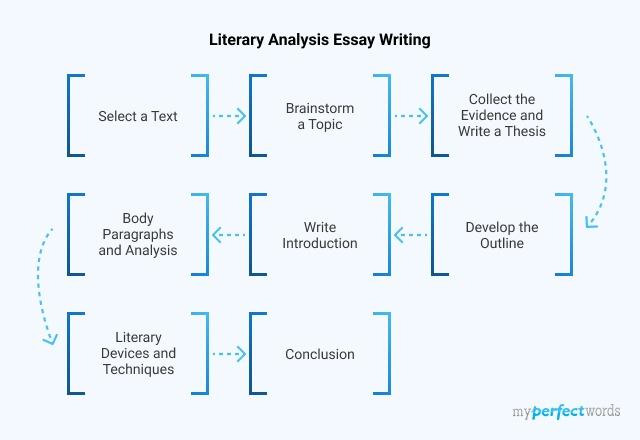
People also read
Interesting Literary Analysis Essay Topics & Ideas
Literary Analysis Essay Outline - A Step By Step Guide
Students often struggle when asked to write a literary analysis essay. It's challenging to know where to begin and how to navigate the complexities of dissecting a text.
The world of literary analysis can seem confusing, with symbolism, tone, and perspective to consider. Without guidance, it's easy to feel lost.
In this guide, we'll provide a clear roadmap, practical tips, and examples to simplify the process. You'll gain the skills to confidently analyze any text. By the end of this read, you will have the skills to develop a good literary analysis essay.
So let’s dive right in!
- 1. What is a Literary Analysis Essay?
- 2. How to Write a Literary Analysis Essay?
- 3. Types of Literary Analysis Essay
- 4. Literary Analysis Essay Example
- 5. Literary Analysis Essay Topics
What is a Literary Analysis Essay?
A literary analysis essay is a detailed examination of a literary work's components, including its themes, characters, setting, and the author's creative choices.
This analytical approach can be applied to various forms of literary writing, such as novels, short stories, plays, poems, etc. It's a method for diving deeper into the layers of meaning within a literary work.
Literary Essay, Rhetorical Analysis, and Argumentative Essay
A Literary Analysis Essay is distinct from a rhetorical analysis or argumentative essay. While all three types of essays involve a critical examination, they have different purposes and focuses.
- In a literary analysis essay , the focus is on exploring elements of a literary work, like themes, characters, and symbolism, to understand the author's choices.
- Conversely, a rhetorical analysis essay assesses how an author uses persuasive techniques in non-literary contexts.
- An argumentative essay aims to present a clear viewpoint on a specific topic supported by evidence and reasoning.
These essays demand critical thinking, but they serve different communication and expression purposes.

Paper Due? Why Suffer? That's our Job!
How to Write a Literary Analysis Essay?
Writing a strong literary analysis essay can be tricky. Many students often fall into the trap of sharing their own thoughts or simply summarizing the text.
To avoid this and write a more effective literary analysis essay, follow the steps below:
Step 1: Select a Text
To begin your literary analysis essay, pick a piece of writing that you like and is suitable for analysis. This could be a poem, a short story, a novel, a play, or any similar written work.
Tips for Choosing Your Text
- Take it slow. Read them more than once.
- Pay attention to the words used and their meanings.
- Think about the emotions or ideas the author is trying to convey.
- Look at the way it's structured, like how a poem is divided into lines and stanzas.
- Give yourself enough time to read the whole thing.
- Take notes on important events, characters, and themes.
- Think about the author's choices in writing and how they affect the story.
- Consider the overall structure and how the parts fit together.
Explore Language Choices:
- Look for words or phrases that stand out. They might have special meanings or create certain feelings.
- Consider how the author uses language to describe things, characters, or emotions.
Understand Narrative Voice:
- Think about who is telling the story. Is it one of the characters (first-person) or someone outside the story (third-person)?
- The narrative voice can shape how you perceive the events and characters.
Analyzing Structure:
- Examine how the text is organized. For example, poems have lines and stanzas, while novels have chapters.
- Structure can affect the flow of the story and the reader's experience. Pay attention to how it's used in the text you've chosen.
Step 2: Brainstorm a Topic
Once you've chosen your text, the next step is to come up with a topic for your literary analysis essay. Think about what aspect of the text you find most interesting or want to explore.
It could be a theme, a character's development, the use of symbolism, or anything else that stands out to you.
Tips for Brainstorming a Topic:
- Consider what questions you have about the text. What do you want to understand better?
- Look for patterns or recurring elements in the text. Is there something that keeps coming up, like a symbol or a particular theme?
- Think about the author's choices. Why did they write the text this way? What message are they trying to convey?
- Don't rush this step. Take your time to explore different ideas, and choose a topic that genuinely interests you. It will make the writing process more engaging and enjoyable.
Step 3: Collect the Evidence and Write a Thesis
Now that you have your topic, it's time to gather evidence from the text to support your analysis. Look for quotes, passages, or examples that relate to your chosen topic. Once you have your evidence, use it to craft your thesis statement .
This statement should be a concise summary of the main point or argument you'll explore in your literary essay.
Tips for Collecting Evidence and Writing a Thesis:
- Your thesis should be a single sentence that presents your analysis or interpretation of the text. It's your main argument.
- Your evidence should directly support your thesis. It's the proof that your analysis is based on.
Step 4: Develop the Outline
Creating an outline is like making a roadmap for your literary analysis essay. It helps you organize your thoughts and decide how to structure your essay. Here's how to develop a literary analysis essay outline :
Tips for Developing the Outline:
- Start with your introduction: Write down the main points you want to cover in the introduction, such as introducing the text, the author, and your thesis statement.
- Plan your body paragraphs: Decide how many body paragraphs you'll have and what each one will focus on. Will you analyze characters, themes, symbols, or something else?
- List your supporting points: Under each body paragraph, jot down the key ideas or arguments you'll discuss.
- Consider your conclusion: Think about how you'll sum up your analysis and restate your thesis in the conclusion.
Step 5: Craft Your Introduction
Your introduction sets the stage for your literary analysis essay. It should grab the reader's attention and provide essential information about the text you're analyzing.
Tips for Crafting Your Introduction:
- Begin with a hook : Start with an intriguing question, a captivating quote, or an interesting fact related to your text.
- Introduce the text and the author: Provide some background information about the literary work and its creator. Mention the title, author's name, and any relevant context.
- Present your thesis statement: Clearly state the main point or argument you'll explore in your essay.
- Give a brief overview: Provide a snapshot of what your analysis will cover, mentioning the key elements or aspects of the text you'll discuss.
Step 6: Write Body Paragraphs and Analysis
Now that you've laid the groundwork with your outline, it's time to dive into writing the body of your literary analysis essay. Each paragraph should focus on one of the main points or arguments you outlined in the previous step.
Here is how to write body paragraphs:
- Topic Sentence: Start each body paragraph with a clear topic sentence that relates to your thesis. This sentence should introduce the main point you'll discuss in the paragraph.
- Provide Evidence: Use quotes or specific examples from the text to support your topic sentence. Make sure the evidence directly relates to your argument.
- Analysis: After presenting evidence, analyze it. Explain how the evidence supports your argument and contributes to your overall thesis. What does it reveal about the text and its meaning?
- Transition: Use transition words and sentences to smoothly connect your ideas and guide the reader through your analysis. These sentences help create a logical flow between paragraphs.
Step 7: Literary Devices and Techniques
In this step, you'll explore the literary devices and techniques used by the author in the text. These devices, such as symbolism, imagery, foreshadowing, and irony, play a crucial role in conveying the author's message and creating a deeper layer of meaning.
You can dedicate specific paragraphs or sections of your essay to discuss these literary devices.
How to Analyze Literary Devices and Techniques:
- Identify Devices: Begin by identifying the literary devices used in the text. Look for symbols, metaphors, similes, imagery, alliteration, personification, and more. Note where and how they appear.
- Examine Their Purpose: Consider why the author used these devices. What do they add to the story or poem? How do they contribute to the overall message or theme?
- Impact on the Reader: Explain how these literary devices enhance the narrative and reinforce the themes or messages within the work.
- Provide Examples: Use specific examples from the text to illustrate and reinforce your analysis.
Step 8: Conclude your Essay
Concluding your literary analysis essay is the final step in wrapping up your analysis and leaving a lasting impression on the reader. Here's how to craft a strong conclusion:
Key Elements of a Strong Conclusion:
- Key Findings Recap: Summarize your key findings and restate your thesis statement in a rephrased manner.
- Significance Emphasis: Emphasize the significance of your analysis and highlight its broader implications for understanding the literary work as a whole.
- Thought-Provoking Closing: Leave the reader with a thought-provoking or insightful concluding statement that ties together your analysis.
- Avoid Introducing New Ideas: Your conclusion should not introduce new topics or evidence that wasn't discussed in the body of your essay.
Tough Essay Due? Hire Tough Writers!
Types of Literary Analysis Essay
When it comes to literary analysis essays, there isn't just one approach to fit all. The type of literary analysis essay you write depends on your specific goals and the literary work you're analyzing.
Here are some common types:
Theoretical Literary Analysis (Aesthetic or Formalist Analysis)
This type of analysis focuses on the text's form, structure, and aesthetics. It explores how literary elements like symbolism, imagery, and narrative style contribute to the overall meaning.
Close Reading Literary Analysis (Textual Analysis)
Close reading involves a detailed examination of a specific passage or section within the text. It dissects the language, syntax, and word choice to uncover deeper meanings.
Applied Literary Analysis (Practical or Real-World Analysis)
This analysis applies the lessons or insights gained from literature to real-life situations, social issues, or practical concerns. It explores how literature can inform or influence the world.
Comparative or Synergistic Literary Analysis
This type of analysis explores connections and contrasts between different texts, genres, or forms of art. It considers how literature interacts with other disciplines, such as history, psychology, or visual arts.
Contextual or Historical Literary Analysis
This analysis examines a text within its historical, cultural, or social context. It considers how the time period and societal influences shape the themes, characters, and narrative.
Literary Analysis Essay Example
In this section, we provide literary analysis examples that help students better understand and apply literary analysis. These examples cover various aspects, including examining text, exploring themes, and using literary devices.
Let’s check out some literary analysis essay examples pdf below
Literary Analysis Essay Example PDF
Sample Literary Analysis Essay
Literary Analysis Essay Format
Literary Analysis Essay Topics
Choosing a strong topic is important to draft a good literary essay. Following are some topic examples that you can use for your literary essays:
- The Symbolism of the Green Light in 'The Great Gatsby.'
- The Role of Gender and Identity in Shakespeare's Sonnets.
- Exploring the Themes of Love and Fate in 'Romeo and Juliet.'
- The Use of Magical Realism in Gabriel García Márquez's 'One Hundred Years of Solitude.'
- Analyzing the Motif of War in Hemingway's 'A Farewell to Arms.'
- The Metaphorical Layers of George Orwell's 'Animal Farm.'
- The Complexity of Morality in J.D. Salinger's 'The Catcher in the Rye.'
- The Historical Context of Haruki Murakami's 'Kafka on the Shore.'
- The Portrayal of Race and Identity in Zora Neale Hurston's 'Their Eyes Were Watching God.'
- The Significance of Nature in the Poetry of Emily Dickinson.
Looking for more topic ideas? Our literary analysis essay topics blog has plenty of ideas for you!
Wrapping Up!
We hope this guide has provided you with the insights, and clarity you need to start on your literary essay with confidence.
However, if you find yourself short on time remember that professional help is just a click away. At MyPerfectWords.com , we offer reliable essay writing service at the best price.
Our team of expert writers is well-equipped to handle a diverse range of literary analysis topics. So, if you're ready to take your literary analysis to the next level, get our paper writing help today.
Frequently Asked Questions
What should a literary analysis essay include.
A good essay will have an explanation of the author's ideas and evidence from their text (short story, poem) to support those thoughts. Textual information includes a summary, paraphrase as well specific details like direct quotations in summaries or extracts where they are relevant for clarification on certain points.
Why literary analysis is important?
By analyzing literary work, students can see that successful art is more than just self-expression. It may serve a purpose beyond the creator's intent whether it be to inform or evoke empathy in its audience and even inspire them at times.

Write Essay Within 60 Seconds!

Cathy has been been working as an author on our platform for over five years now. She has a Masters degree in mass communication and is well-versed in the art of writing. Cathy is a professional who takes her work seriously and is widely appreciated by clients for her excellent writing skills.

Paper Due? Why Suffer? That’s our Job!
Keep reading
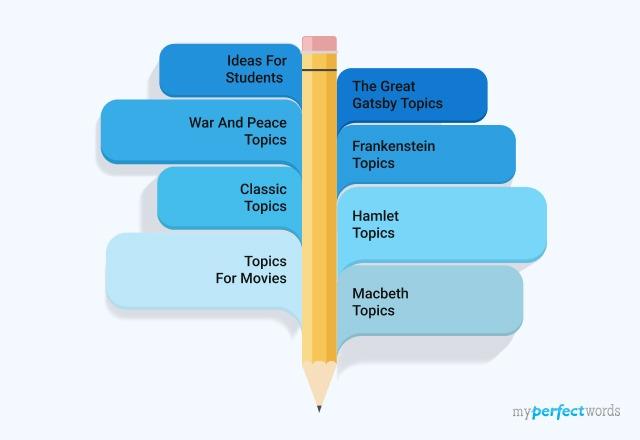
- Literary Terms
When and How to Use Literary Devices
- Definition & Examples
- When & How to Use Literary Devices
How to Use Literary Devices
- Write Naturally. Whenever you write, you’re using literary/ rhetorical devices – even if you don’t know it! That’s because some of these techniques are such a natural part of everyday speech that they slip into our writing as well.
- Read Carefully. All your favorite authors use literary devices , and if you pay close attention, you can keep track of them as you read. As you get good at recognizing literary devices, try to see how the author uses many different devices to contribute to the overall effect of the story or poem.
- Learn individual techniques . Each literary device has its own tricks and benefits, and no one is perfect at all of them. But the only way to improve is through patient practice. Try to learn a new technique every week or so and incorporate it into your own everyday writing.
When to Use Literary Devices
By definition, literary devices occur in literature rather than essays . So, strictly speaking, they belong to creative writing. Rhetorical devices would be the ones used in an essay. Again, though, literary devices are basically the same as rhetorical devices, so this distinction doesn’t matter too much. Literary/ rhetorical devices are appropriate for every form of writing – even emails and text messages! If you pay attention, you’ll probably catch yourself using devices like rhetorical questions , analogies , and puns as you write.
List of Terms
- Alliteration
- Amplification
- Anachronism
- Anthropomorphism
- Antonomasia
- APA Citation
- Aposiopesis
- Autobiography
- Bildungsroman
- Characterization
- Circumlocution
- Cliffhanger
- Comic Relief
- Connotation
- Deus ex machina
- Deuteragonist
- Doppelganger
- Double Entendre
- Dramatic irony
- Equivocation
- Extended Metaphor
- Figures of Speech
- Flash-forward
- Foreshadowing
- Intertextuality
- Juxtaposition
- Literary Device
- Malapropism
- Onomatopoeia
- Parallelism
- Pathetic Fallacy
- Personification
- Point of View
- Polysyndeton
- Protagonist
- Red Herring
- Rhetorical Device
- Rhetorical Question
- Science Fiction
- Self-Fulfilling Prophecy
- Synesthesia
- Turning Point
- Understatement
- Urban Legend
- Verisimilitude
- Essay Guide
- Cite This Website
- How It Works
- Prices & Discounts
How College Students Can Use Literary Devices to Improve their Essay Writing
Table of contents
“ If you can look into the seeds of time, and say which grain will grow and which will not, speak then to me.” — Macbeth , William Shakespeare
Mind-blowing, isn’t it?
But do you realize what made this sentence so “mind-blowing”? The strategic use of metaphor.
We have always wondered how certain writers manage to leave us in awe and inspired. You might think you can’t achieve it, but with the proper techniques and practice, it isn’t.
While many elements make up powerful writing, one of the techniques is literary devices. What are literary devices, you ask?
They are tools writers use to heighten their narrative and evoke emotions to convey their message. Instead of simply stating things for what they are, literary devices manage to bring writing to life and leave a more substantial impact on readers, especially in the case of creative writing assignments.
How You Can Use Literary Devices to Write an Essay
Being a college student, you are bound to be bombarded with several writing assignments. Whether it’s a narrative essay, book critique, or personal statement, knowing how to inject literary devices into your writing can make a huge difference.
More than getting the grades you want, it’s about embracing the art of storytelling and making efforts to ‘wow’ your instructors.
You can be lazy and churn out the same old essay.
Or you can take the use of literary devices and your writing to the next level.
The choice is yours.
Decided to go with the latter? Good. Here’s everything you need to know about using literary devices to improve your essay-writing skills.
How do Literary Devices Improve College Essay Writing?
Literary devices, if used smartly, can take your writing from ‘meh’ to ‘wow.’ Here’s how they enhance your writing and take it to the next level.
What is this ‘depth,’ you might wonder ? Well, ‘depth’ is what hooks readers and keeps them invested in your writing. It is that ‘oomph’ factor that makes your essay riveting.
When you use literary devices to put your message across, you can make people ponder about the setting you create, the characters you develop, or the situations you describe. Well-placed literary devices have the power to heighten your writing which would have otherwise been flat and dull.
Paint a Picture
You’ve heard of the age-old writing advice, “Show, Don’t Tell”, haven’t you? It encourages writers to write vividly and paint a picture in the minds of readers which is way more powerful than a thousand words.
Using literary devices can help you achieve that because you let readers visualize what you’re trying to say, leaving a more significant impact in their minds.
Want to know more about writing descriptively?
Watch this video by Darin Mount , wherein he throws more light on this subject
Evoke Emotional Response
We can all agree that the best writing connects with the reader and evokes an emotional response. Whether it’s sadness, joy, anger, or disdain - using literary devices to make readers feel what you want them to feel is always a winner.
Make it Interesting
Last but not least, literary devices make the piece more pleasurable to read.
No one likes boring essays. You must constantly innovate and think of new, creative ways to add life to your writing. Whether you want to add humor, drama, or just pace your essay - the use of the proper devices can do this for you.
10 Types of Literary Devices You Can Use in Your Essay
There is a laundry list of literary devices but let’s look at the best literary devices ones you should know about:
1. Metaphor
One of the most common literary devices, metaphors, is used across essays, books, songs, poems, and speeches. They are used to compare two completely unrelated objects. The idea is to provide a more robust description such that the reader interprets it better.
E.g., All the world’s a stage, and all the men and women are merely players.
Here, Shakespeare is comparing the world to the stage and implying that we are all actors enacting different scenes.
The problem with metaphors is that there are so many of them doing the rounds that using the common ones, such as “It is raining cats and dogs” or “Life is a rollercoaster,” among many others, don’t have the impact they should.
Hence, before inserting a metaphor, ensure it’s unique and not overused for it to be truly effective.
Similes and metaphors are not the same. Even though similes compare two different objects, they use the words ‘as’ or ‘like’, making explicit comparisons, unlike metaphors.
Using similes makes writing more interesting and descriptive. Coming up with new similes gets you to push your creative boundaries.
E.g., Fit as a fiddle, Brave as a lion, Slept like a log, etc.
3. Symbolism
As the name suggests, symbolism is when you give a different meaning to an object/subject/action to represent a more extensive concept for readers to understand it at a deeper level. Unlike metaphors and similes, symbolism is a more subtle form of comparison.
Using symbolism is almost like making your writing poetic. Instead of explicitly stating the obvious, you can use symbolism to let readers interpret it and think deeper.
E.g., The works of women are symbolic.
We sew, sew, prick our fingers, dull our sight,
Producing what? A pair of slippers, sir,
To put on when you're weary.
These lines are from Elizabeth Barret Browning’s Aurora Leigh, wherein she compares women to ‘slippers’ that one only turns to when tired, implying how undervalued women are.
4. Alliteration
Alliteration means “letter of the alphabet” and refers to using words that begin with the letters of the same sound group in quick succession. They also refer to using words that start with the same letter.
Alliterations are generally used to draw attention and make something pleasurable to read. You can also use alliteration to name a character or place.
E.g., Peter Piper Picked a Peck of Pickled Peppers.
They all begin with the letter ‘p.’
Sally ate salmon on Sunday.
Even though ‘Sally,’ ‘salmon,’ and ‘Sunday’ begin with ‘s,’ this is not considered an alliteration because none of the words have a similar sound.
“Oh, the irony!” - you must have encountered this phase several times. So, what does irony mean? It is used to highlight situations wherein something is very different from what it seems to be. Irony can be used to inject humor or to add a profound meaning.
Broadly, ironies are divided into - verbal irony, situational irony, and dramatic irony.
Verbal irony is when the speaker says something that is the opposite of what he/she actually means. “Isn’t that sarcasm?” many might wonder.
Video by Christopher Warner explaining the difference between the two
Situational irony is when the outcome of a situation is very different from what was expected. Dramatic irony is when the character’s understanding of a situation is different from the audience’s.
E.g. Brutus says he is ambitious, And Brutus is an honorable man.
These lines are said by Mark Antony in Julius Caesar wherein he seems to be praising Brutus but actually isn’t.
6. Hyperbole
Think exaggeration. Yes, that is what hyperboles are.
Hyperboles are when you use words or phrases to make something grander or give it a larger-than-life effect. Sometimes exaggerating or using hyperbole is an effective way to convey the message powerfully or lay emphasis on a particular situation. They are purely used for effect and are not meant to be taken literally.
E.g. I was helpless. I did not know what in the world to do. I was quaking from head to foot and could have hung my hat on my eyes, and they stuck out so far.
These lines are from Mark Twain’s Old Times on the Mississippi. The hyperbole here is “hung my hat on my eyes. They stuck out so far”. The writer only uses this sentence to emphasize how helpless he was - in reality, his eyes were not sticking out.
7. Personification
Personification is when you give human characteristics and feelings to inanimate objects, animals, or nature. It gives your writing a dramatic effect and lets your readers relate more easily to the situation or object. Personification is also a powerful storytelling tool to create vivid imagery in the minds of readers.
E.g., Her heart was divided between concern for her sister and resentment against all the others.
Here Jane Austen writes about how the character’s (Elizabeth) ‘heart’ was divided between concern and resentment. It is a way of signifying how Elizabeth herself was torn between these two emotions.
8. Oxymoron
An oxymoron refers to a pair of words that are contradictory or opposing. It is used to focus on the multiple meanings an object might have. It makes descriptions more effective while making the reader understand the intensity of the situation or character.
E.g., All animals are equal, but some animals are more equal than others.
George Orwell writes this line in Animal Farm to explain the prevalent hypocrisies. The fact that “some animals are more equal than others” negates the former part of the sentence, thereby demonstrating a paradoxical situation.
Words and phrases used to create a graphic, mental images are referred to as imagery in the readers' minds. You can use imagery to describe a character, weather, place, event, or emotion.
It is not just limited to the visual senses but also includes any description that appeals to all the other senses, like taste, smell, touch, and hearing.
E.g., Mr. Jaggers's room was lighted by a skylight only and was a most dismal place; the skylight, eccentrically patched like a broken head . . . there were some odd objects that I should not have expected to see--such as an old rusty pistol, a sword in a scabbard, several strange-looking boxes and packages, and two dreadful casts on a shelf, of faces peculiarly swollen, and twitchy about the nose.
This is an excerpt from Charles Dickens’s Great Expectations wherein Pip is describing Mr. Jaggers’ room and reading this. We can almost visualize and get a sense of what it would look like.
10. Onomatopoeia
Now, here’s an interesting one - onomatopoeia refers to sound words that are spelled the way their sounds sound. They let the reader hear the sound being written about, engrossing them in the situation or world created in the writing. It’s a simple yet powerful way to emphasize a sound.
Eg.: Hark, hark!
The watch-dogs bark!
Hark, hark! I hear.
These lines from Shakespeare’s The Tempest use onomatopoeia to emphasize on the dogs barking, making us visualize sounds.
Please don’t get overwhelmed by the number of literary devices and be pressured to memorize them or even use all of them in your college essays, for that matter.
While there is no rule for the number of literary devices you can use, what’s important is to maintain a healthy balance and use this tool sparingly. It would be best to use literary devices that can genuinely add value, enhance your description and engage readers .
If you need help writing an interesting essay for college or want your essay to be polished further, we at Writers Per Hour can help.
Our professional team of essay writers knows precisely where and how to use literary devices in college essays. You can receive superior-quality, 100% original, custom-written essays to meet your needs when you work with us. So, contact us today, and let us come to your rescue!
Share this article
Achieve Academic Success with Expert Assistance!
Crafted from Scratch for You.
Ensuring Your Work’s Originality.
Transform Your Draft into Excellence.
Perfecting Your Paper’s Grammar, Style, and Format (APA, MLA, etc.).
Calculate the cost of your paper
Get ideas for your essay

- school Campus Bookshelves
- menu_book Bookshelves
- perm_media Learning Objects
- login Login
- how_to_reg Request Instructor Account
- hub Instructor Commons
Margin Size
- Download Page (PDF)
- Download Full Book (PDF)
- Periodic Table
- Physics Constants
- Scientific Calculator
- Reference & Cite
- Tools expand_more
- Readability
selected template will load here
This action is not available.

12.6: Literary Thesis Statements
- Last updated
- Save as PDF
- Page ID 43636

- Heather Ringo & Athena Kashyap
- City College of San Francisco via ASCCC Open Educational Resources Initiative
\( \newcommand{\vecs}[1]{\overset { \scriptstyle \rightharpoonup} {\mathbf{#1}} } \)
\( \newcommand{\vecd}[1]{\overset{-\!-\!\rightharpoonup}{\vphantom{a}\smash {#1}}} \)
\( \newcommand{\id}{\mathrm{id}}\) \( \newcommand{\Span}{\mathrm{span}}\)
( \newcommand{\kernel}{\mathrm{null}\,}\) \( \newcommand{\range}{\mathrm{range}\,}\)
\( \newcommand{\RealPart}{\mathrm{Re}}\) \( \newcommand{\ImaginaryPart}{\mathrm{Im}}\)
\( \newcommand{\Argument}{\mathrm{Arg}}\) \( \newcommand{\norm}[1]{\| #1 \|}\)
\( \newcommand{\inner}[2]{\langle #1, #2 \rangle}\)
\( \newcommand{\Span}{\mathrm{span}}\)
\( \newcommand{\id}{\mathrm{id}}\)
\( \newcommand{\kernel}{\mathrm{null}\,}\)
\( \newcommand{\range}{\mathrm{range}\,}\)
\( \newcommand{\RealPart}{\mathrm{Re}}\)
\( \newcommand{\ImaginaryPart}{\mathrm{Im}}\)
\( \newcommand{\Argument}{\mathrm{Arg}}\)
\( \newcommand{\norm}[1]{\| #1 \|}\)
\( \newcommand{\Span}{\mathrm{span}}\) \( \newcommand{\AA}{\unicode[.8,0]{x212B}}\)
\( \newcommand{\vectorA}[1]{\vec{#1}} % arrow\)
\( \newcommand{\vectorAt}[1]{\vec{\text{#1}}} % arrow\)
\( \newcommand{\vectorB}[1]{\overset { \scriptstyle \rightharpoonup} {\mathbf{#1}} } \)
\( \newcommand{\vectorC}[1]{\textbf{#1}} \)
\( \newcommand{\vectorD}[1]{\overrightarrow{#1}} \)
\( \newcommand{\vectorDt}[1]{\overrightarrow{\text{#1}}} \)
\( \newcommand{\vectE}[1]{\overset{-\!-\!\rightharpoonup}{\vphantom{a}\smash{\mathbf {#1}}}} \)
The Literary Thesis Statement
Literary essays are argumentative or persuasive essays. Their purpose is primarily analysis, but analysis for the purposes of showing readers your interpretation of a literary text. So the thesis statement is a one to two sentence summary of your essay's main argument, or interpretation.
Just like in other argumentative essays, the thesis statement should be a kind of opinion based on observable fact about the literary work.
Thesis Statements Should Be
- This thesis takes a position. There are clearly those who could argue against this idea.
- Look at the text in bold. See the strong emphasis on how form (literary devices like symbolism and character) acts as a foundation for the interpretation (perceived danger of female sexuality).
- Through this specific yet concise sentence, readers can anticipate the text to be examined ( Huckleberry Finn) , the author (Mark Twain), the literary device that will be focused upon (river and shore scenes) and what these scenes will show (true expression of American ideals can be found in nature).
Thesis Statements Should NOT Be
- While we know what text and author will be the focus of the essay, we know nothing about what aspect of the essay the author will be focusing upon, nor is there an argument here.
- This may be well and true, but this thesis does not appear to be about a work of literature. This could be turned into a thesis statement if the writer is able to show how this is the theme of a literary work (like "Girl" by Jamaica Kincaid) and root that interpretation in observable data from the story in the form of literary devices.
- Yes, this is true. But it is not debatable. You would be hard-pressed to find someone who could argue with this statement. Yawn, boring.
- This may very well be true. But the purpose of a literary critic is not to judge the quality of a literary work, but to make analyses and interpretations of the work based on observable structural aspects of that work.
- Again, this might be true, and might make an interesting essay topic, but unless it is rooted in textual analysis, it is not within the scope of a literary analysis essay. Be careful not to conflate author and speaker! Author, speaker, and narrator are all different entities! See: intentional fallacy.
Thesis Statement Formula
One way I find helpful to explain literary thesis statements is through a "formula":
Thesis statement = Observation + Analysis + Significance
- Observation: usually regarding the form or structure of the literature. This can be a pattern, like recurring literary devices. For example, "I noticed the poems of Rumi, Hafiz, and Kabir all use symbols such as the lover's longing and Tavern of Ruin "
- Analysis: You could also call this an opinion. This explains what you think your observations show or mean. "I think these recurring symbols all represent the human soul's desire." This is where your debatable argument appears.
- Significance: this explains what the significance or relevance of the interpretation might be. Human soul's desire to do what? Why should readers care that they represent the human soul's desire? "I think these recurring symbols all show the human soul's desire to connect with God. " This is where your argument gets more specific.
Thesis statement: The works of ecstatic love poets Rumi, Hafiz, and Kabir use symbols such as a lover’s longing and the Tavern of Ruin to illustrate the human soul’s desire to connect with God .
Thesis Examples
SAMPLE THESIS STATEMENTS
These sample thesis statements are provided as guides, not as required forms or prescriptions.
______________________________________________________________________________________________________________
The Literary Device Thesis Statement
The thesis may focus on an analysis of one of the elements of fiction, drama, poetry or nonfiction as expressed in the work: character, plot, structure, idea, theme, symbol, style, imagery, tone, etc.
In “A Worn Path,” Eudora Welty creates a fictional character in Phoenix Jackson whose determination, faith, and cunning illustrate the indomitable human spirit.
Note that the work, author, and character to be analyzed are identified in this thesis statement. The thesis relies on a strong verb (creates). It also identifies the element of fiction that the writer will explore (character) and the characteristics the writer will analyze and discuss (determination, faith, cunning).
The character of the Nurse in Romeo and Juliet serves as a foil to young Juliet, delights us with her warmth and earthy wit, and helps realize the tragic catastrophe.
The Genre / Theory Thesis Statement
The thesis may focus on illustrating how a work reflects the particular genre’s forms, the characteristics of a philosophy of literature, or the ideas of a particular school of thought.
“The Third and Final Continent” exhibits characteristics recurrent in writings by immigrants: tradition, adaptation, and identity.
Note how the thesis statement classifies the form of the work (writings by immigrants) and identifies the characteristics of that form of writing (tradition, adaptation, and identity) that the essay will discuss.
Samuel Beckett’s Endgame reflects characteristics of Theatre of the Absurd in its minimalist stage setting, its seemingly meaningless dialogue, and its apocalyptic or nihilist vision.
A close look at many details in “The Story of an Hour” reveals how language, institutions, and expected demeanor suppress the natural desires and aspirations of women.
Generative Questions
One way to come up with a riveting thesis statement is to start with a generative question. The question should be open-ended and, hopefully, prompt some kind of debate.
- What is the effect of [choose a literary device that features prominently in the chosen text] in this work of literature?
- How does this work of literature conform or resist its genre, and to what effect?
- How does this work of literature portray the environment, and to what effect?
- How does this work of literature portray race, and to what effect?
- How does this work of literature portray gender, and to what effect?
- What historical context is this work of literature engaging with, and how might it function as a commentary on this context?
These are just a few common of the common kinds of questions literary scholars engage with. As you write, you will want to refine your question to be even more specific. Eventually, you can turn your generative question into a statement. This then becomes your thesis statement. For example,
- How do environment and race intersect in the character of Frankenstein's monster, and what can we deduce from this intersection?
Expert Examples
While nobody expects you to write professional-quality thesis statements in an undergraduate literature class, it can be helpful to examine some examples. As you view these examples, consider the structure of the thesis statement. You might also think about what questions the scholar wondered that led to this statement!
- "Heart of Darkness projects the image of Africa as 'the other world,' the antithesis of Europe and therefore civilization, a place where man's vaunted intelligence and refinement are finally mocked by triumphant bestiality" (Achebe 3).
- "...I argue that the approach to time and causality in Boethius' sixth-century Consolation of Philosophy can support abolitionist objectives to dismantle modern American policing and carceral systems" (Chaganti 144).
- "I seek to expand our sense of the musico-poetic compositional practices available to Shakespeare and his contemporaries, focusing on the metapoetric dimensions of Much Ado About Nothing. In so doing, I work against the tendency to isolate writing as an independent or autonomous feature the work of early modern poets and dramatists who integrated bibliographic texts with other, complementary media" (Trudell 371).
Works Cited
Achebe, Chinua. "An Image of Africa" Research in African Literatures 9.1 , Indiana UP, 1978. 1-15.
Chaganti, Seeta. "Boethian Abolition" PMLA 137.1 Modern Language Association, January 2022. 144-154.
"Thesis Statements in Literary Analysis Papers" Author unknown. https://resources.finalsite.net/imag...handout__1.pdf
Trudell, Scott A. "Shakespeare's Notation: Writing Sound in Much Ado about Nothing " PMLA 135.2, Modern Language Association, March 2020. 370-377.
Contributors and Attributions
Thesis Examples. Authored by: University of Arlington Texas. License: CC BY-NC
Home — Essay Samples — Literature — Literary Devices
Essays on Literary Devices
Brief description of literary devices.
Literary devices are tools or techniques used by writers to convey meaning and create an impact on the reader. They add depth and richness to the text, and can include elements such as metaphor, simile, symbolism, and foreshadowing. Understanding literary devices is crucial for analyzing and interpreting literature, as they help readers uncover layers of meaning and appreciate the artistry of the writer.
Importance of Writing Essays on This Topic
Essays on literary devices are important for academic and personal exploration as they help students develop critical thinking and analytical skills. By examining how writers use literary devices to convey their ideas, students can gain a deeper understanding of the text and become more adept at expressing their own thoughts and interpretations. Writing essays on this topic also encourages creativity and fosters a love for literature.
Tips on Choosing a Good Topic
- Consider the literary work: Choose a topic that relates to a specific literary work you are passionate about.
- Analyze the impact: Look for topics that explore the significance of a particular literary device in a text and its effect on the overall meaning.
- Personal connection: Select a topic that resonates with you personally, as it will motivate you to delve deeper into the analysis.
Essay Topics
- The use of symbolism in "To Kill a Mockingbird" and its impact on the story.
- How irony is employed in "The Catcher in the Rye" to convey the protagonist's disillusionment.
- The effectiveness of foreshadowing in "Macbeth" in creating suspense and tension.
- The role of allegory in "Animal Farm" and its relevance to modern society.
- A comparison of the use of imagery in the poetry of William Wordsworth and Samuel Taylor Coleridge.
- Analyzing the differing approaches to character development in the novels of Jane Austen and Charlotte Brontë.
Concluding Thought
Exploring literary devices through essay writing offers a unique opportunity to engage with literature at a deeper level. By delving into the intricacies of how writers use these devices to convey their ideas, students can develop a richer understanding and appreciation of the art of storytelling. Happy writing!
Metaphors of Darkness
Puppy by george saunders: complexities of human relationships, made-to-order essay as fast as you need it.
Each essay is customized to cater to your unique preferences
+ experts online
The Bridegroom by Ha Jin: a Critical Analysis
Analysis of literary devices in an excerpt from romeo and juliet, literary devices to present conflict in 'the outsiders', william shakespeare’s romeo and juliet: the impact of literary devices, let us write you an essay from scratch.
- 450+ experts on 30 subjects ready to help
- Custom essay delivered in as few as 3 hours
Themes and Literary Techniques in Atonement by Ian Mcewan
1984 by george orwell: literary devices to portray government controlling its citizens, symbolism, satire, and other literary devices in animal farm, a novel by george orwell, literary devices used within the penal colony, get a personalized essay in under 3 hours.
Expert-written essays crafted with your exact needs in mind
The Use of Literary Devices in a White Heron
Analysis of literary devices in the black walnut tree, robert frost's use of literary devices in fire and ice, remarque’s use of literary devices in "all quiet on the western front", postmodernism and metafiction in slaughterhouse five: analysis of literary devices, analysis of imagery and other literary devices in dover beach, literary analysis of "frostbitten faithlessness", literary analysis of in the time of the butterflies by julia alvarez, the use similes, strong irony, and imagery in "the tell-tale heart", the reflection of war in mahabharata, use of figurative language in daffodils by william wordsworth, literary analysis of dickinson’s i felt a funeral, in my brain, moving toward the destination: an analysis of stephen vizinczey's "elephant", literary analysis of twelve angry men by reginald rose, claude mckay’s political message in if we must die, deconstructing the poem legal alien by pat mora, the use of imagery, metaphors, and similes in 'dover beach', symbolism in the flowers by alice walker, macabre imagery in 'the lowest animal' by mark twain, analysis of rab bradbury’s use of literary elements in fahrenheit 451, relevant topics.
- Marxist Criticism
- Literary Criticism
- Coming of Age
- Tragic Hero
- Protagonist
By clicking “Check Writers’ Offers”, you agree to our terms of service and privacy policy . We’ll occasionally send you promo and account related email
No need to pay just yet!
Bibliography
We use cookies to personalyze your web-site experience. By continuing we’ll assume you board with our cookie policy .
- Instructions Followed To The Letter
- Deadlines Met At Every Stage
- Unique And Plagiarism Free
River in an Ocean: Essays on Translation
This page is available to subscribers. Click here to sign in or get access .

Most of the collections of translation essays I’ve come across, including those that were key to my development as a translator—such as The Craft of Translation , edited by John Biguenet and Rainer Schulte—are centered around Western conventions. I was intrigued by Nuzhat Abbas’s vision of this new anthology as “a small vessel, an improvised container for critical and creative questions, for contemplation, for decolonial, antiracist, feminist, queer, and trans dissonance, refusal and rebellion, for care and community.” I questioned whether I should be writing this review, as I was on unfamiliar turf, only recognizing one of the contributors’ names—someone I personally knew through her work as the editor of Modern Poetry in Translation —but felt a bit more at ease upon reading the name of my publisher at Seagull Books, Naveen Kishore, in the acknowledgments section of the anthology. Indeed, it was Naveen who brought me halfway around the globe to meet with the students at the Seagull School of Publishing in Kolkata—a life-changing experience for me, who had never visited this part of the world.
Drawing on eleven feminist voices whose origins lie in such disparate geographies that include the Middle East, South and Southeast Asia, and East Africa, this anthology is a product of unsettled times, which, as Abbas states, include “the shifting conditions of an ongoing global pandemic, environmental catastrophes, growing fascism, and conflicts large and small, alongside the uncountable dead, the disabled, and the orphaned.” The contributors, broadly addressing why they translate, are a diverse mix of emerging and experienced translators working in an array of languages, including Arabic, Gujarati, Indonesian, Persian, Rukiga, Tamil, and Urdu. The backgrounds of the contributors are equally diverse, both among themselves and within themselves, such as Rwandan-born Lisa Ndejuru, who grew up in Germany and moved to Canada as a teen, and Suneela Mubayi, born in New York to a Jewish American mother and a Hindu Kashmiri father, then raised in both India and the United States.
The structure of each essay is as different from the others as each contributor. “The Meaning of a Song,” by Kenyan-born, Ugandan-raised Otoniya J. Okot Bitek, consists of a series of unsent letters written to her deceased poet-father and includes pictures from the family archives. “Elegiac Moods,” by Canadian Rahat Kurd, descended from a line of Kashmiri women, contains seven letters addressed to the late Kashmiri American poet and translator Agha Shahid Ali. Khairani Barokka’s “Apa Kabar, Penerjemah? How Are You, Translator?” alternates between Indonesian and its English translation. Saudi Arabian–born Nora Alkharashi’s “Translating Courageously” is framed around her work translating Haitian American Edwidge Danticat’s work into Arabic.
I was particularly drawn to the lyrical essays in this collection. For example, Palestinian-born Yasmine Haj’s “Rast” organizes her wisdom-infused essay into poetic prose segments about various aspects of translation. In the first section, titled “On Music,” Haj equates translation with survival:
A human’s first task is to translate. As infants, we breathe air and immediately translate. To survive, we translate. In different tones, an infant articulates hunger, distress, and fatigue. In turn, their caregivers experiment, juggle interpretations, understand, translate.
In Haj’s “On Landscape,” she discusses whether landscape might have been “the first shaper of how we translate,” describing how eons ago, a supercontinent that included today’s South America and Africa was torn apart by the effects of currents, creating what is now called the Atlantic Ocean. Integrating decolonial discourse, she muses: “If they hadn’t been separated, would translation have been needed to translate one to the other? Never mind colonization and the division of the two continents into Dutch, English, French, Italian, Portuguese . . .” Later in the essay, Haj evocatively describes the process of translating silence, making use of an astonishing but apt simile: “silence, too, is an ancient act of translation, musical in essence, magnificent in power. It amalgamates centuries of rhythm like black absorbs all colour. . . . Acts of translation must absorb before they can sing.”
In this anthology, deeply personal information serves to frame the concept of translation, such as Suneela Mubayi’s “The Temple Whore of Language.” Mubayi admits, almost with tongue in cheek, that the reason she became a translator was to avoid writing. She goes on to give a more serious answer to the question by equating translation with “un-settlement,” referencing her nonbinary sexuality—“I put the trans back into translation”—and her mixed ancestry. Humorously stating that “obviously, all translators need not be nonbinary,” she makes the case that her sexuality and mixed heritage might make her a more sensitive translator, asserting: “I exist on the margins of various opposing elements—masculine and feminine, white and non-white, and of languages and spaces that are both culturally hegemonic and non-hegemonic.” Indeed, there can be power in contradiction.
Abbas has compiled a unique anthology that attempts to make sense of personal and political trauma and offers the possibilities of a new approach to translation not based on Eurocentric translation theories. Seen through a feminist, decolonial lens, translation can be understood as un-settlement, as landscape, as memory, as self-discovery and even survival, but, most importantly, as a path that can lead to collective healing.
Nancy Naomi Carlson Walden University
More Reviews
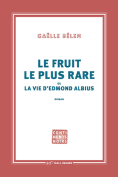
Le fruit le plus rare ou la vie d’Edmond Albius Gaëlle Bélem
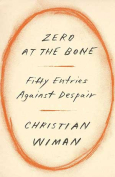
Zero at the Bone: Fifty Entries against Despair Christian Wiman
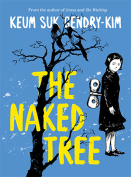
The Naked Tree Keum Suk Gendry-Kim. Trans. Janet Hong
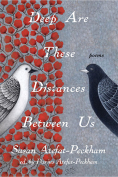
Deep Are These Distances Between Us Susan Atefat-Peckham. Ed. Darius Atefat-Peckham
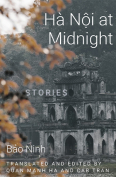
Hà Nội at Midnight Bảo Ninh. Trans. Quan Manh Ha & Cab Tran
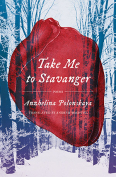
Take Me to Stavanger Anzhelina Polonskaya. Trans. Andrew Wachtel
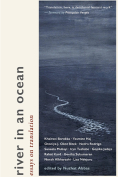
River in an Ocean: Essays on Translation Ed. Nuzhat Abbas
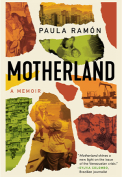
Motherland: A Memoir Paula Ramón. Trans. Julia Sanches & Jennifer Shuye

XENIA, etc. Anthony Caleshu
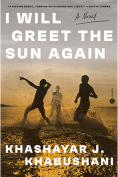
I Will Greet the Sun Again Khashayar J. Khabushani
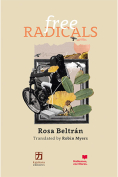
Free Radicals Rosa Beltrán. Trans. Robin Myers
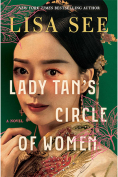
Lady Tan’s Circle of Women Lisa See
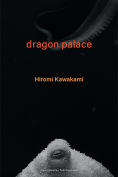
Dragon Palace Hiromi Kawakami. Trans. Ted Goossen
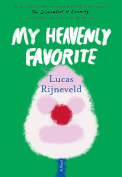
My Heavenly Favorite Lucas Rijneveld. Trans. Michele Hutchison
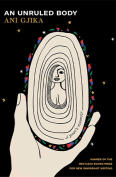
An Unruled Body Ani Gjika
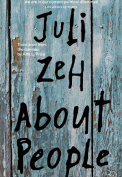
About People Juli Zeh. Trans. Alta L. Price
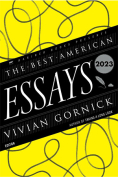
The Best American Essays 2023 Ed. Vivian Gornick & Robert Atwan
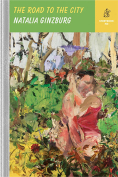
The Road to the City Natalia Ginzburg. Trans. Gini Alhadeff
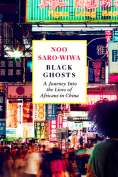
Black Ghosts: A Journey into the Lives of Africans in China Noo Saro-Wiwa
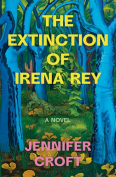
The Extinction of Irena Rey Jennifer Croft
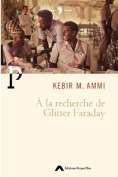
À la recherche de Glitter Faraday Kebir M. Ammi
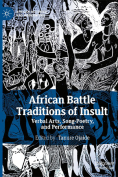
African Battle Traditions of Insult: Verbal Arts, Song-Poetry, and Performance Ed. Tanure Ojaide
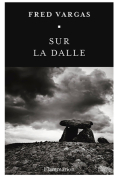
Sur la dalle Fred Vargas
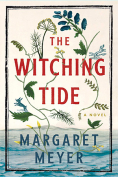
The Witching Tide Margaret Meyer
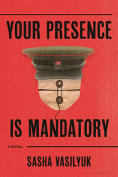
Your Presence Is Mandatory Sasha Vasilyuk
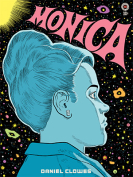
Monica Daniel Clowes
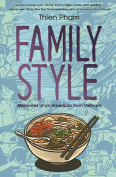
Family Style: Memories of an American from Vietnam Thien Pham
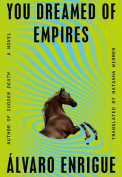
You Dreamed of Empires Álvaro Enrigue. Trans. Natasha Wimmer
E-newsletter, join the mailing list.
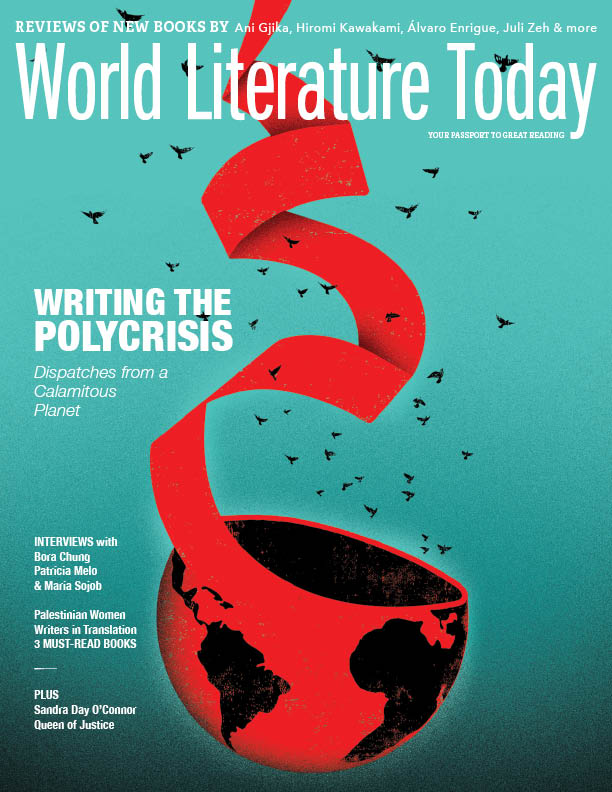
With a cover illustration by Edel Rodriguez, “Writing the Polycrisis” headlines the March/April 2024 issue of World Literature Today , showcasing contributions by nine writers, mainly from the Global South. Additional highlights include interviews, creative nonfiction, booklists, essays, and more! Plus a book review section brimming with the latest must-reads also enliven the issue, making it your latest passport to the best new reading from around the world.
Purchase this Issue »
Table of Contents
Writing the polycrisis: dispatches from a calamitous planet, in every issue, creative nonfiction, book reviews.

Help | Advanced Search
Computer Science > Human-Computer Interaction
Title: collage is the new writing: exploring the fragmentation of text and user interfaces in ai tools.
Abstract: This essay proposes and explores the concept of Collage for the design of AI writing tools, transferred from avant-garde literature with four facets: 1) fragmenting text in writing interfaces, 2) juxtaposing voices (content vs command), 3) integrating material from multiple sources (e.g. text suggestions), and 4) shifting from manual writing to editorial and compositional decision-making, such as selecting and arranging snippets. The essay then employs Collage as an analytical lens to analyse the user interface design of recent AI writing tools, and as a constructive lens to inspire new design directions. Finally, a critical perspective relates the concerns that writers historically expressed through literary collage to AI writing tools. In a broad view, this essay explores how literary concepts can help advance design theory around AI writing tools. It encourages creators of future writing tools to engage not only with new technological possibilities, but also with past writing innovations.
Submission history
Access paper:.
- HTML (experimental)
- Other Formats
References & Citations
- Google Scholar
- Semantic Scholar
BibTeX formatted citation
Bibliographic and Citation Tools
Code, data and media associated with this article, recommenders and search tools.
- Institution
arXivLabs: experimental projects with community collaborators
arXivLabs is a framework that allows collaborators to develop and share new arXiv features directly on our website.
Both individuals and organizations that work with arXivLabs have embraced and accepted our values of openness, community, excellence, and user data privacy. arXiv is committed to these values and only works with partners that adhere to them.
Have an idea for a project that will add value for arXiv's community? Learn more about arXivLabs .

IMAGES
VIDEO
COMMENTS
Table of contents. Step 1: Reading the text and identifying literary devices. Step 2: Coming up with a thesis. Step 3: Writing a title and introduction. Step 4: Writing the body of the essay. Step 5: Writing a conclusion. Other interesting articles.
Step 1: Read the Text Thoroughly. Literary analysis begins with the literature itself, which means performing a close reading of the text. As you read, you should focus on the work. That means putting away distractions (sorry, smartphone) and dedicating a period of time to the task at hand.
How to Write a Literary Analysis. These 4 steps will help prepare you to write an in-depth literary analysis that offers new insight to both old and modern classics. 1. Read the text and identify literary devices. As you conduct your literary analysis, you should first read through the text, keeping an eye on key elements that could serve as ...
The term regularly used for the development of the central idea of a literary analysis essay is the body. In this section you present the paragraphs (at least 3 paragraphs for a 500-750 word essay) that support your thesis statement. Good literary analysis essays contain an explanation of your ideas and evidence from the text (short story,
22 Essential Literary Devices and How to Use Them In Your Writing. Literary devices are specific techniques that allow a writer to convey a deeper meaning that goes beyond what's on the page. Literary devices work alongside plot and characters to elevate a story and prompt reflection on life, society, and what it means to be human.
Body Paragraph 4: Literary Devices and Techniques. Identify and analyze literary devices such as symbolism, imagery, metaphors, and foreshadowing. Discuss how these elements enhance the overall impact of the work. Conclusion. Summarize the main points discussed in the body paragraphs. Restate the thesis in a fresh way.
Tone: A literary device that reflects the writer's attitude toward the subject matter or audience of a literary work. rhyme or rhythm: Rhyme is a literary device, featured particularly in poetry, in which identical or similar concluding syllables in different words are repeated. Rhythm can be described as the beat and pace of a poem
A literary analysis essay typically consists of an introduction, three body paragraphs, and a conclusion. The introduction should provide general information about the author and the text itself, while the body paragraphs should focus on specific points from the text that support your overall thesis statement.
A Literary-Device Thesis Sentence: First, let's talk about writing a thesis using literary devices. Literary devices are character, conflict, point of view, symbolism, irony, metaphor, simile, denotation, connotation, & etc. Remember two things about using literary devices to write an essay: (1) all pieces of literature—fiction, poetry ...
Some common types of literary devices include: Figurative language - metaphors and similes create images and comparisons for better understanding. Sound devices - alliteration and onomatopoeia contribute to the rhythm, mood, and emphasis of the text. Narrative devices - foreshadowing and flashbacks affect the structure of the story and ...
Read our tips to learn how to write a literary analysis essay flawlessly and get the best grade: 1. Read carefully. Choose a cozy place for reading - it's where no one will disturb you, and noise won't interrupt the process. Only in this case, you'll notice the most important details.
100 common literary devices, with examples. 1. Alliteration. Alliteration describes a series of words in quick succession that all start with the same letter or sound. It lends a pleasing cadence to prose and Hamlet and the dollar as currency in Macbeth.
Writing the Body. Here are the steps to follow when writing a body paragraph for a literary analysis essay: Start with a topic sentence: The topic sentence should introduce the main point or argument you will be making in the paragraph. It should be clear and concise and should indicate what the paragraph is about.
Tip 1: Read Closely and Carefully. First off, you'll need to make sure that you're reading very carefully. Resist the temptation to skim or skip any sections of the text. If you do this, you might miss some literary devices being used and, as a result, will be unable to accurately interpret the text.
Step 3: Collect the Evidence and Write a Thesis. Now that you have your topic, it's time to gather evidence from the text to support your analysis. Look for quotes, passages, or examples that relate to your chosen topic. Once you have your evidence, use it to craft your thesis statement .
A writer's job is to engage readers through words. Vignettes—poetic slices-of-life—are a literary device that bring us deeper into a story. Vignettes step away from the action momentarily to zoom in for a closer examination of a particular character, concept, or place. Writers use vignettes to shed light on something that wouldn't be visible in the story's main plot.
When to Use Literary Devices. By definition, literary devices occur in literature rather than essays. So, strictly speaking, they belong to creative writing. Rhetorical devices would be the ones used in an essay. Again, though, literary devices are basically the same as rhetorical devices, so this distinction doesn't matter too much.
Heather Ringo & Athena Kashyap. City College of San Francisco via ASCCC Open Educational Resources Initiative. Table of contents. Example 1: Poetry. Example 2: Fiction. Example 3: Poetry. Attribution. The following examples are essays where student writers focused on close-reading a literary work.
1. Metaphor. One of the most common literary devices, metaphors, is used across essays, books, songs, poems, and speeches. They are used to compare two completely unrelated objects. The idea is to provide a more robust description such that the reader interprets it better.
The Literary Thesis Statement. Literary essays are argumentative or persuasive essays. Their purpose is primarily analysis, but analysis for the purposes of showing readers your interpretation of a literary text. So the thesis statement is a one to two sentence summary of your essay's main argument, or interpretation.
Exploring literary devices through essay writing offers a unique opportunity to engage with literature at a deeper level. By delving into the intricacies of how writers use these devices to convey their ideas, students can develop a richer understanding and appreciation of the art of storytelling. Happy writing!
I was particularly drawn to the lyrical essays in this collection. For example, Palestinian-born Yasmine Haj's "Rast" organizes her wisdom-infused essay into poetic prose segments about various aspects of translation. In the first section, titled "On Music," Haj equates translation with survival: A human's first task is to translate.
The essay then employs Collage as an analytical lens to analyse the user interface design of recent AI writing tools, and as a constructive lens to inspire new design directions. Finally, a critical perspective relates the concerns that writers historically expressed through literary collage to AI writing tools. In a broad view, this essay ...